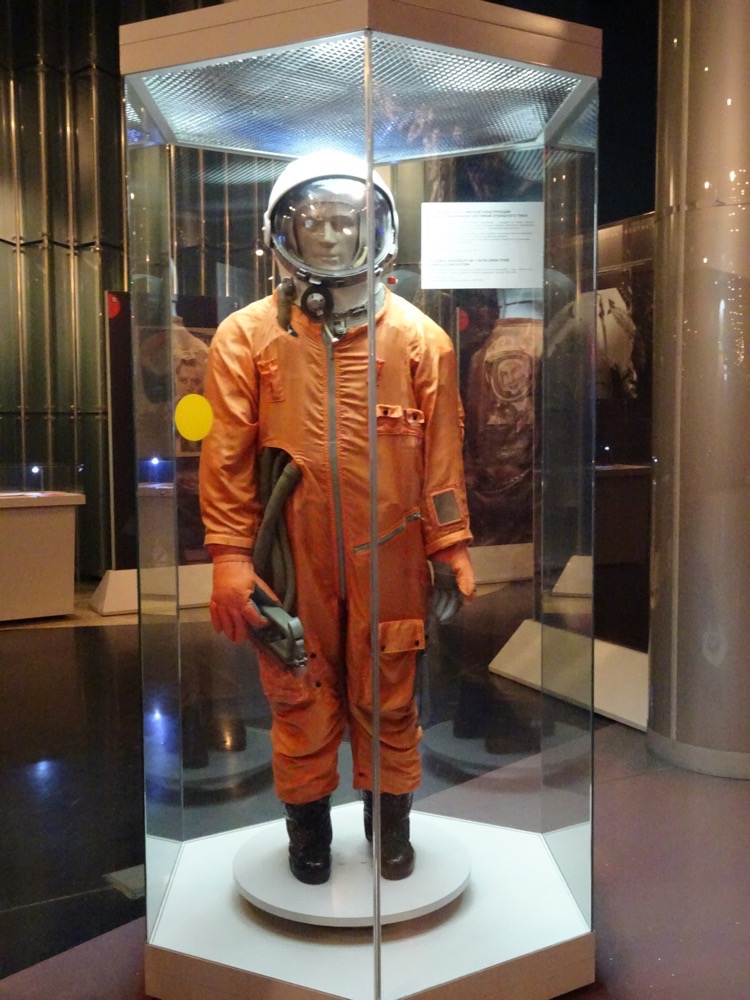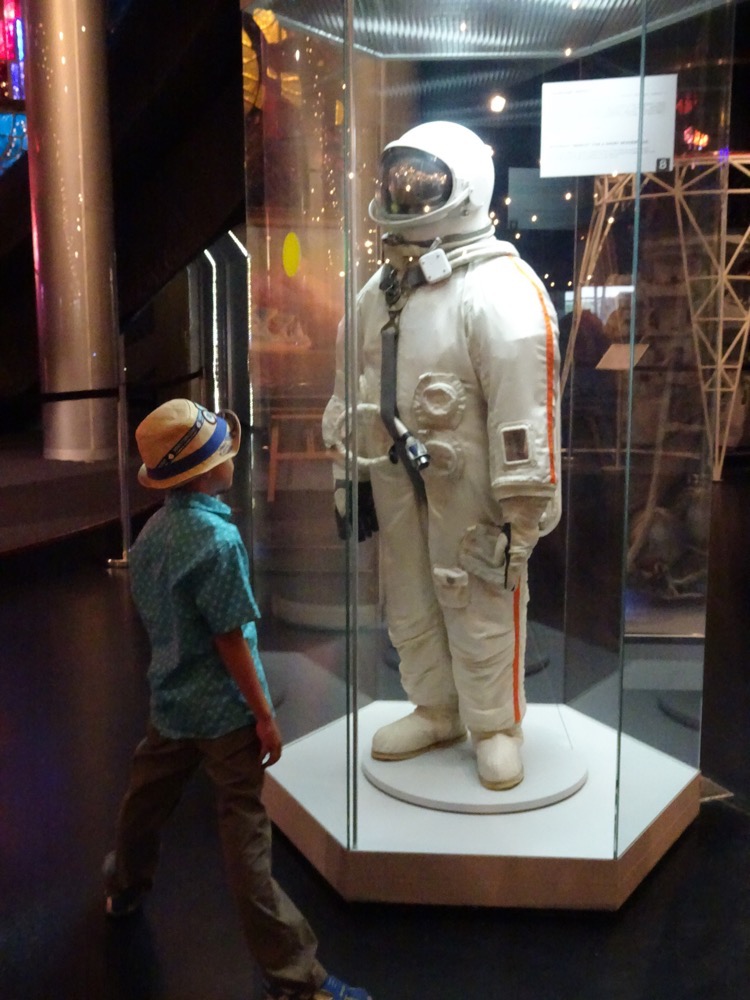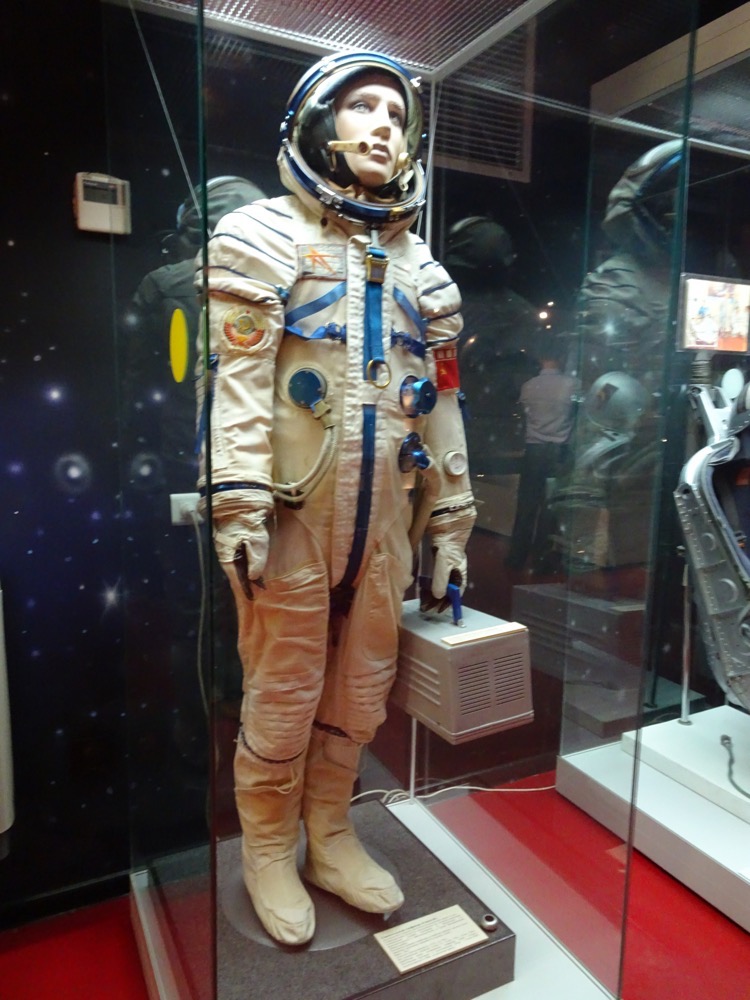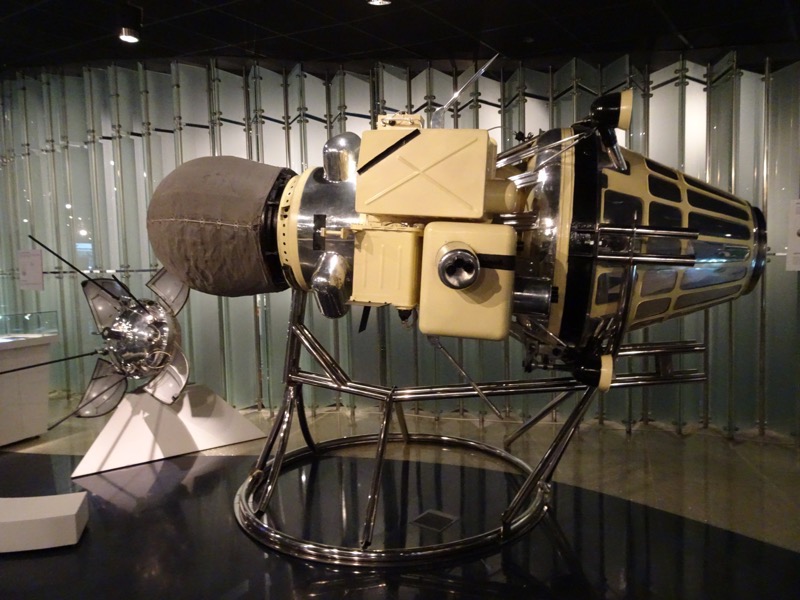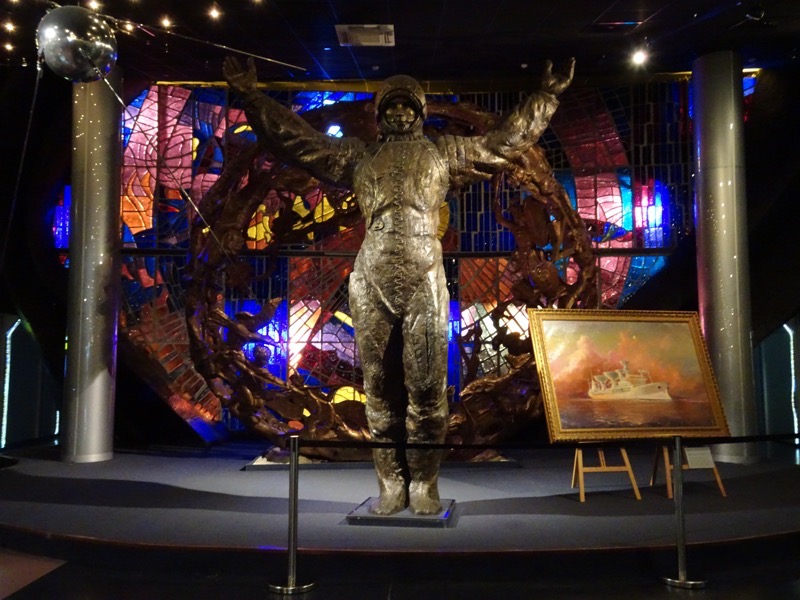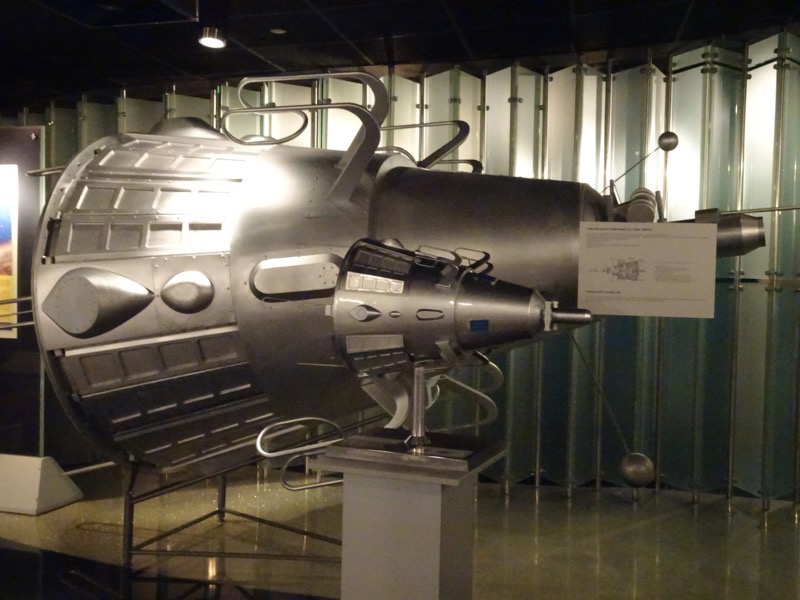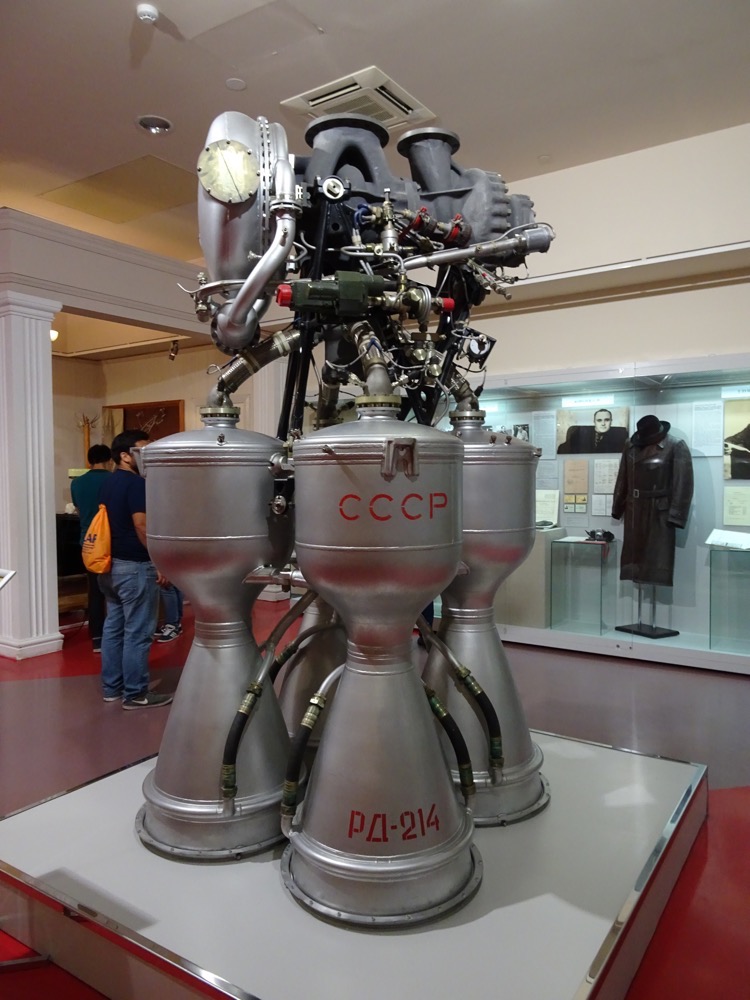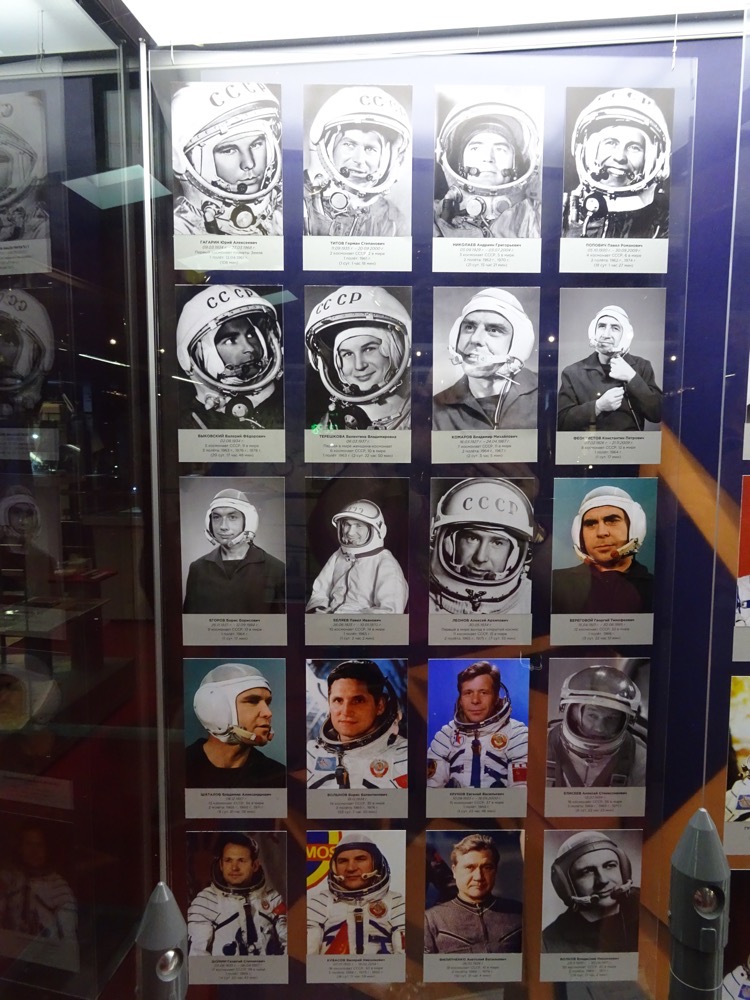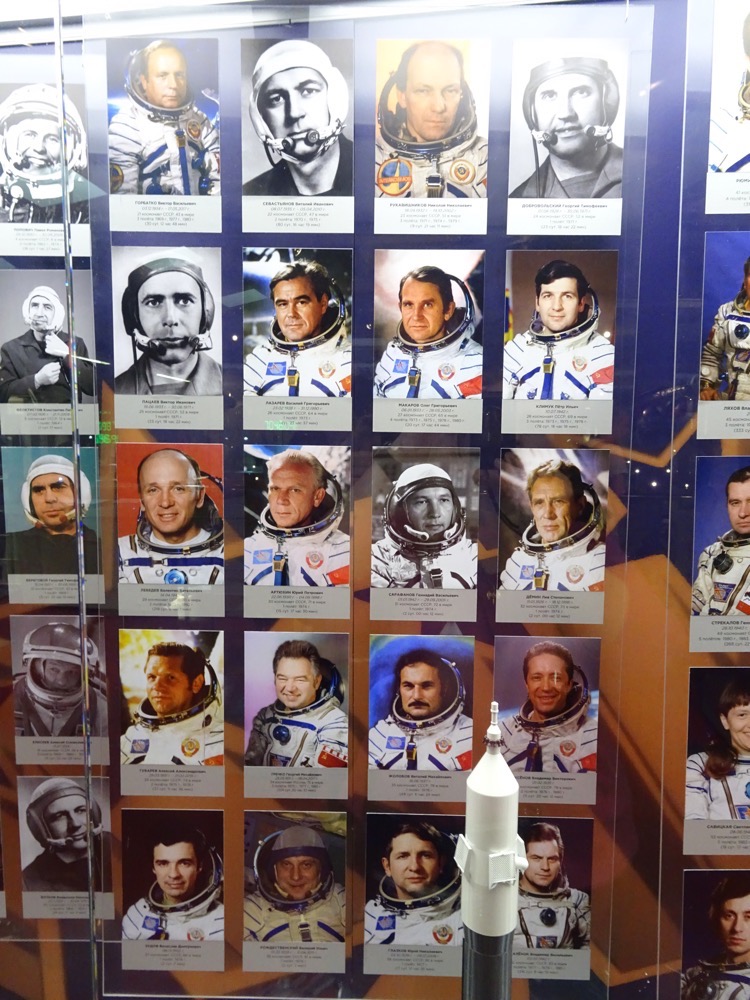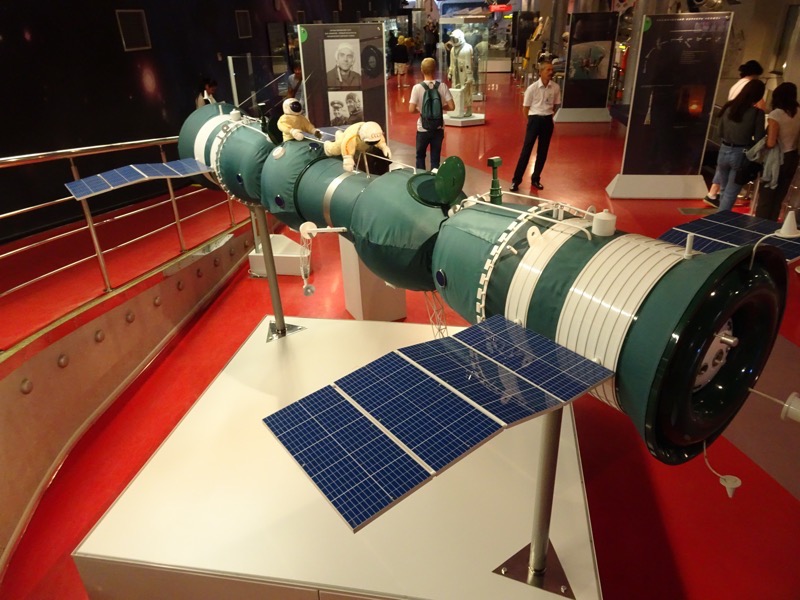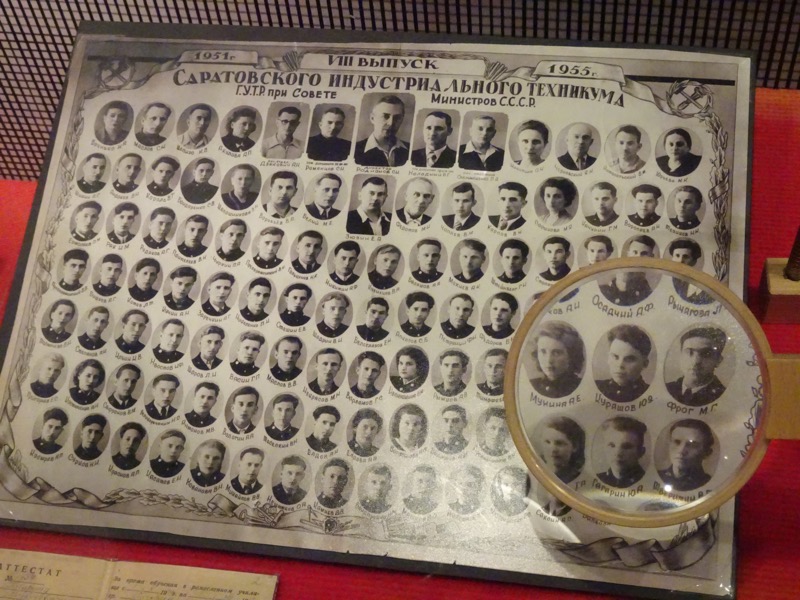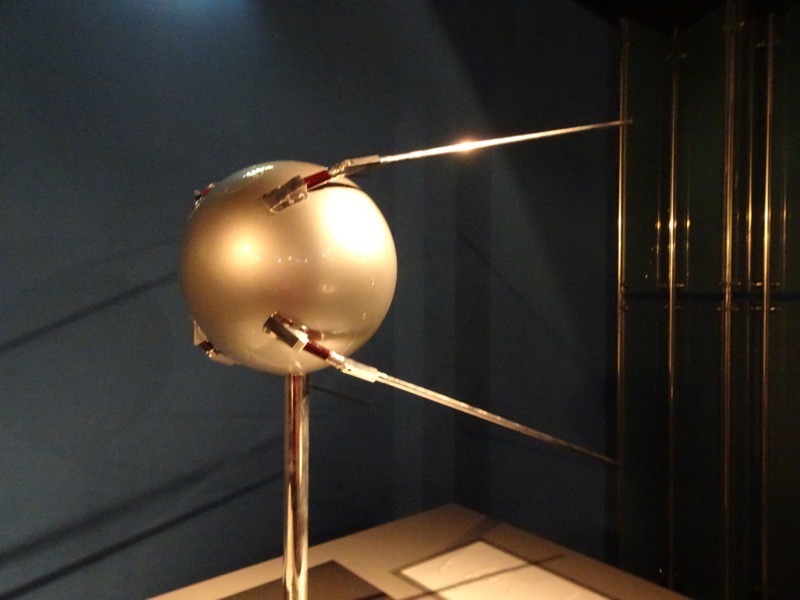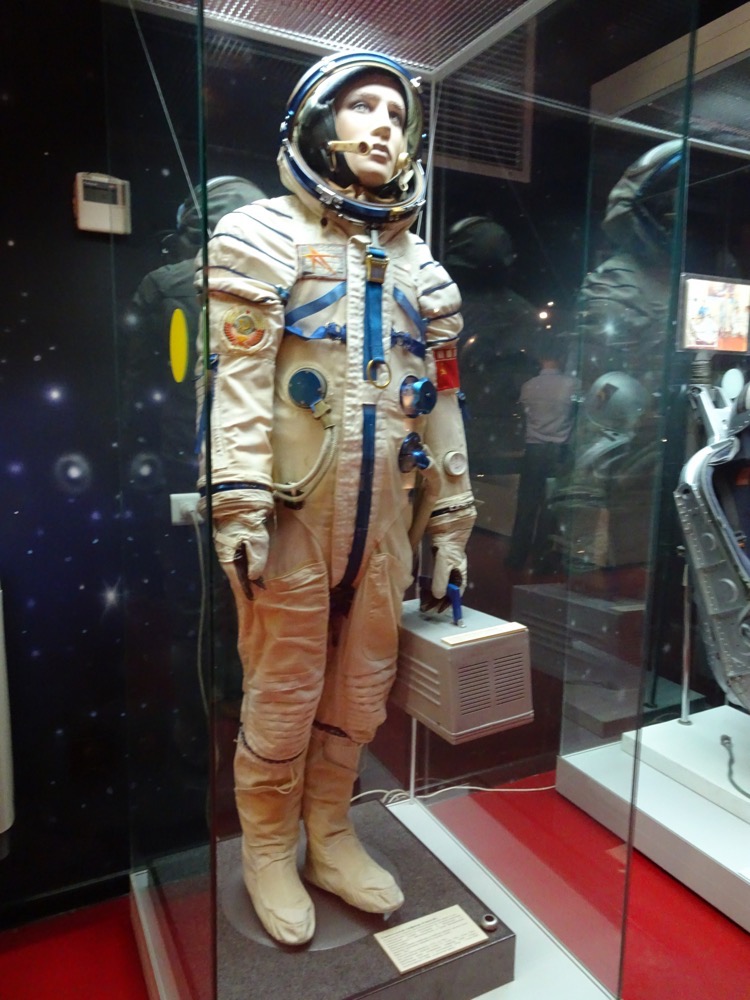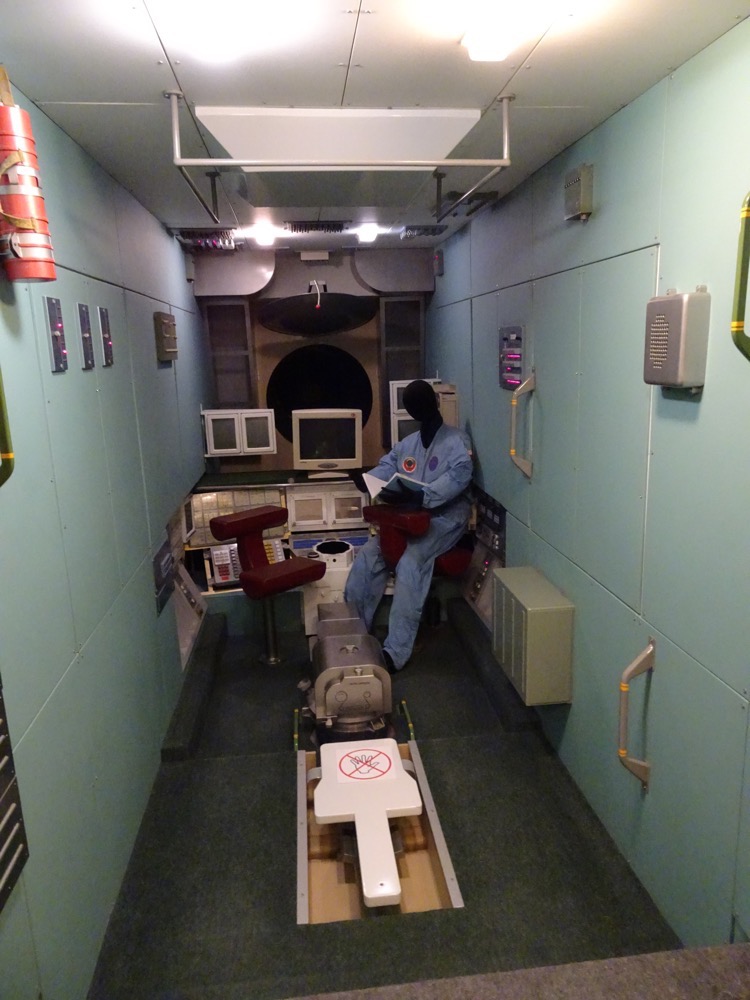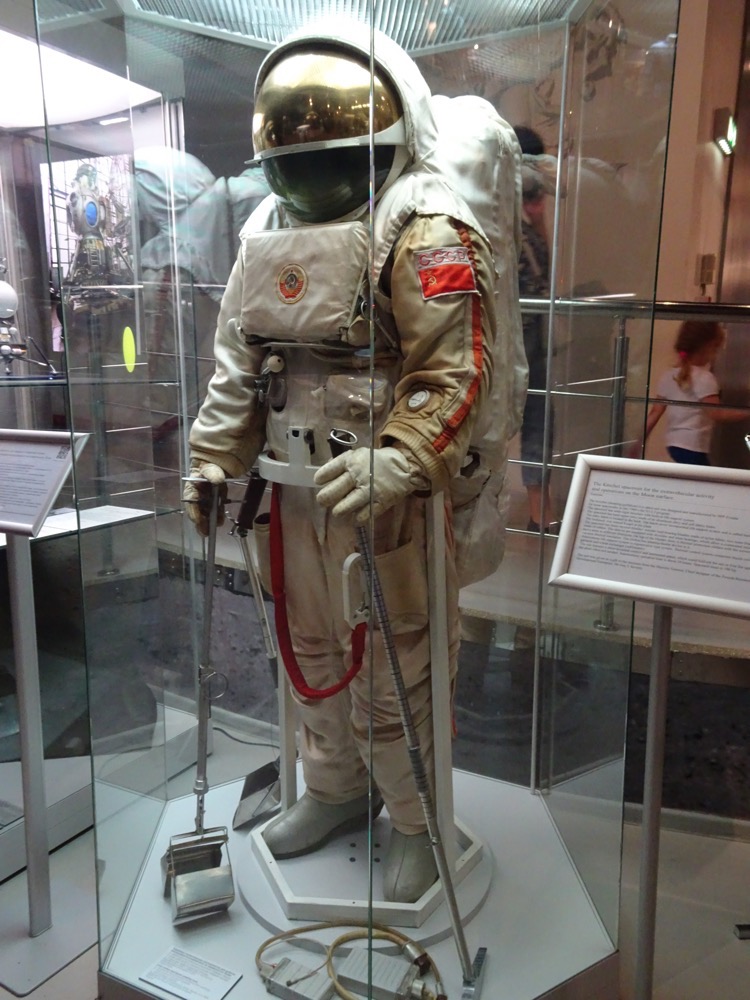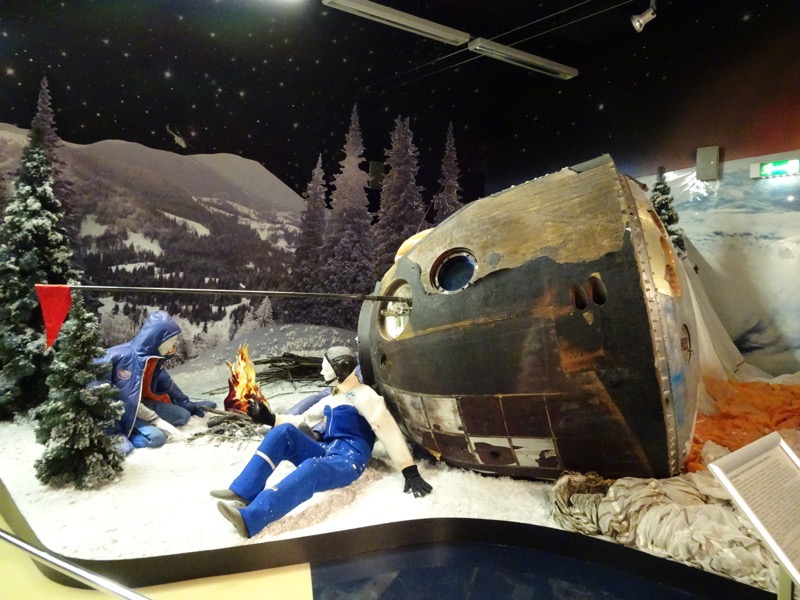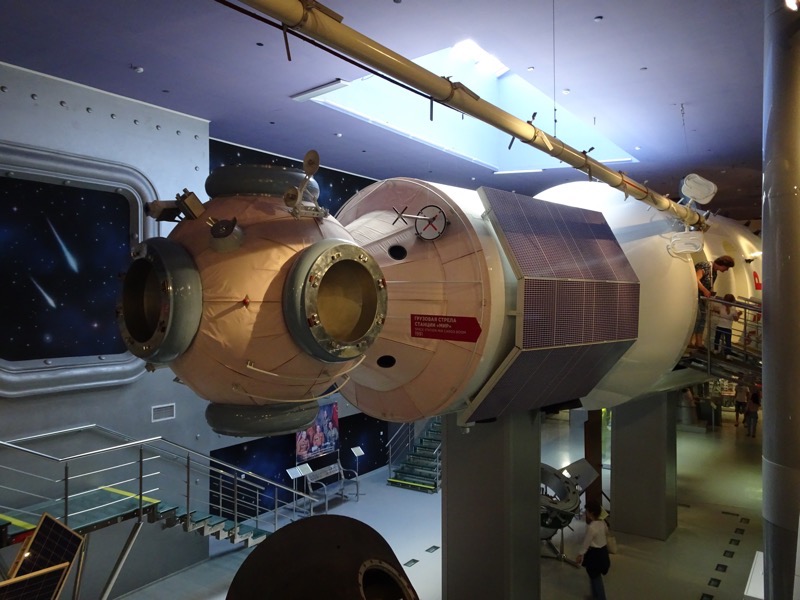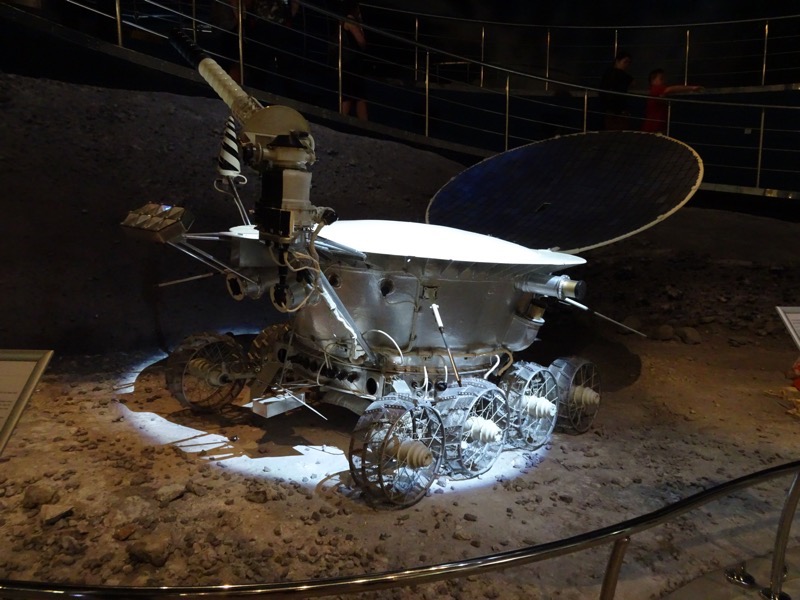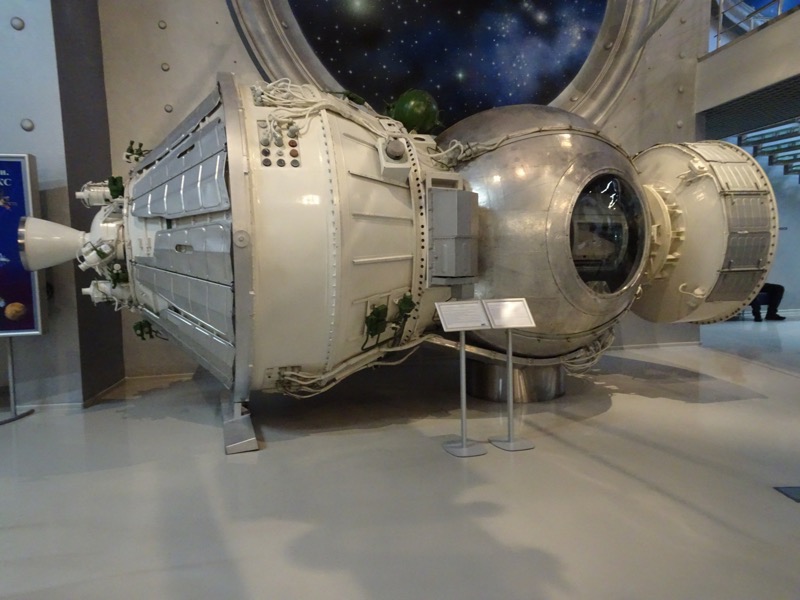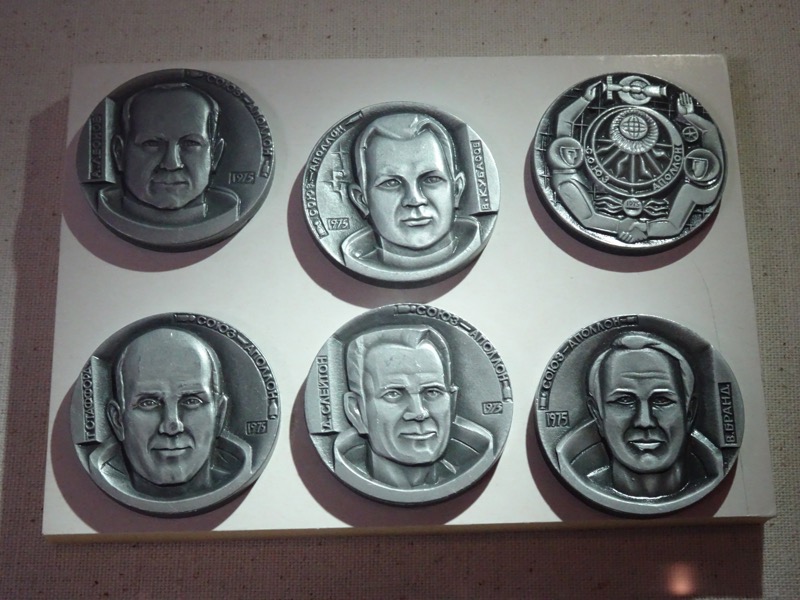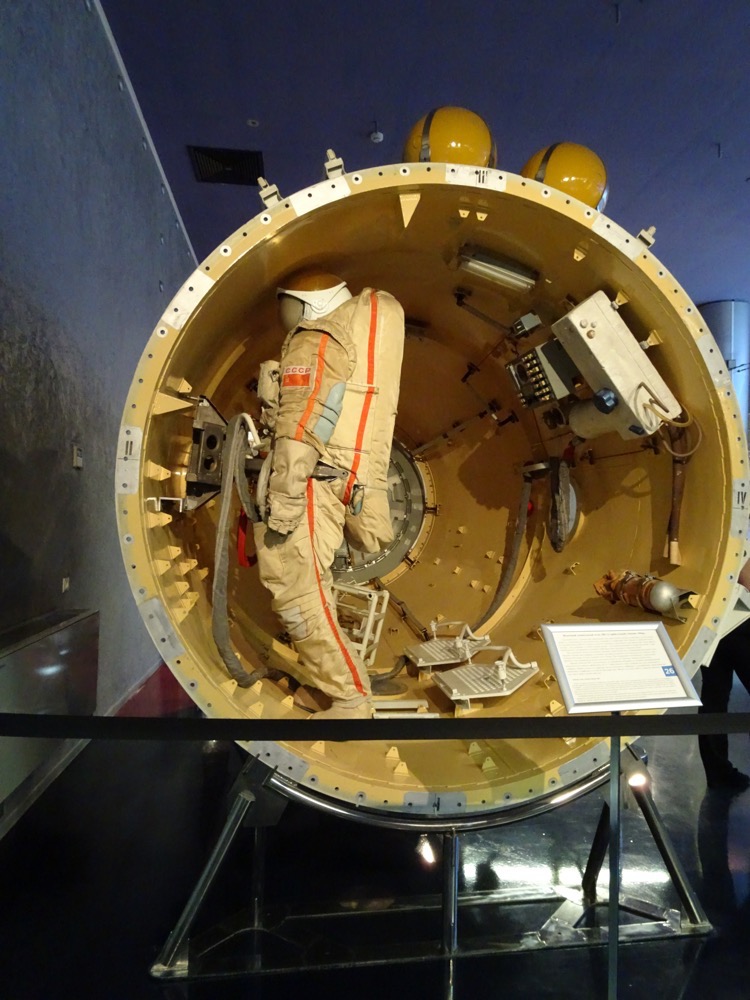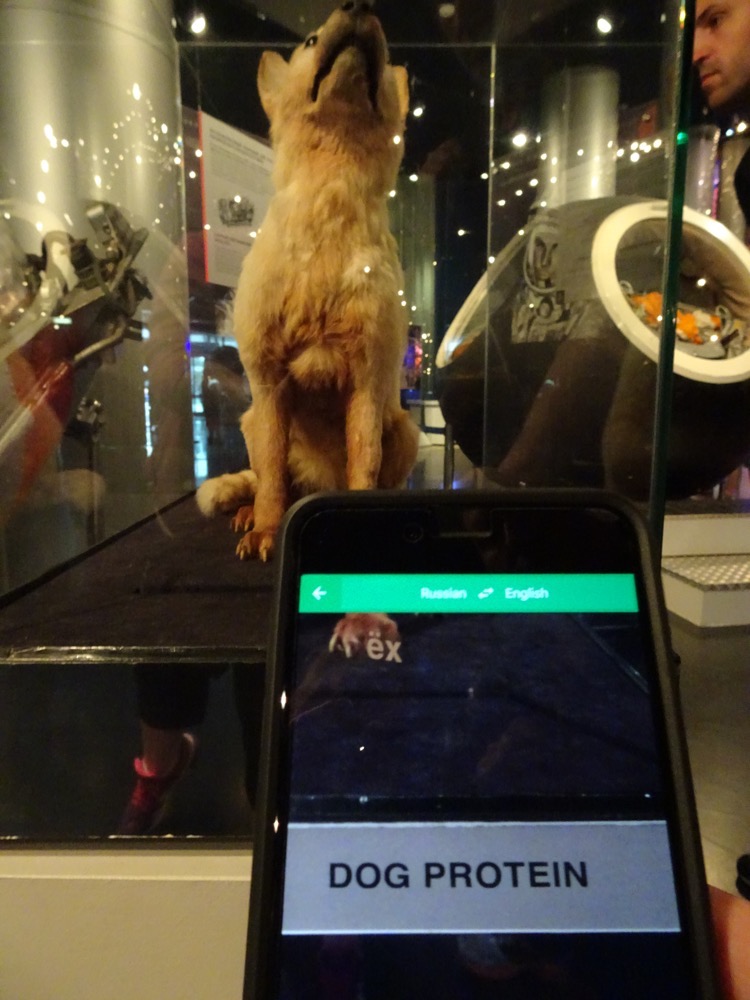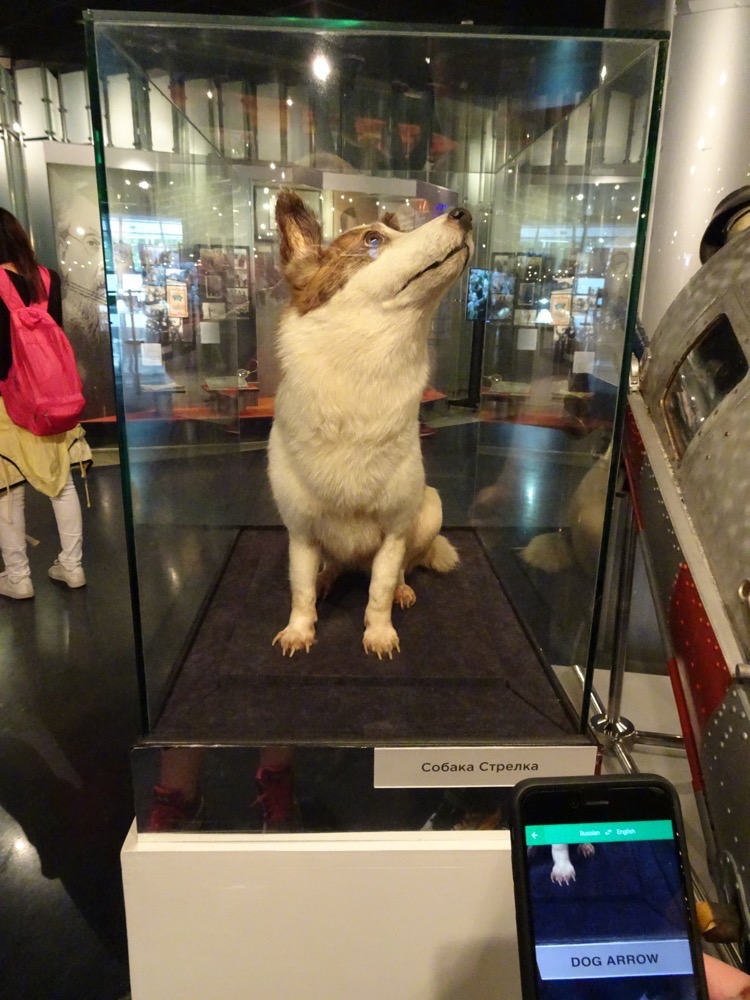Up and at ’em! We had a quick and early breakfast this morning in the hopes that we could get ourselves up to Red Square before the hordes of tourists arrived so we could take some better photographs of the Cathedral, without people and in better light. The efforts paid off and I must have taken about 50 photos, many of which were completely devoid of tourists! Sweet success! Anything else that happens today is now pure gravy! 😀
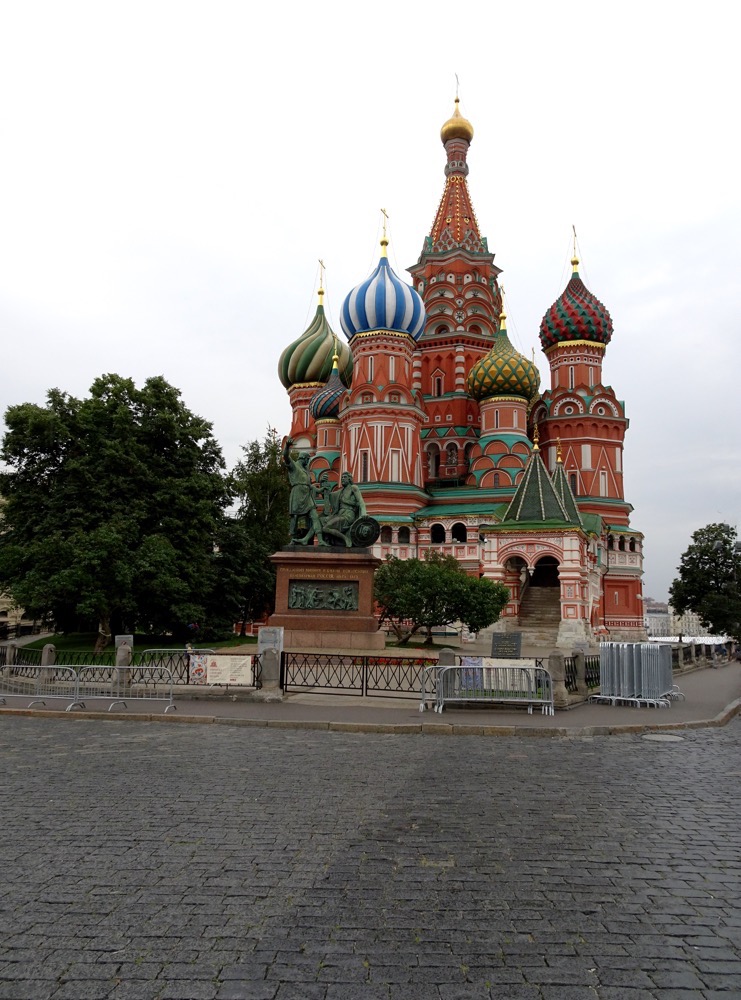 Such an impressively unique building.
Such an impressively unique building. 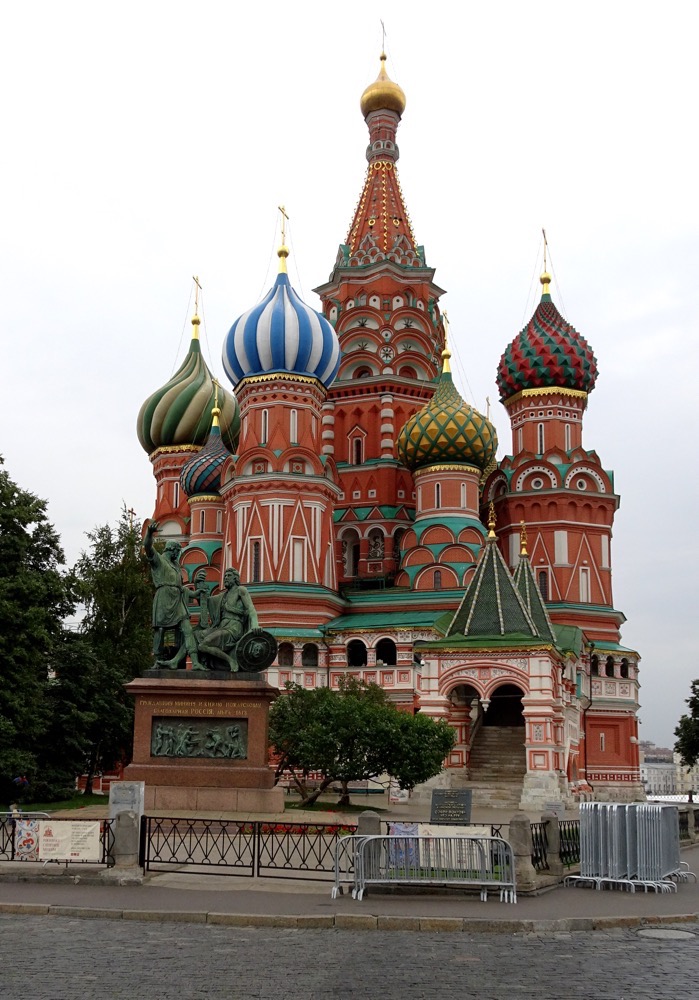
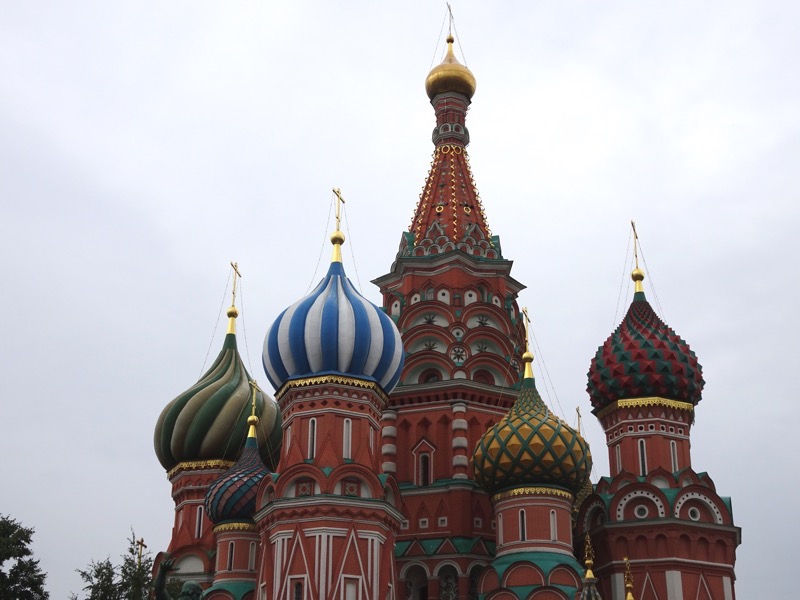 Spasskaya Tower – currently the exit from the Moscow Kremlin State Museum precinct, which we are going to explore this morning before doubling back on St Basil’s to go inside once it is open.
Spasskaya Tower – currently the exit from the Moscow Kremlin State Museum precinct, which we are going to explore this morning before doubling back on St Basil’s to go inside once it is open.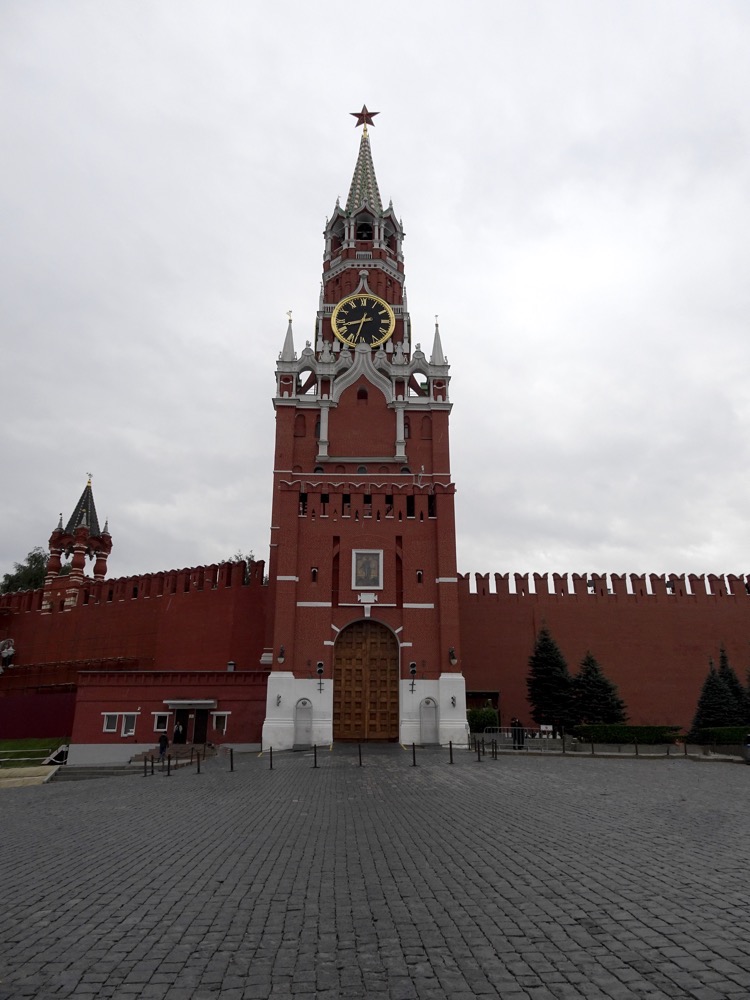 Red Square – currently drowning in bleachers under construction for an upcoming military tattoo.
Red Square – currently drowning in bleachers under construction for an upcoming military tattoo.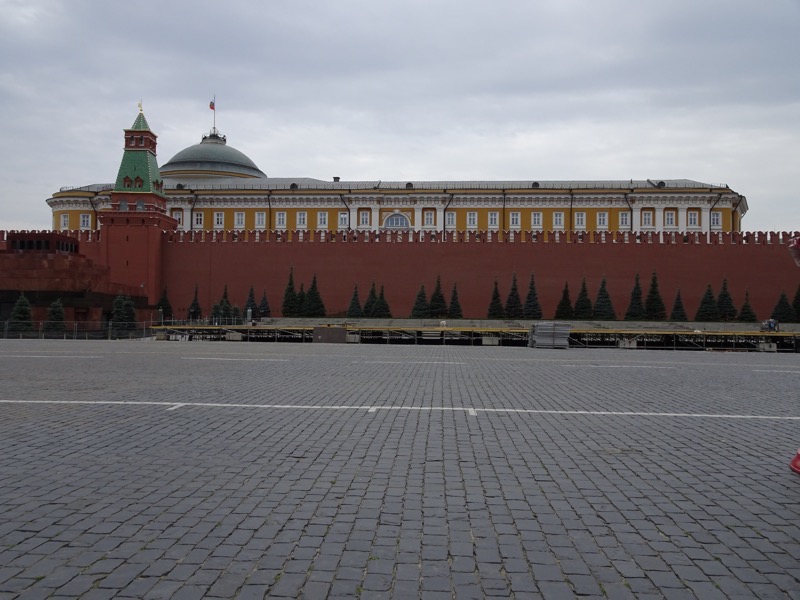 So, first up the Kremlin. We arrived early to line up and get tickets – along with everyone else it seems! No Red Square was empty! There were hundreds of people queued here to buy tickets to enter the complex. Mr K, who like me, tends to do some research before arriving at our destination, walked right around the queues and used an automated machine in the ticket hall to buy our tickets! An hour saved right there… at least! We did, however, line up with massive lines of tour groups at the entrance gates – for about 15 minutes before realising they were staggering the entry of said large tour groups, and that people who were entering on their own could just march right around those huge groups and walk on in… which we promptly did once it dawned on us. This is one of the disadvantages of not speaking the language – there were possibly plenty of people around us saying that the long queue was for tour groups only, but we couldn’t read any of the signs and couldn’t overhear any instructions. Oh well.
So, first up the Kremlin. We arrived early to line up and get tickets – along with everyone else it seems! No Red Square was empty! There were hundreds of people queued here to buy tickets to enter the complex. Mr K, who like me, tends to do some research before arriving at our destination, walked right around the queues and used an automated machine in the ticket hall to buy our tickets! An hour saved right there… at least! We did, however, line up with massive lines of tour groups at the entrance gates – for about 15 minutes before realising they were staggering the entry of said large tour groups, and that people who were entering on their own could just march right around those huge groups and walk on in… which we promptly did once it dawned on us. This is one of the disadvantages of not speaking the language – there were possibly plenty of people around us saying that the long queue was for tour groups only, but we couldn’t read any of the signs and couldn’t overhear any instructions. Oh well.
Our only disappointment in this morning’s endeavours was the discovery that there were only 200 tickets available to enter the Kremlin Armoury for the day and that we were definitely not going to be one of the lucky 200 to get some judging by the never ending line for them. So we had to abandon that part of our planned day.
C’est la vie. We will just have to come back some other day. We got away from the tour groups and entered the Kremlin. The first building you notice is the Kremlin State Palace, which is better known apparently as the Kremlin Palace of Congresses. It is a very large modern building just inside the complex of the Kremlin and it stands out like dog’s balls as you enter through the Troitskaya Tower. It feels like it doesn’t belong in here at all. More than half the building, 17m of it, is underground and it contains over 800 rooms, including the main hall which seats about 6000 people. It was mainly used for state congresses but now is also used for concerts and such – the Bolshoi ballet performed here while their theatre was undergoing restorations, and people like Tina Turner, Cher and Mariah Cary and Lenard Cohen have performed here as well. Unfortunately, rock concerts are the only time plebs like us are allowed inside.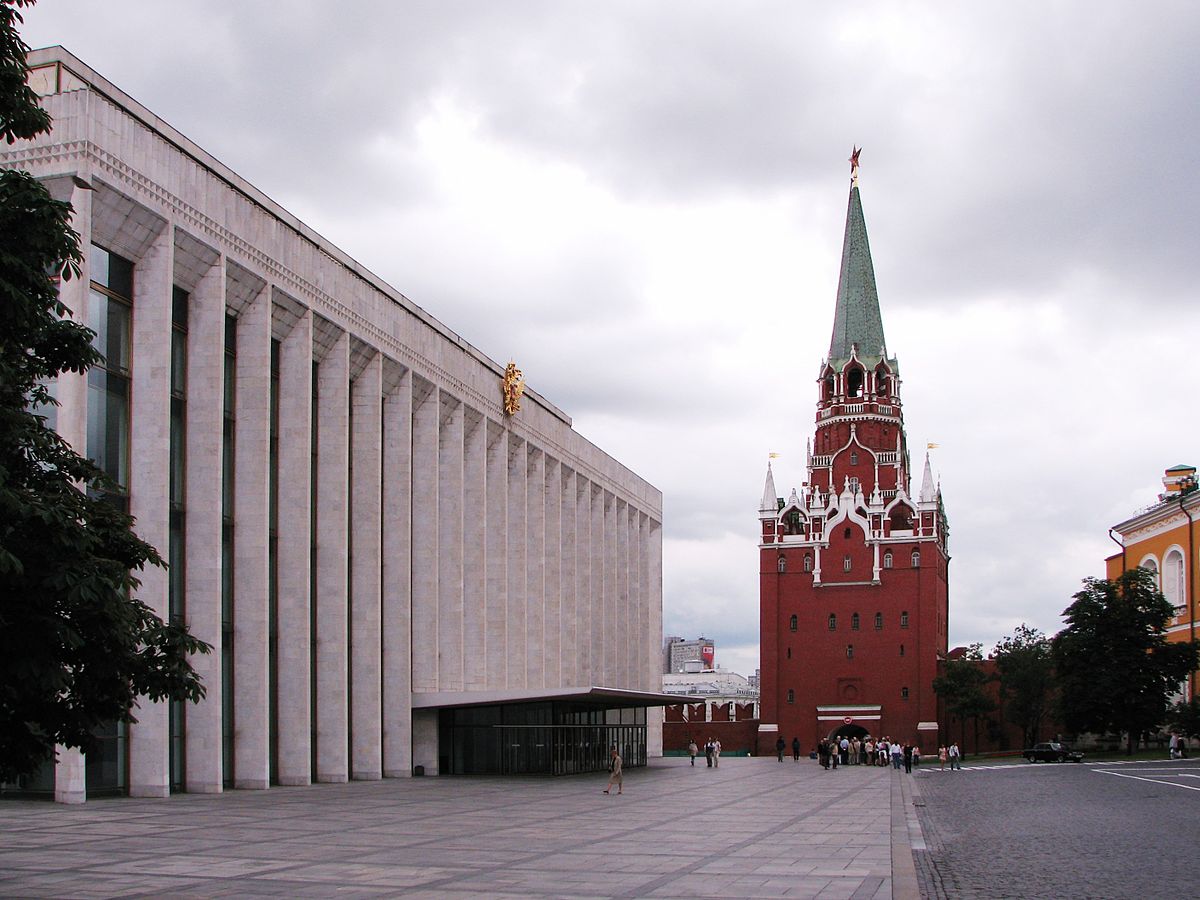
The Patriarch’s Palace and the Church of the Twelve Apostles houses museum exhibits that represent the everyday life of wealthy 17thC Muscovites. Many of the items in the exhibit were owned by famous people – items of patriarch clothing, silverware, household items, paintings and furniture were on display. Unfortunately, there is a no photography allowed – as per usual. But I did manage to sneak a couple of pics because the staff here were heavily distracted by a large Chinese tour group who walked in just behind us being loud and setting off alarms by walking into barrier ropes… like I said, the group kept them very distracted. We were ushered quickly through one room that was set up like a 17thC home interior with exquisite furniture, lovely caskets and household items, only to see the museum staff then hurriedly close the door to that room entirely, so that the tour group couldn’t enter – the staff were probably concerned that the tour group would have all tried to squeeze into the small space and put the items on display at risk!
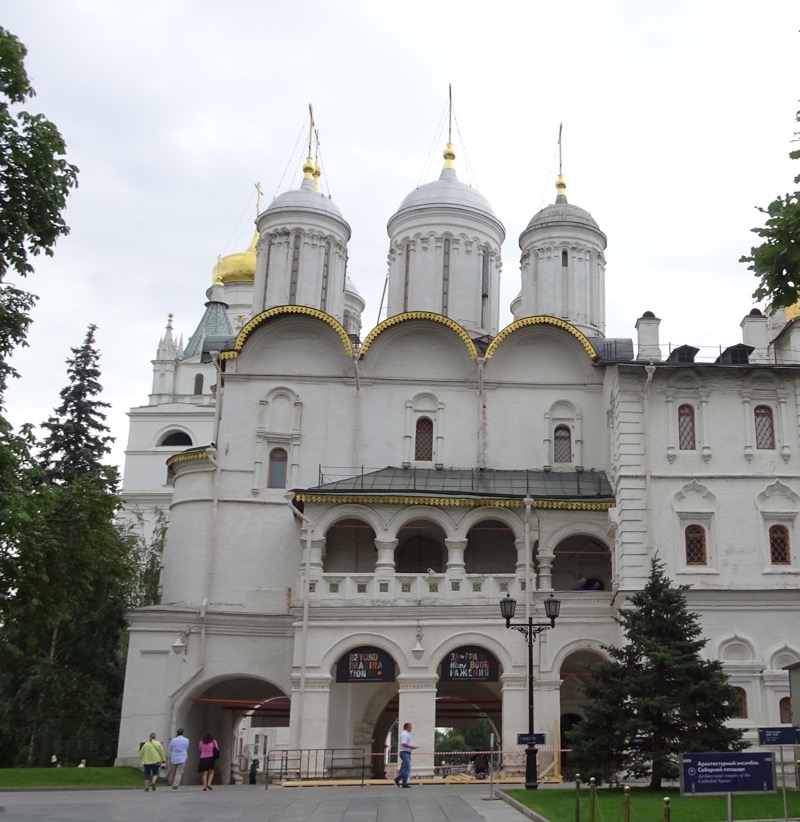
The iconostasis from the Church of the Twelve Apostles. This altar/edifice was moved here in 1929 from the cathedral of the demolished site of the Ascension Monastery. Oddly it reminded me of many of the displaced altars I’ve seen in various monasteries and museum sites in South America… similar iconography, loads of heavy gilt woodwork, and not entirely dissimilar painting styles and subject matter.
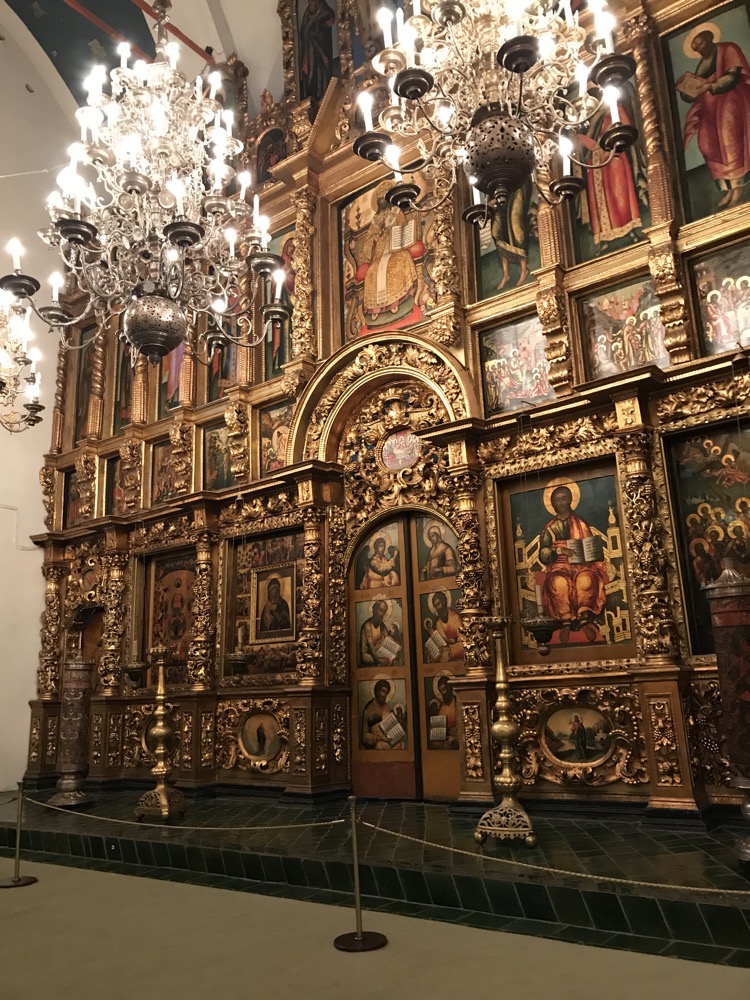 A medieval casket
A medieval casket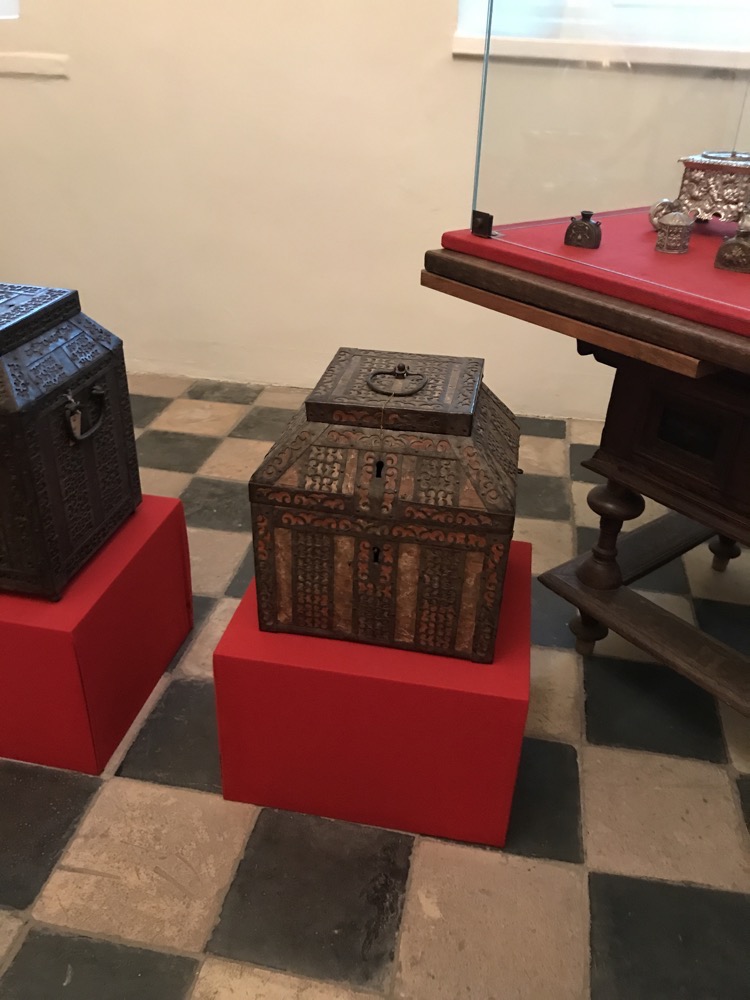 I tried to sneak a photograph of this drinking vessel – it was made in Nuremberg in the 1600s in the shape of a crowned person with chicken’s feet. These style of goblets were made to be kept in cupboards to amuse guests, but not for actual use…?
I tried to sneak a photograph of this drinking vessel – it was made in Nuremberg in the 1600s in the shape of a crowned person with chicken’s feet. These style of goblets were made to be kept in cupboards to amuse guests, but not for actual use…? 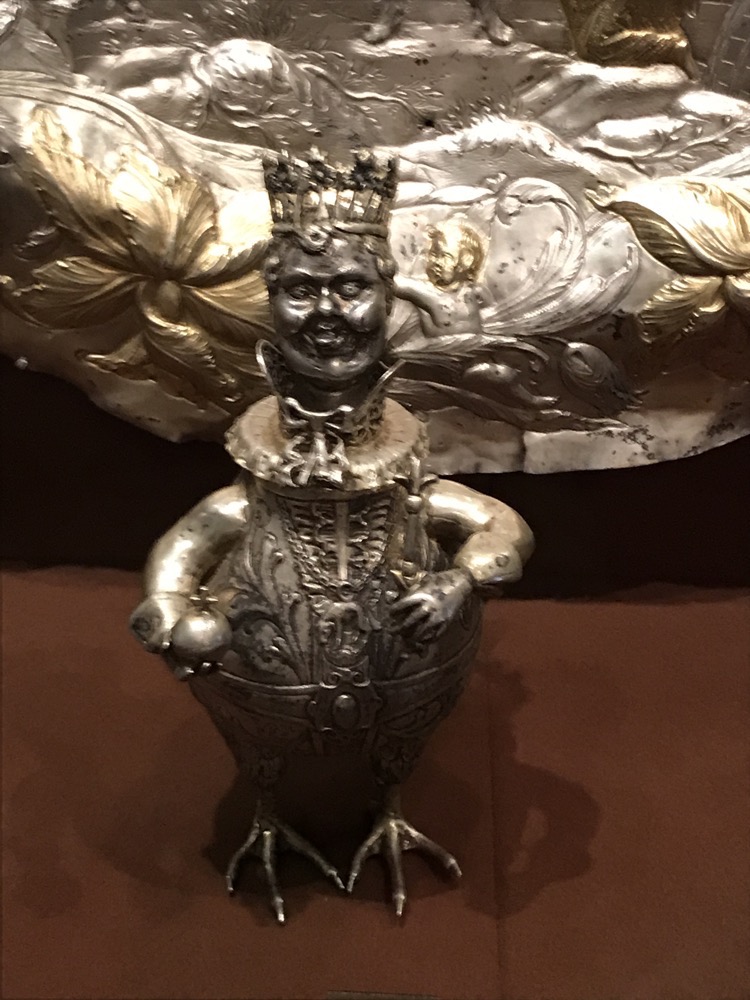
Unfortunately, I could not get photos of the textiles in the Patriarch’s Palace, of which there were many elaborately embroidered and beaded items… and, of course, there is no guide book with pictures of them either. *sad face*
Around the corner from the Patriarch’s Palace is the Tsar Cannon. The Tsar Cannon is the largest piece of medieval artillery in the Moscow Kremlin museum and it is an amazing testament to the art of Russian artillery casting… cast in bronze in 1586, right here in Moscow by a master bronze caster named Andrey Chokhov, it was never actually used in war. It apparently has signs of having been fired once, so perhaps test fired and it is the largest calibre bombard in the world, but it has never been fired in war. Now it seems it is mainly a major tourist attraction – and I know this based on how long you have to wait to get a photo with no one standing in front of it! 😉 It is seriously impressive.
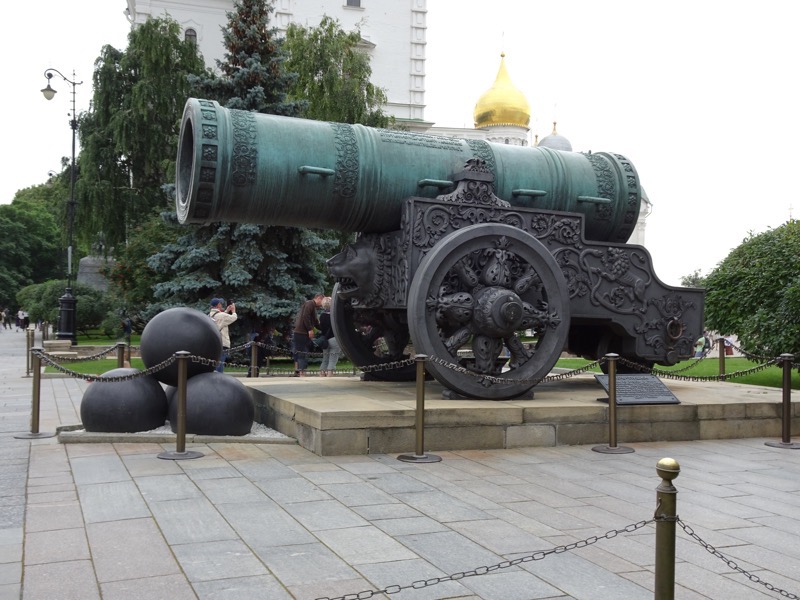
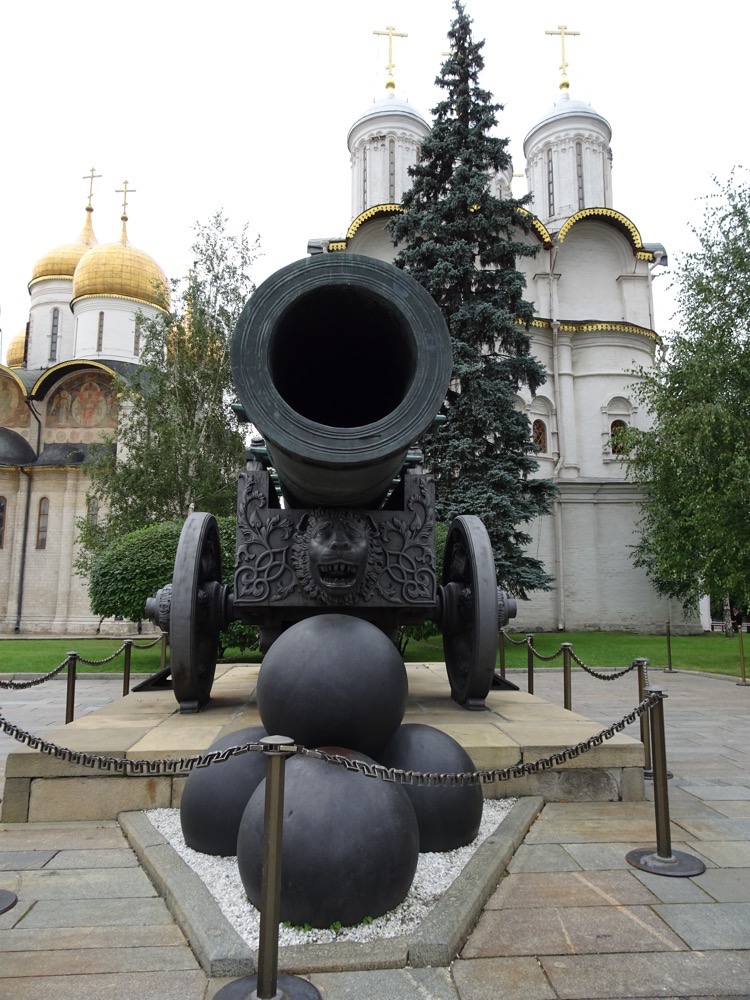
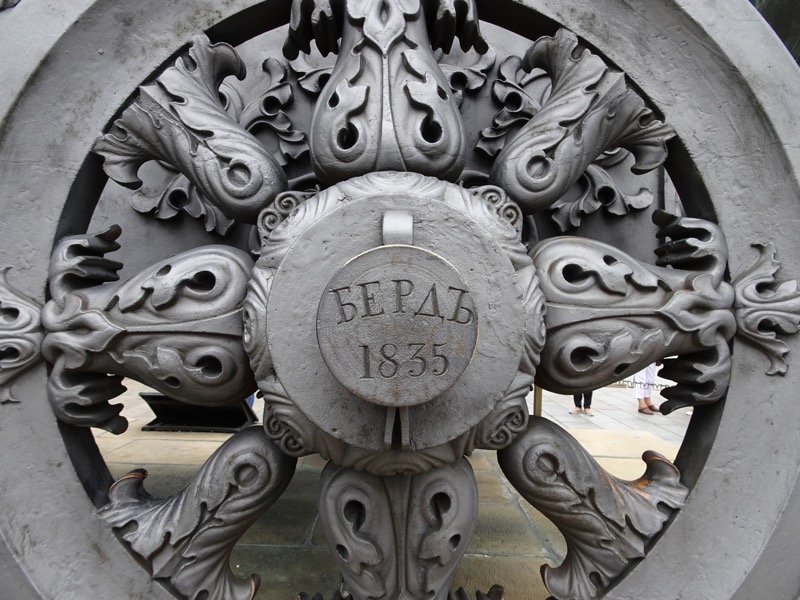
Next stop was Uspensky Sobor, the Assumption Cathedral, which is an Orthodox church located in the centre of Cathedral Square inside the Kremlin. It was built around 1475-79, having been designed by an Italian architect, Aristotle Fioravanti. It is the main cathedral in the square and contains the burial tombs of all the Moscow Patriarchs of the initial patriarchal period (roughly 1580-1720). Of course, you are not allowed to take photographs inside, so I have blatantly stolen some photos from Wikipedia that have obviously been taken by braver souls than I!
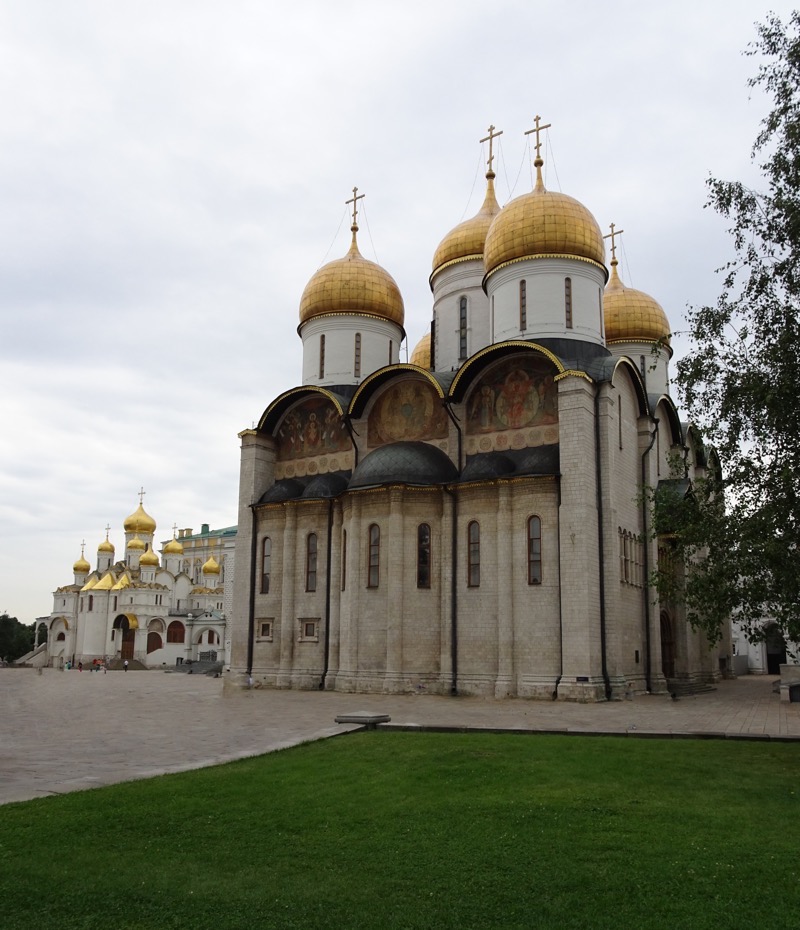 Fresco of the Virgin Mary and the Archangels Micheal and Gabriel.
Fresco of the Virgin Mary and the Archangels Micheal and Gabriel.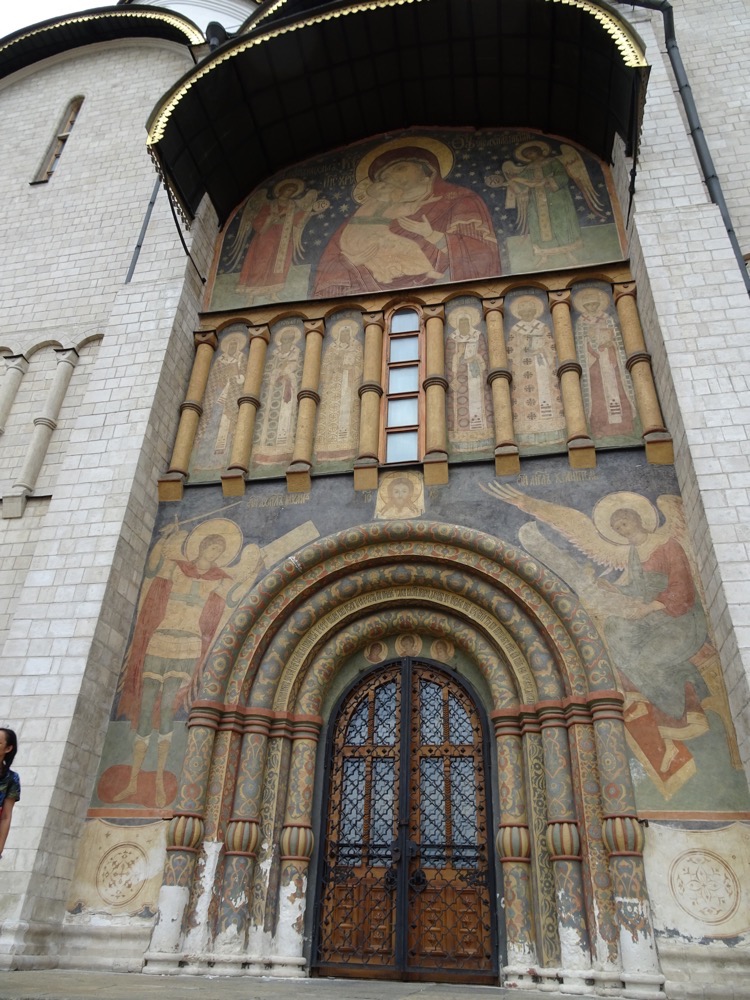
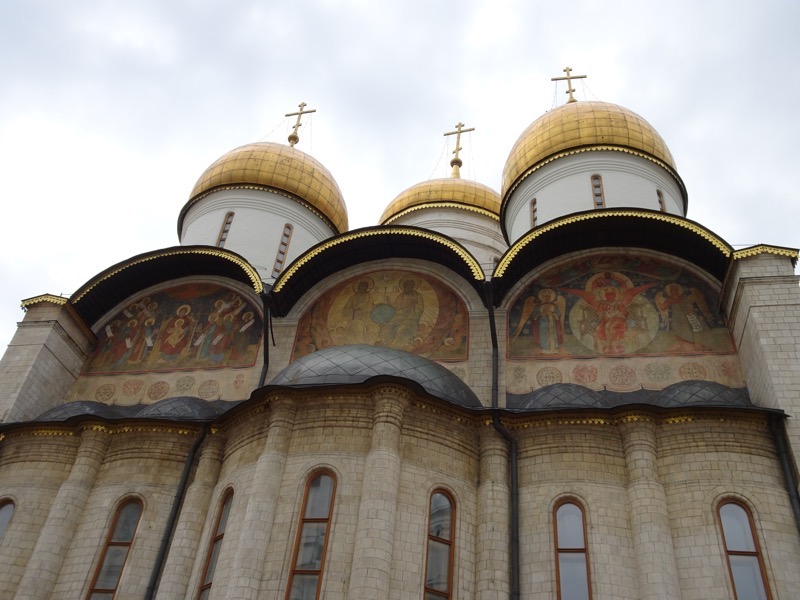 There are 246 scenes painted in the frescoes inside the church with 2066 individuals depicted… no, I didn’t count them, that is what guide books are for!
There are 246 scenes painted in the frescoes inside the church with 2066 individuals depicted… no, I didn’t count them, that is what guide books are for!
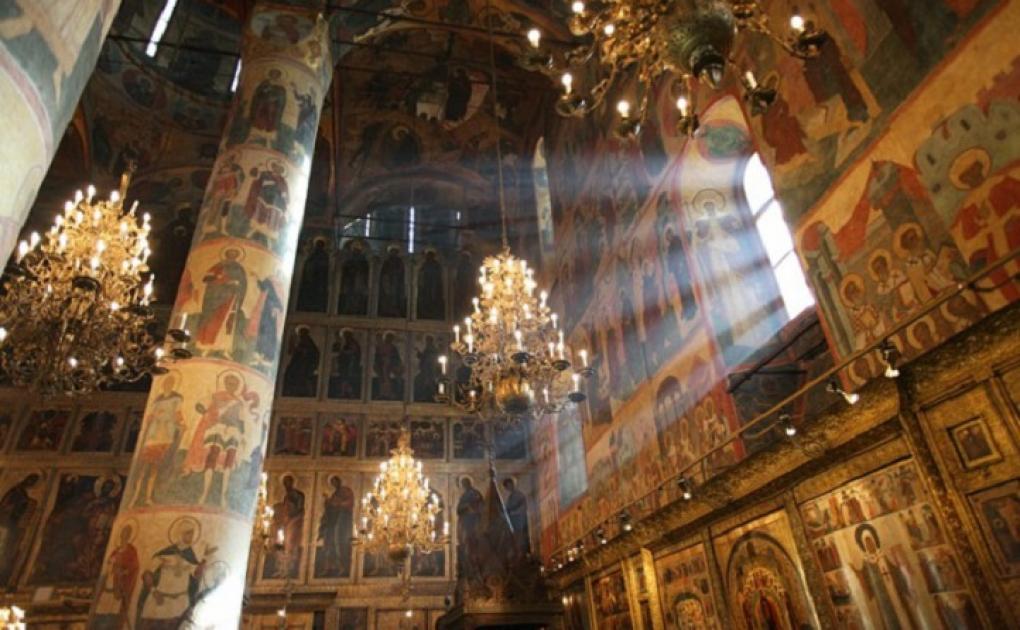
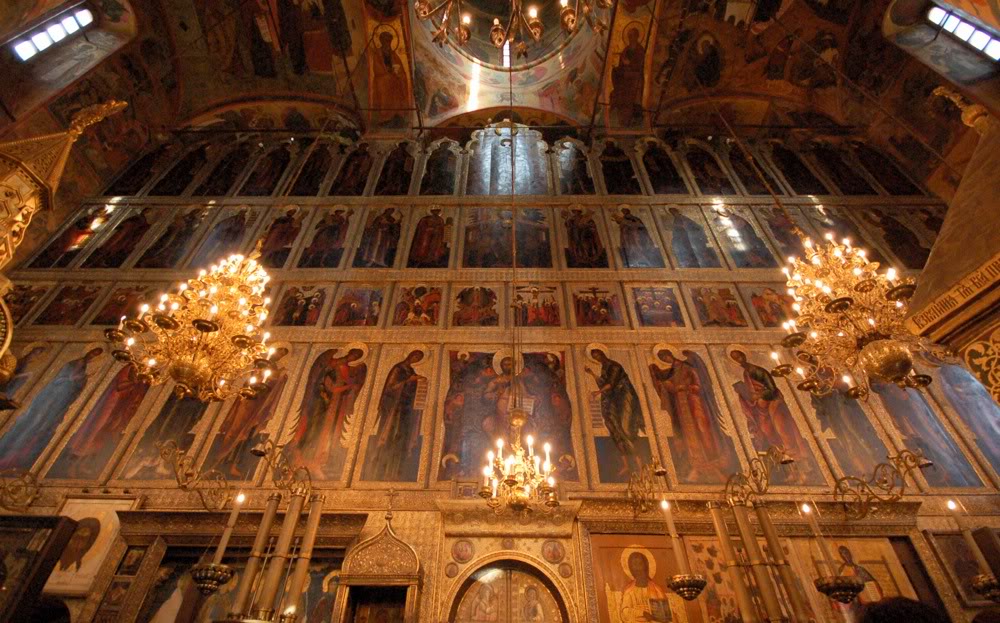
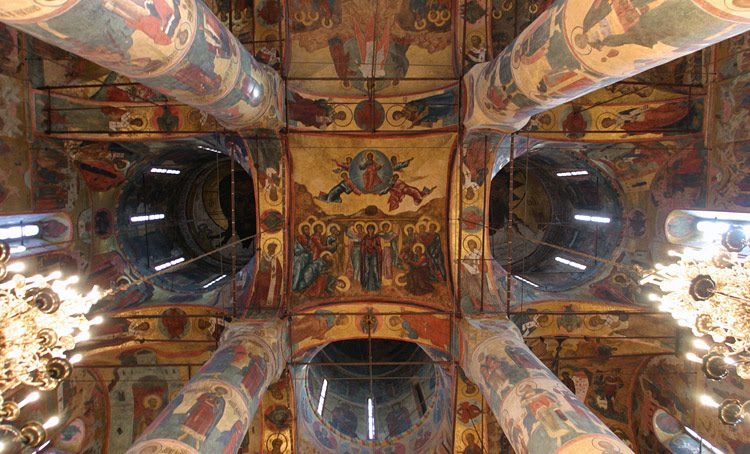 Across Cathedral Square from the Uspensky Sobor, is the Arkhangelsky Sobor, Archangel Cathedral of the Moscow Kremlin, which is a Russian Orthodox church dedicated (oddly enough) to the Archangel Michael. It sits between the Great Kremlin Palace and the Ivan the Great Bell Tower and is the main necropolis of all the Tsars of Russia until the capital was relocated to St Petersburg. The cathedral was built by another Italian architect, Aloisio the New in 1505-08, on top of an older cathedral that was on this site since 1333. The inside of this Cathedral is also a no-photo zone and the museum staff were very diligent and very stern here. The interior is similar in style to the Assumption Cathedral, but this place is full of stone tombs, taking up nearly every bit of floor space.
Across Cathedral Square from the Uspensky Sobor, is the Arkhangelsky Sobor, Archangel Cathedral of the Moscow Kremlin, which is a Russian Orthodox church dedicated (oddly enough) to the Archangel Michael. It sits between the Great Kremlin Palace and the Ivan the Great Bell Tower and is the main necropolis of all the Tsars of Russia until the capital was relocated to St Petersburg. The cathedral was built by another Italian architect, Aloisio the New in 1505-08, on top of an older cathedral that was on this site since 1333. The inside of this Cathedral is also a no-photo zone and the museum staff were very diligent and very stern here. The interior is similar in style to the Assumption Cathedral, but this place is full of stone tombs, taking up nearly every bit of floor space.
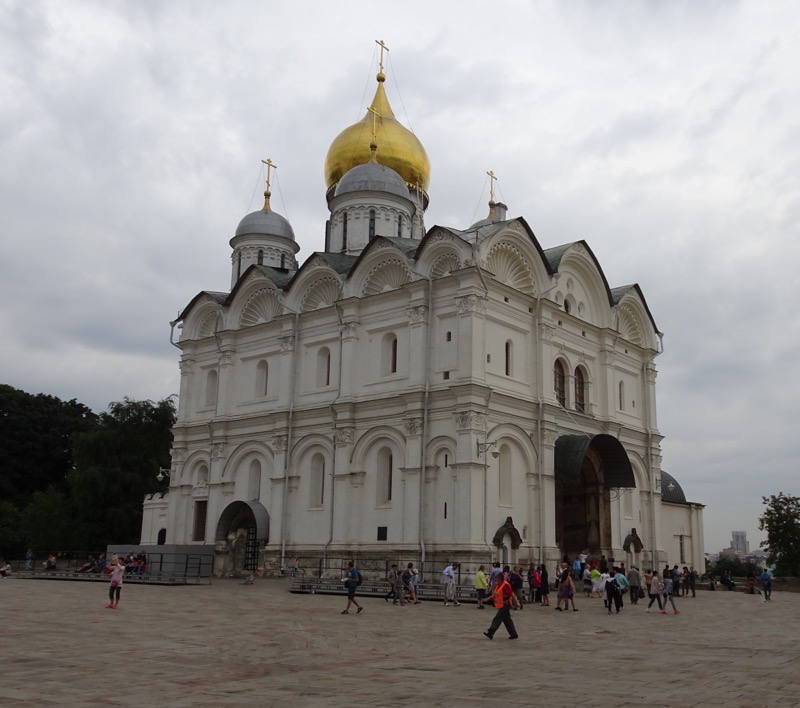
Behind this cathedral is the Ivan the Great Bell Tower aka Kolokol’nya Ivana Velikogo (I like to try and pronounce these things, though I tend to fail miserably). The bell tower is 81 metres tall and is the tallest structures inside the Kremlin. It was built in 1508 by another Italian architect named… name? name? where is his name? Bon Frianzin! Seems the medieval Russians preferred their architects to be Italian. Anyway, it was built because the three main cathedrals in Cathedral Square do not have their own belfries.
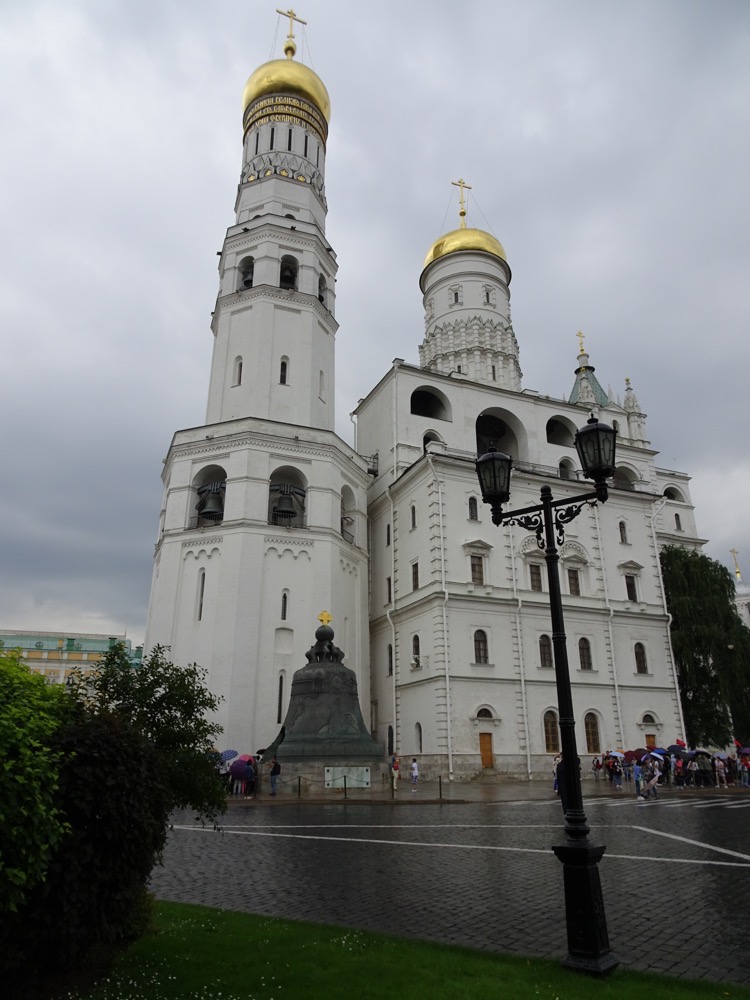 There is a story of questionable origins, that when Napoleon invaded Moscow in 1812 after the Battle of Borodino, he attempted to remove the cross on the central dome of the Annunciation Cathedral because he had been told it was cast in solid gold. Apparently, he confused the cathedral with the Ivan the Great Bell Tower – the cross on which is only gilded iron. Anyway, the French engineers were unable to remove it from the tower and it was only after a Russian peasant volunteered to climb up to the dome to dismantle it, that the cross was eventually lowered down on ropes. As the story has it, when the peasant approached Napoleon seeking a reward, the little man had him shot for being a traitor to his fatherland. As I said, of questionable veracity, but interesting nonetheless.
There is a story of questionable origins, that when Napoleon invaded Moscow in 1812 after the Battle of Borodino, he attempted to remove the cross on the central dome of the Annunciation Cathedral because he had been told it was cast in solid gold. Apparently, he confused the cathedral with the Ivan the Great Bell Tower – the cross on which is only gilded iron. Anyway, the French engineers were unable to remove it from the tower and it was only after a Russian peasant volunteered to climb up to the dome to dismantle it, that the cross was eventually lowered down on ropes. As the story has it, when the peasant approached Napoleon seeking a reward, the little man had him shot for being a traitor to his fatherland. As I said, of questionable veracity, but interesting nonetheless.
Beside the Ivan the Great Bell Tower is the Tsar Bell, also known as the Tsarksy Kolokol or the Tsar Kolokol III or the Royal Bell (no idea why things have so many names here!). It is enormous! Being approximately 6.1m tall, and 6.6m in diameter it is on display in the ground here because it cracked during a fire after casting. It is considered the largest bell in the world and weighs a whopping 201 tonnes. The fragment that has broken off the bell weights 11.5 tonnes alone. It was commissioned by Empress Anna Ivanova who was niece to Peter the Great and the decorations on the bell depict Alexius I and Empress Anna, as well as images of Christ, the Virgin Mary, and various canonised Moscow citizens. The bell has never been suspended or rung. Which is kinda sad. So now it sits forlornly beside the bell tower swamped by tourists all day.
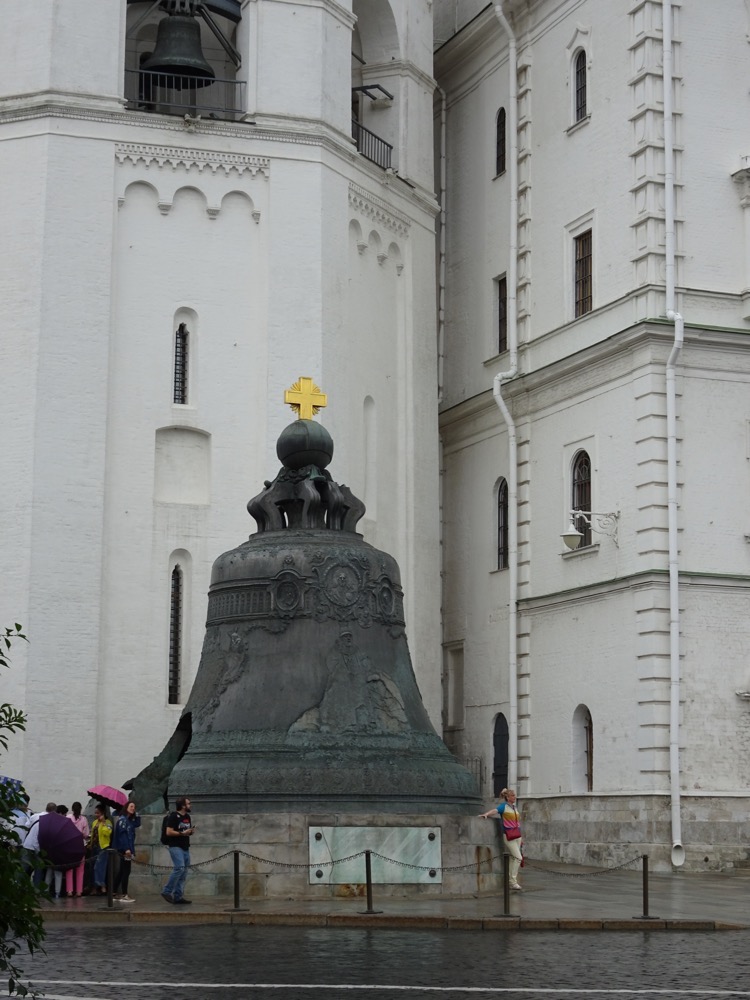
After this, we had a stroll around the grounds of the Kremlin before coming out the Spasskaya Tower back into Red Square to go into St Basil’s Cathedral.
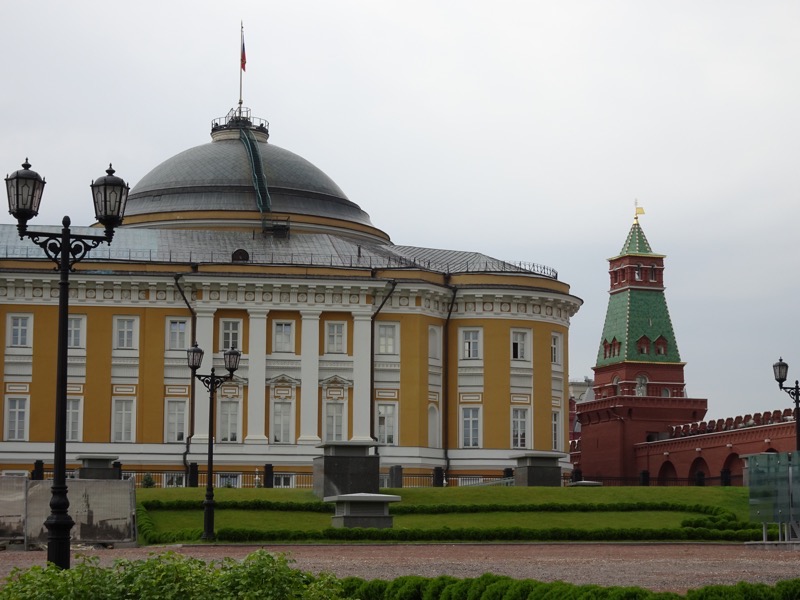
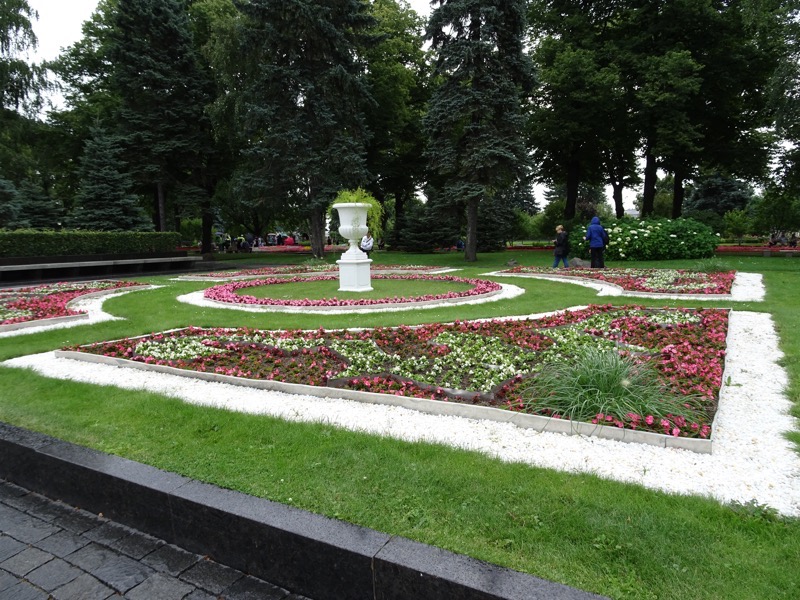
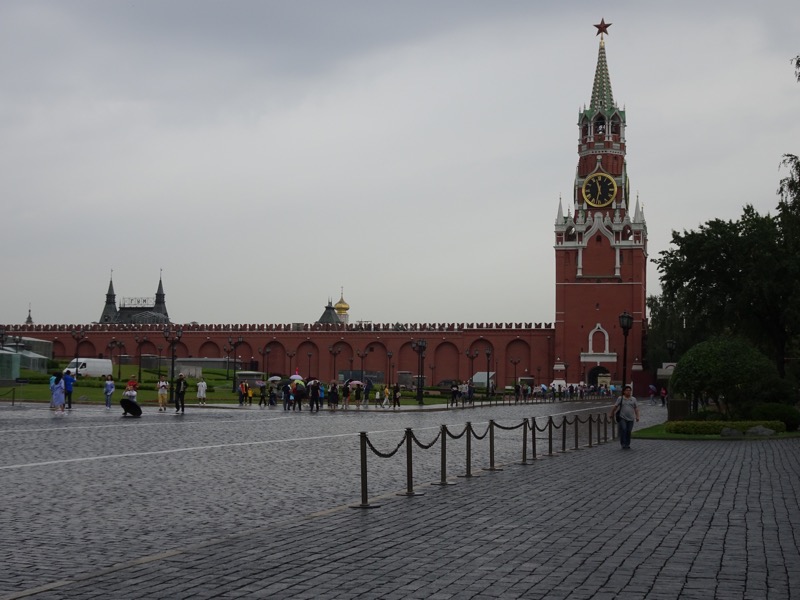
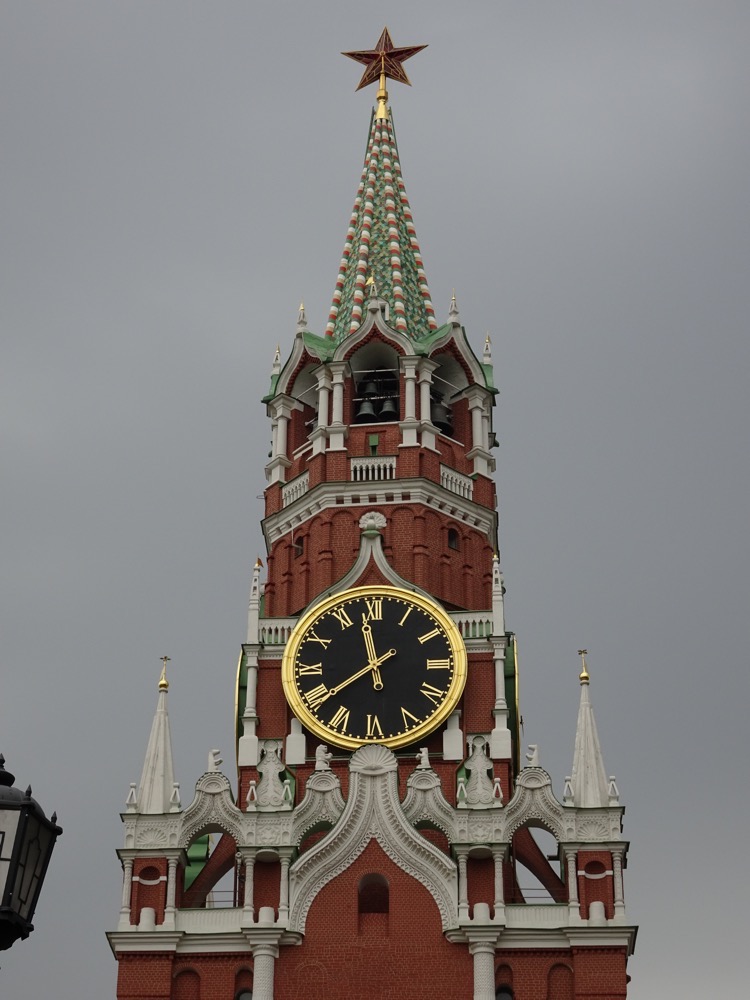
That would be St Basil’s Cathedral aka: Sovor Vasiliya Blazhennogo OR the Cathedral of the Intercession of the Most Holy Theotokos on the Moat OR Sobor Pokrova Presvyatory Bogoroditsy, chto na Rvu, OR Pokrovsky Cathedral!!! Crazy. When we arrived, one of those rare tourist confluences happened to occur – there was no queue for tickets to enter the cathedral museum, and we were ten minutes before the ticket booths were going to close for a lunch break… so there were not many people coming in after us! Brilliant!
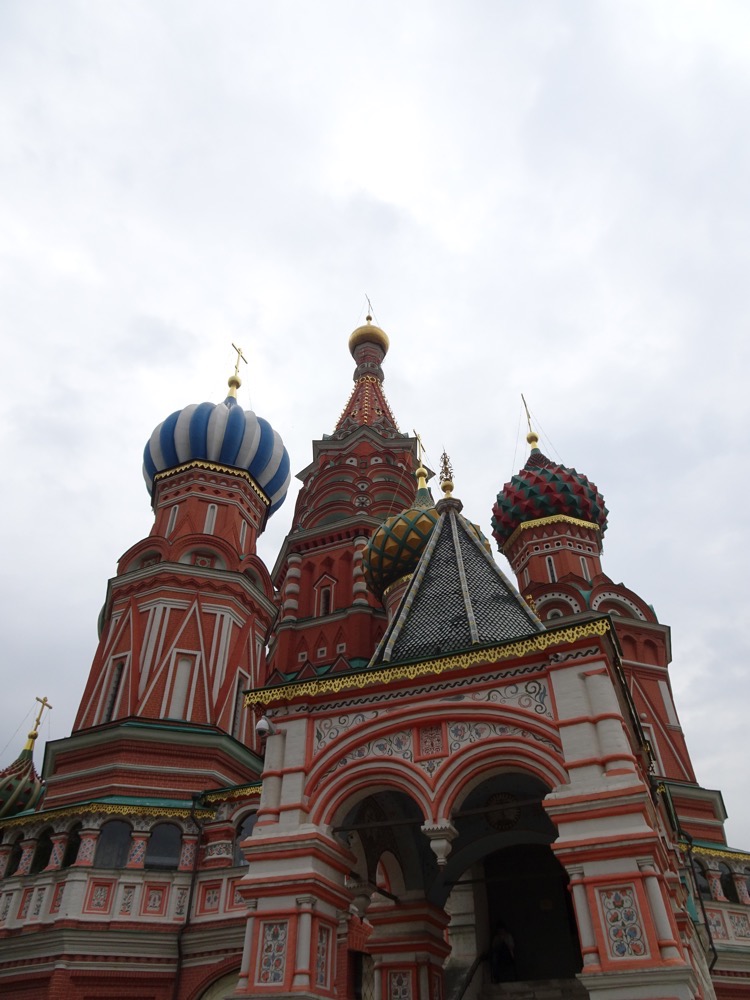 Scale model of the Cathedral.
Scale model of the Cathedral.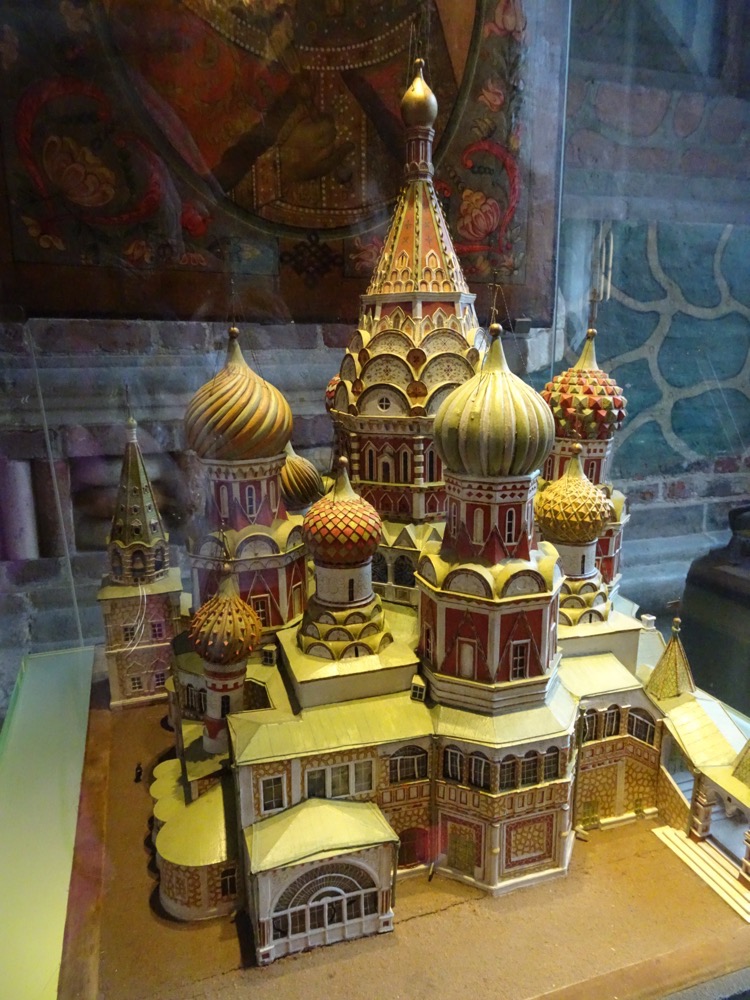 Sanctuary of St Basil the Blessed.
Sanctuary of St Basil the Blessed.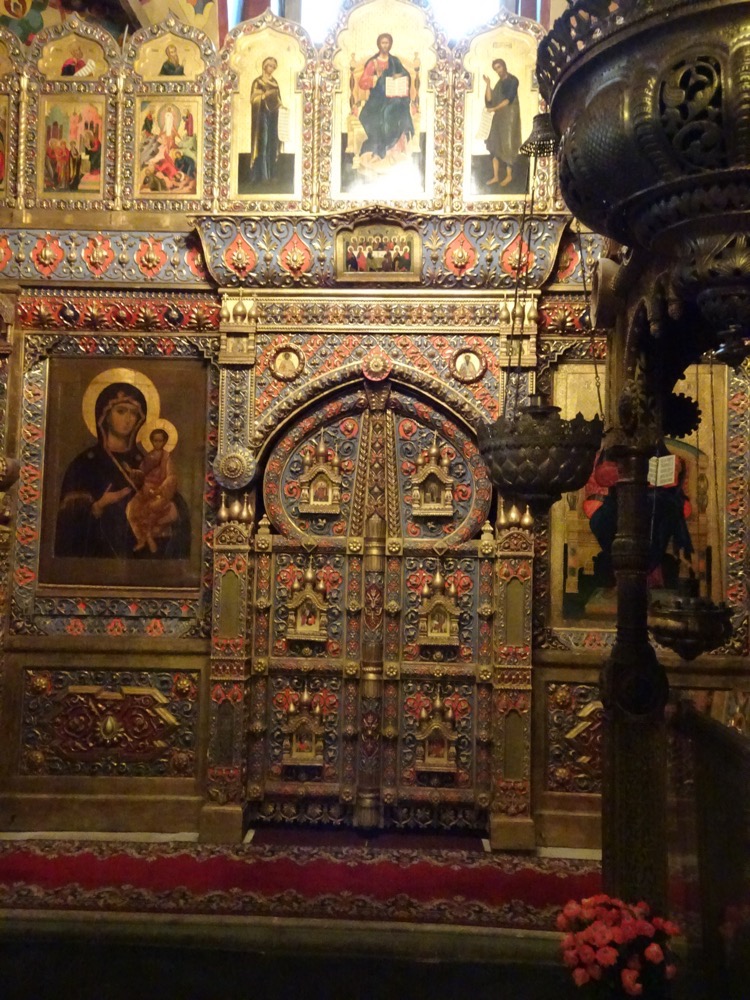
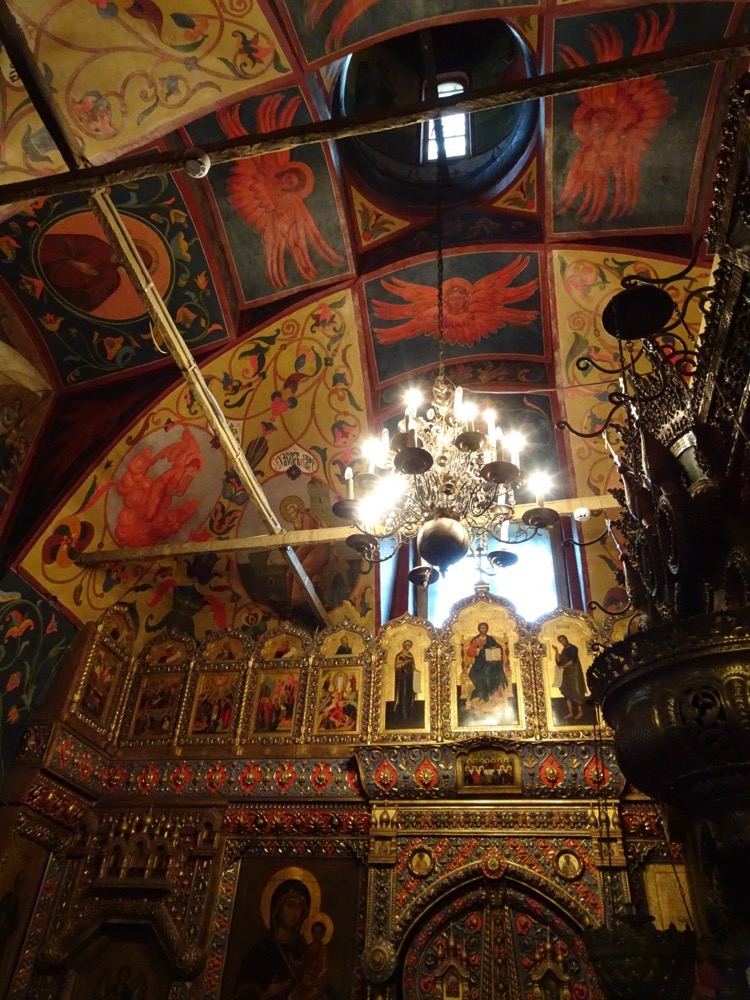
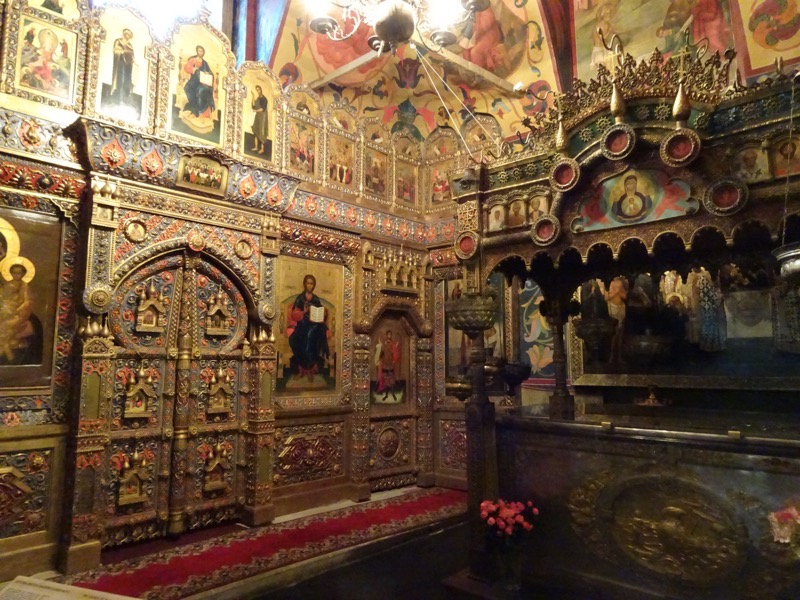
So much detail in every panel…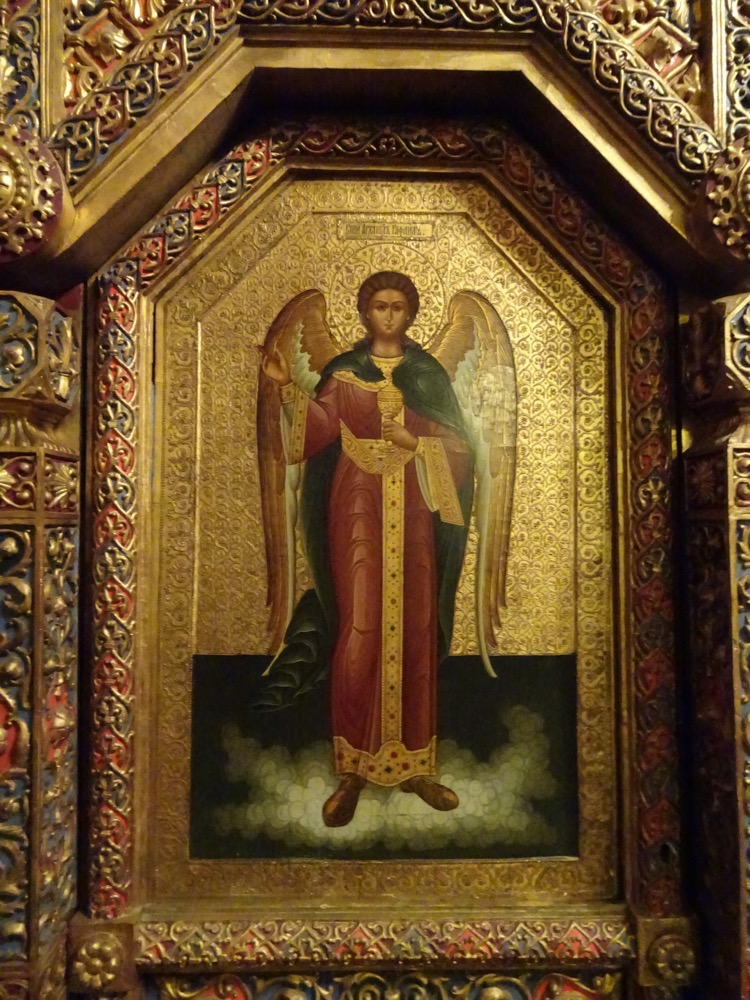 Holy Banners bearing the Image of the Mother of God “Eleuza” (“Tenderness) of St Serafim. c1904. Copper alloy, enamel, oil; forging, stamping, embossing, engraving, gilding, and painting on metal… WOW! These are unique monuments of the church made for the 350th anniversary of the launching of the construction of the Cathedral of the Protecting Veil.
Holy Banners bearing the Image of the Mother of God “Eleuza” (“Tenderness) of St Serafim. c1904. Copper alloy, enamel, oil; forging, stamping, embossing, engraving, gilding, and painting on metal… WOW! These are unique monuments of the church made for the 350th anniversary of the launching of the construction of the Cathedral of the Protecting Veil.
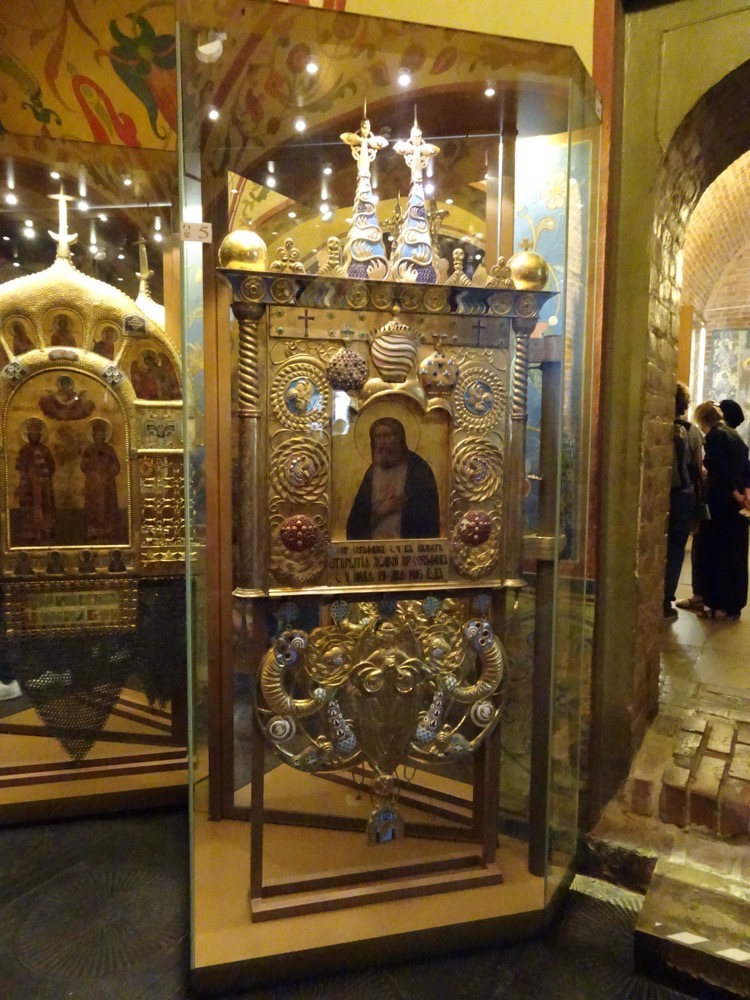
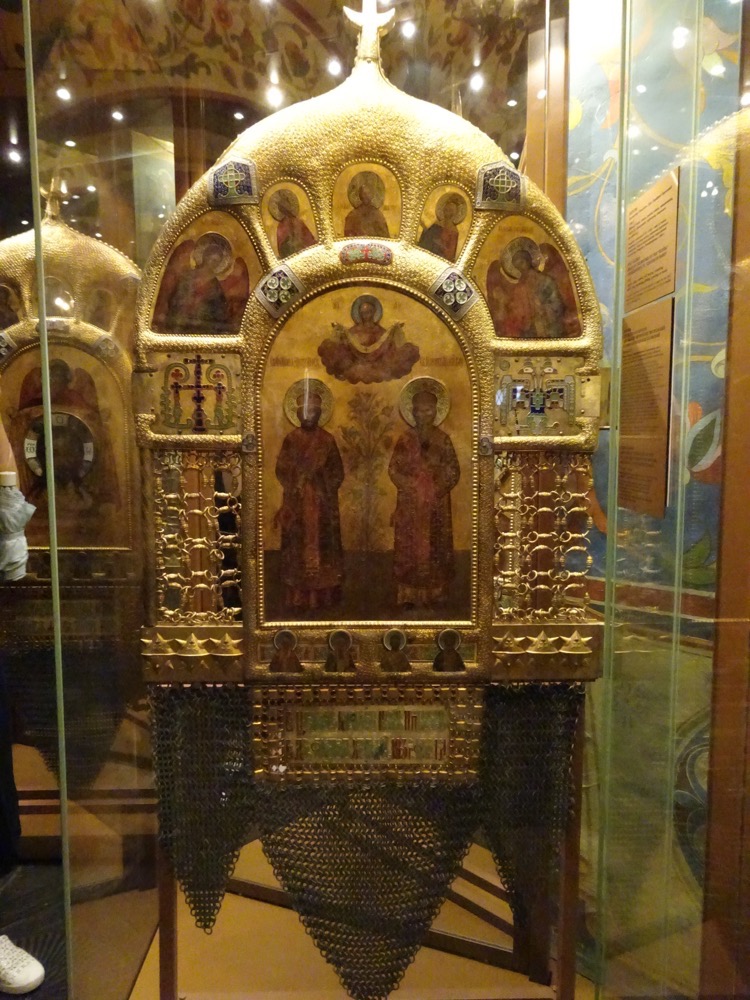
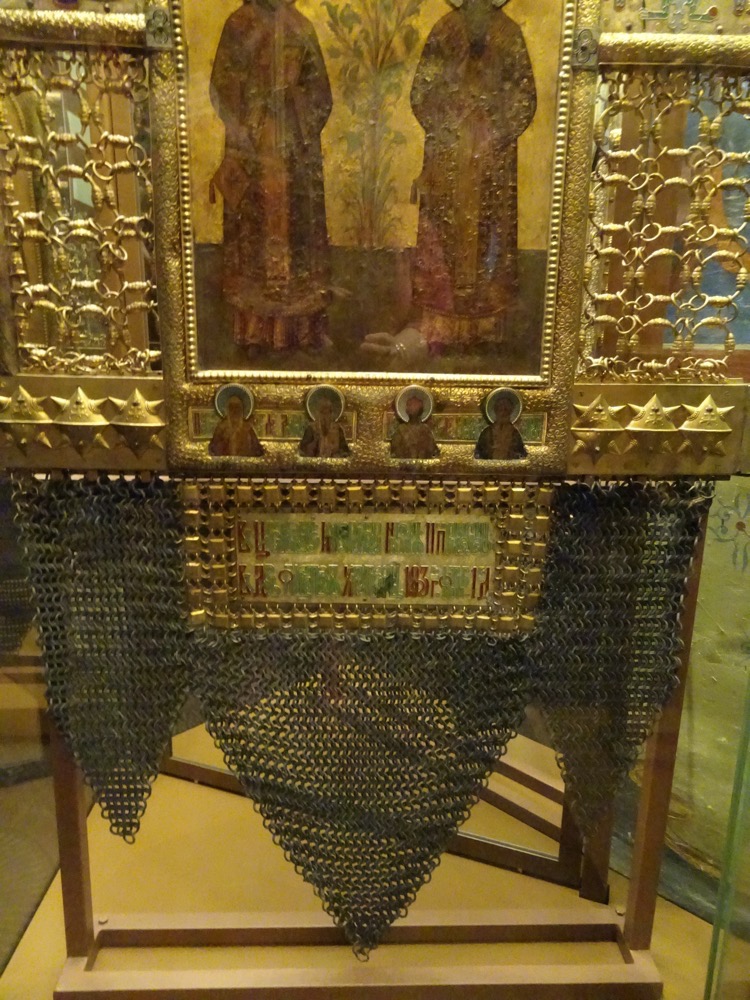
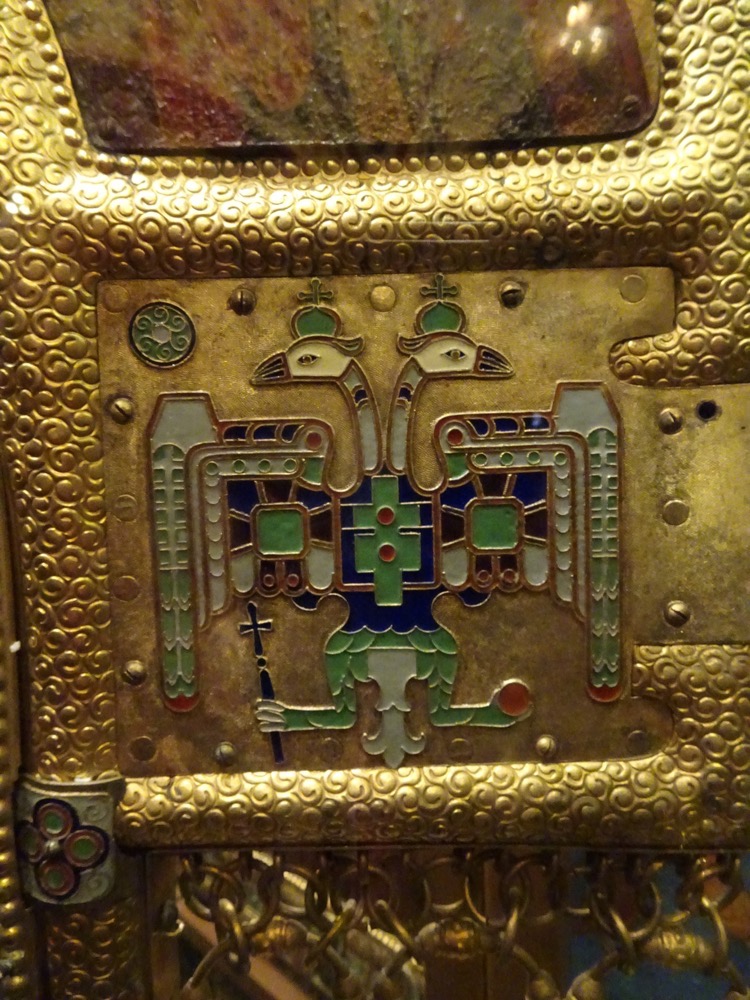
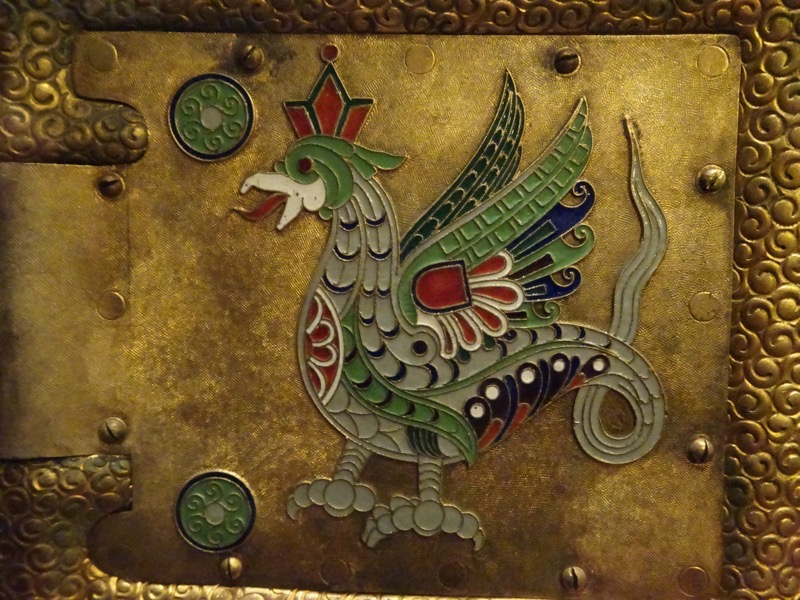 I aslo took photos of the many interiors – the Cathedral is made up of nine interconnecting chapels, so it is a winding rabbit warren of archways, corridors and small chambers. All of which is lavishly covered in colourful frescoes. I can’t include many of the photos I took here (yale will kill me for the number of images in this post already!), but here are some samples of what is inside…
I aslo took photos of the many interiors – the Cathedral is made up of nine interconnecting chapels, so it is a winding rabbit warren of archways, corridors and small chambers. All of which is lavishly covered in colourful frescoes. I can’t include many of the photos I took here (yale will kill me for the number of images in this post already!), but here are some samples of what is inside…
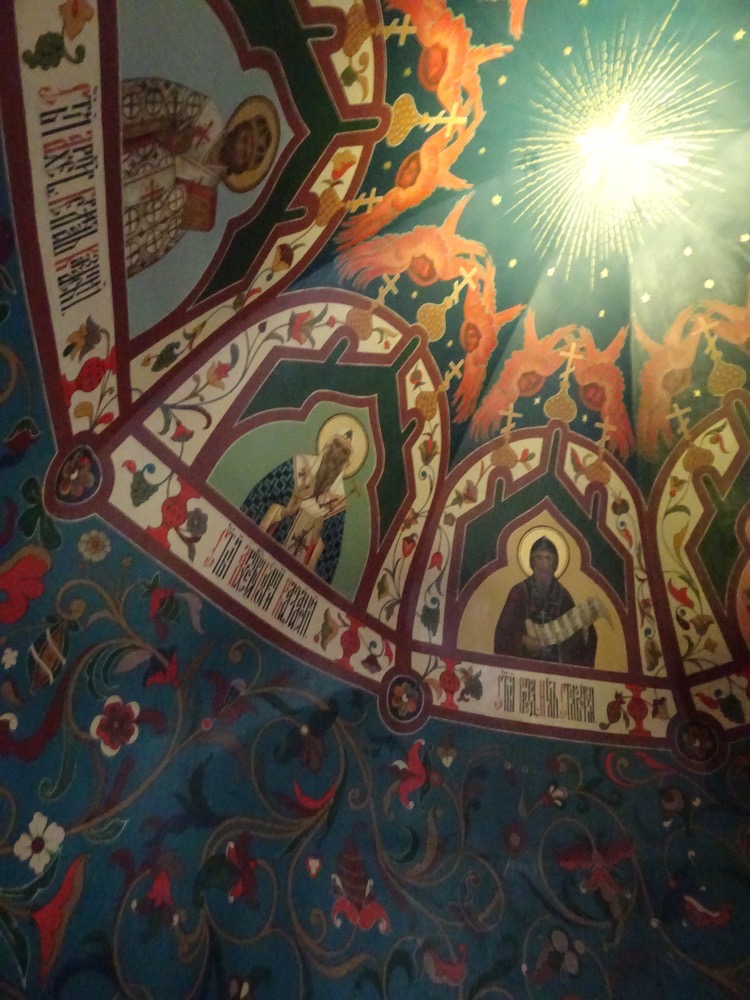
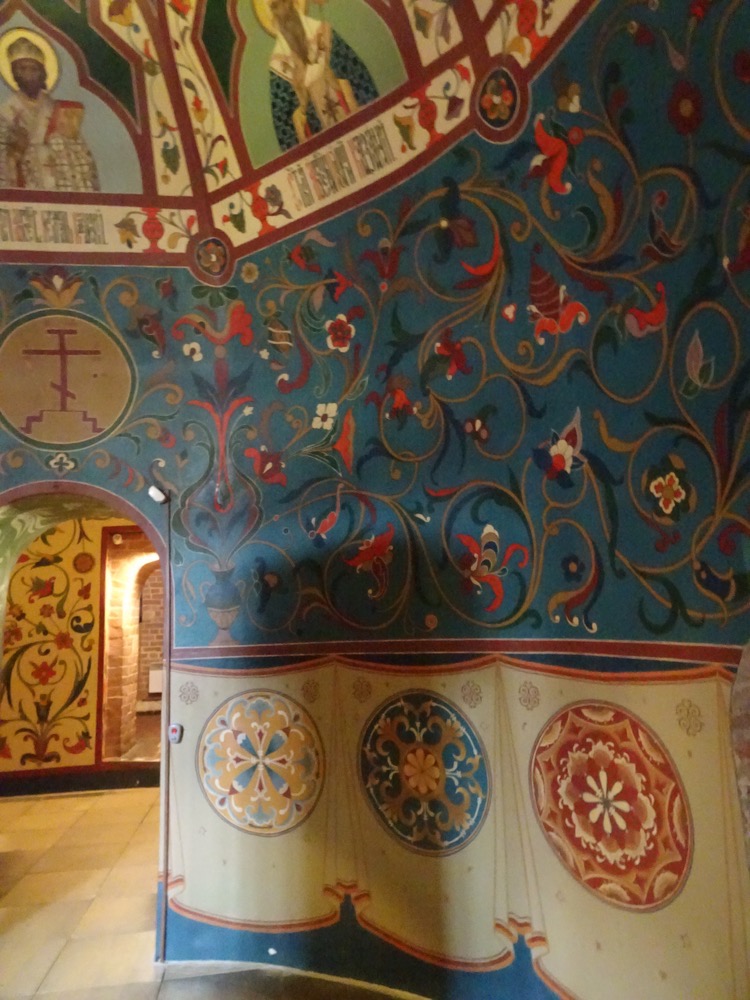 Detail of frescoes:
Detail of frescoes: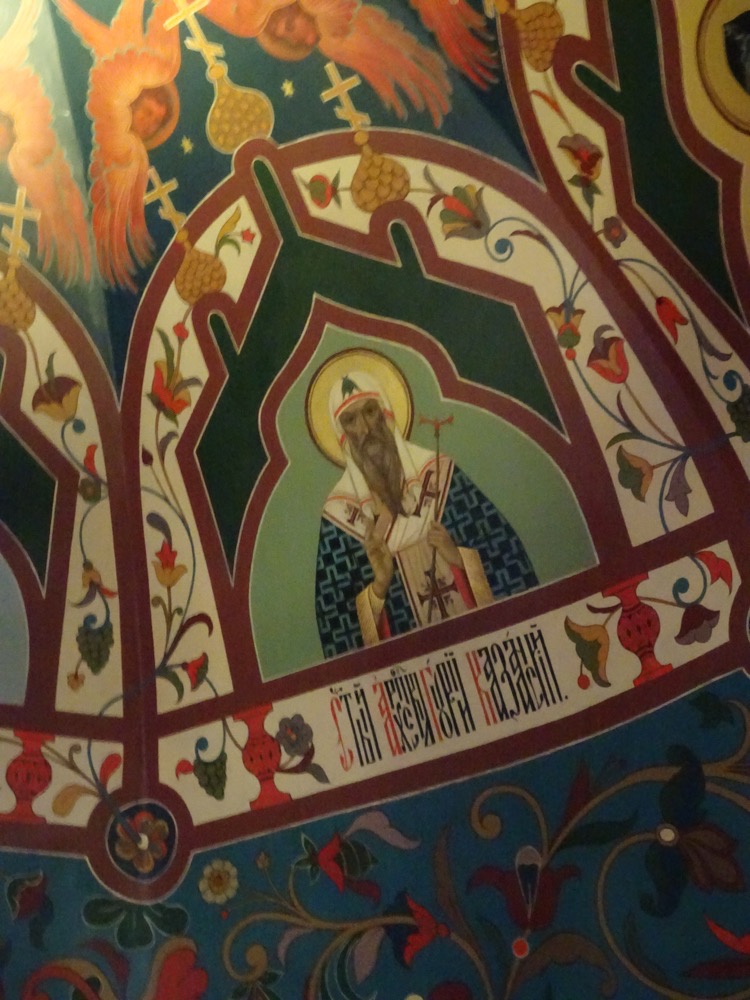
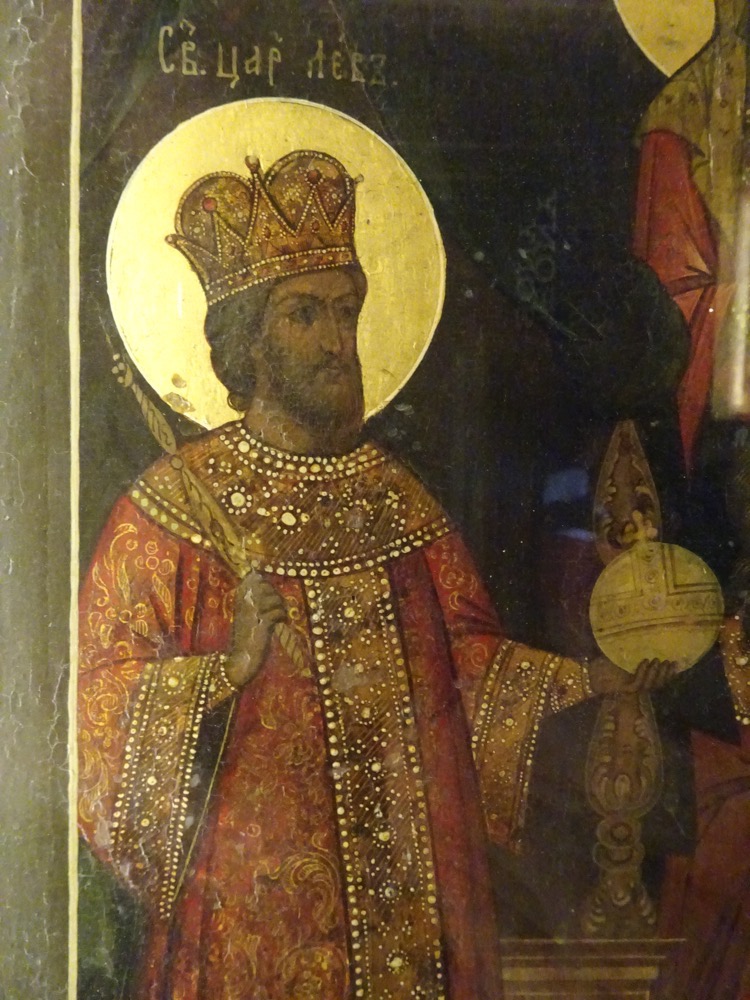
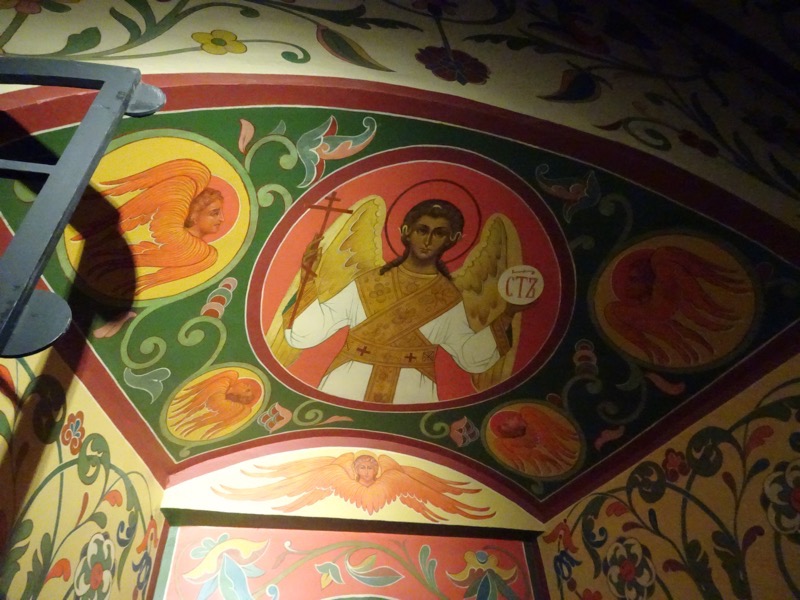 Floor – stamped copper? bronze?
Floor – stamped copper? bronze?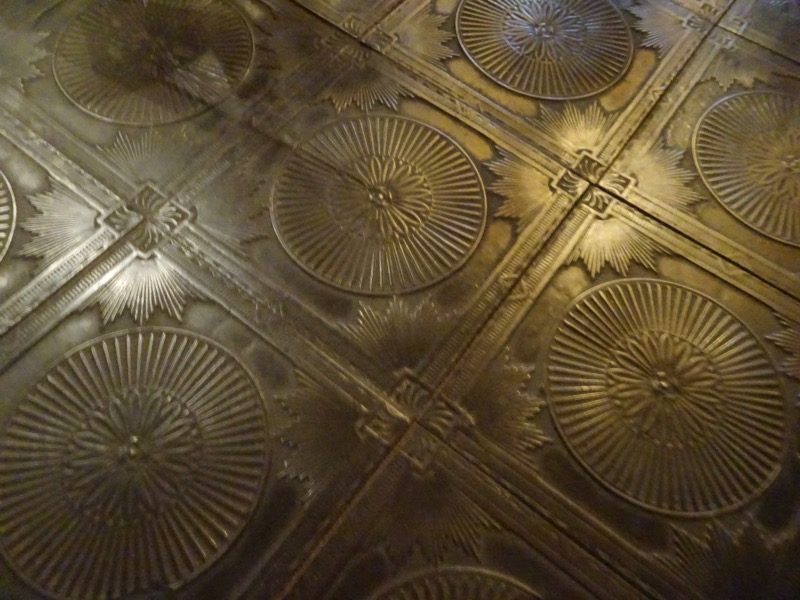 Inside the domes:
Inside the domes:
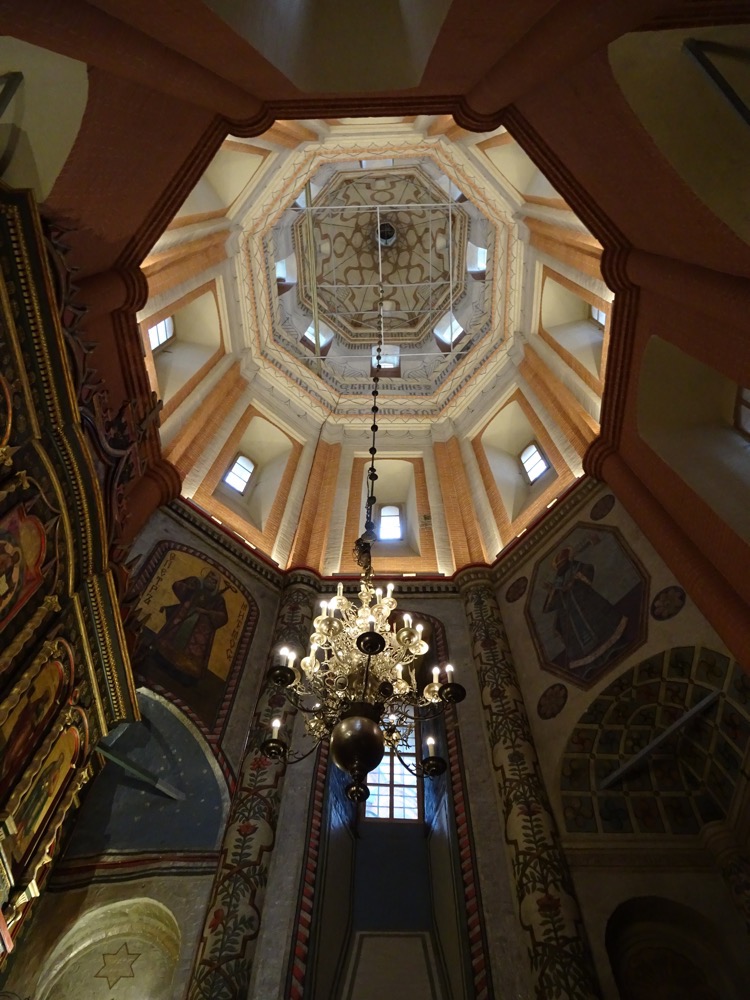 One of the cathedral altars:
One of the cathedral altars: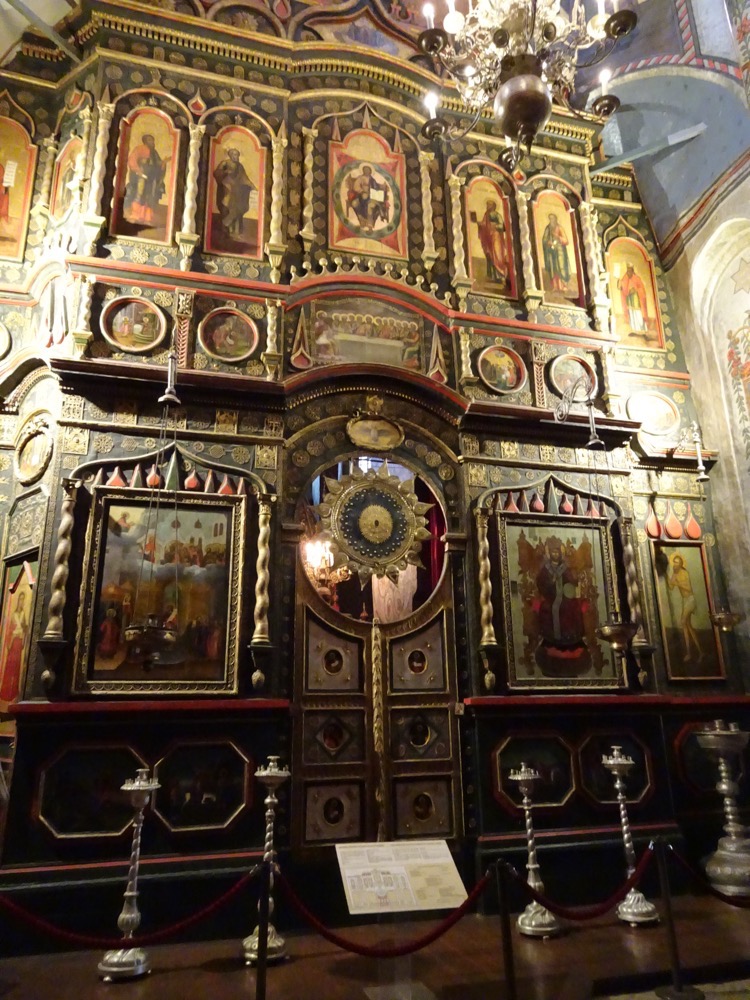
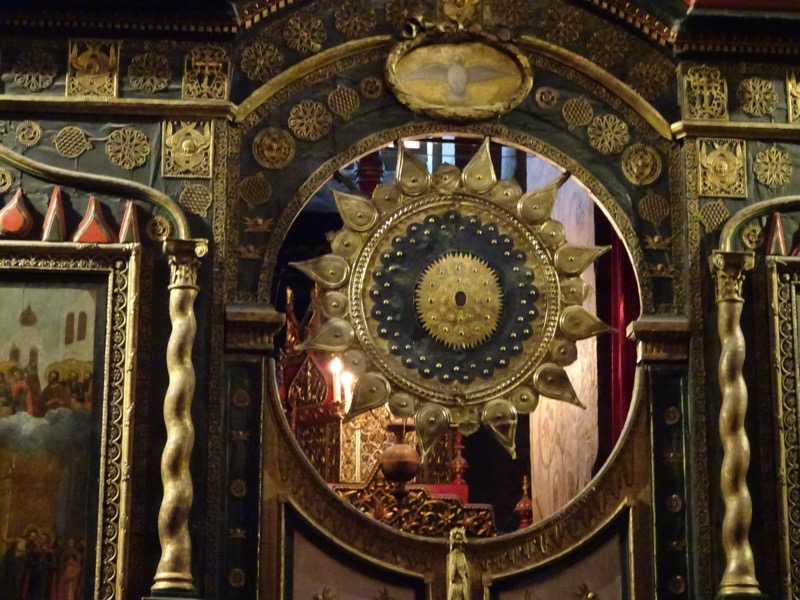
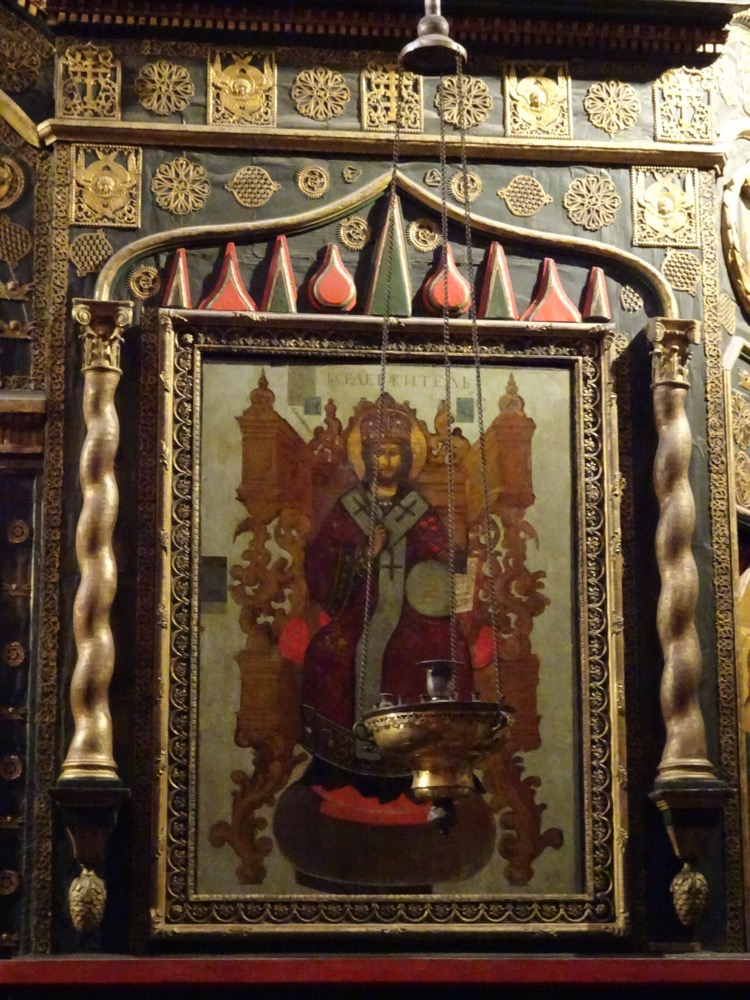 Detail of the painting on the alter panels:
Detail of the painting on the alter panels: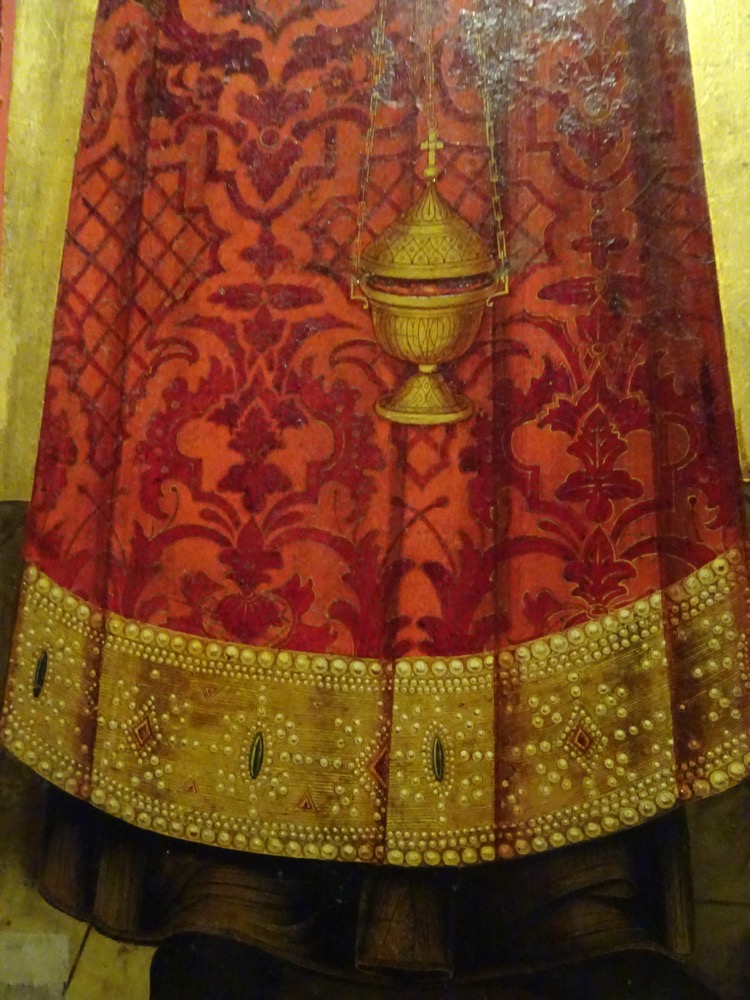
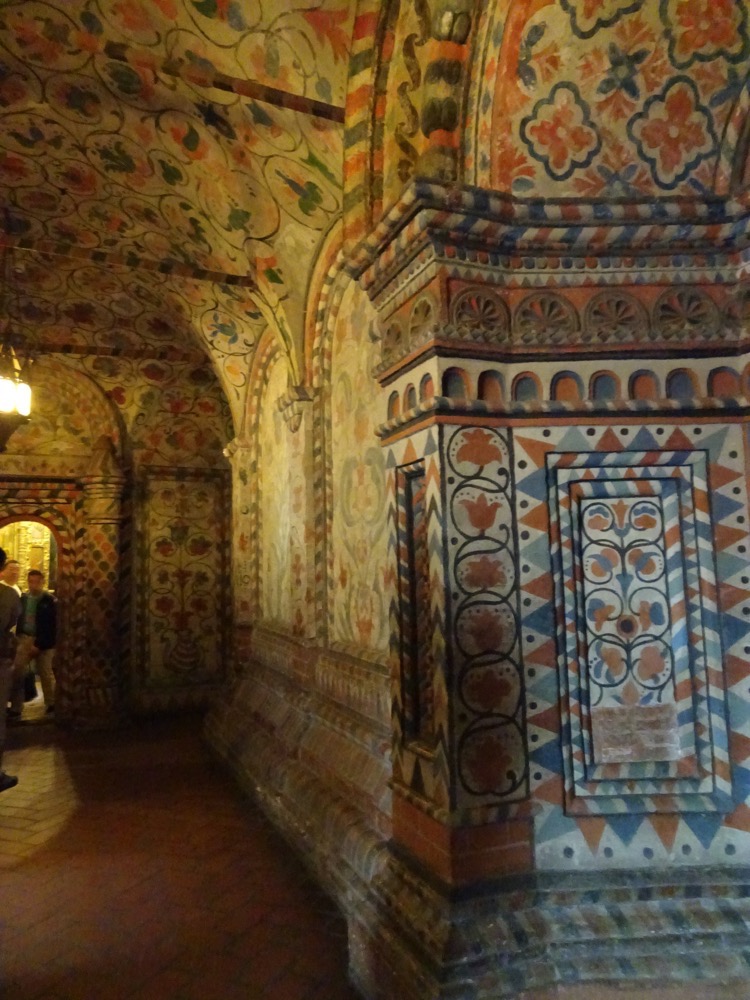
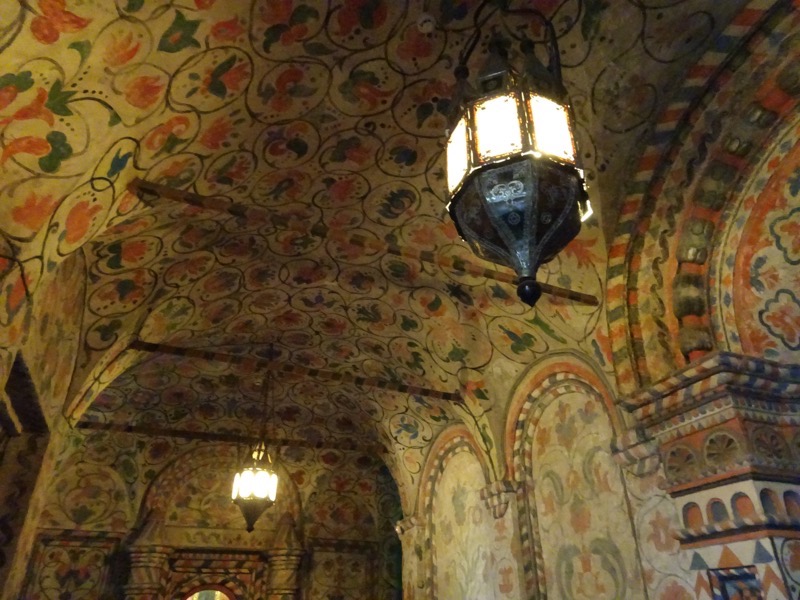
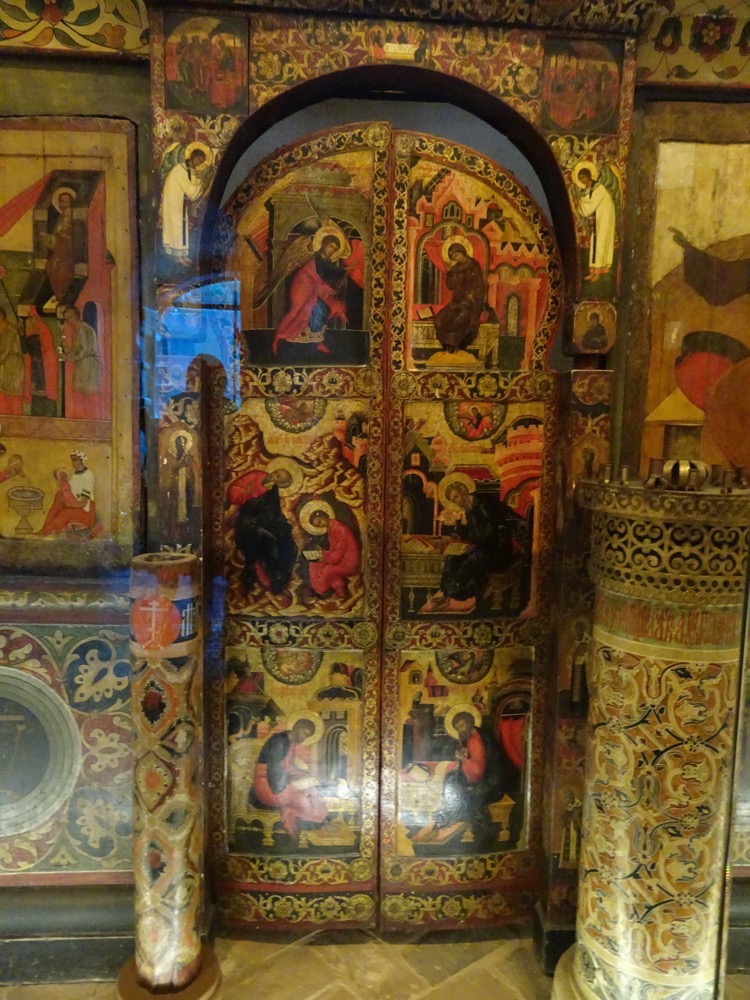
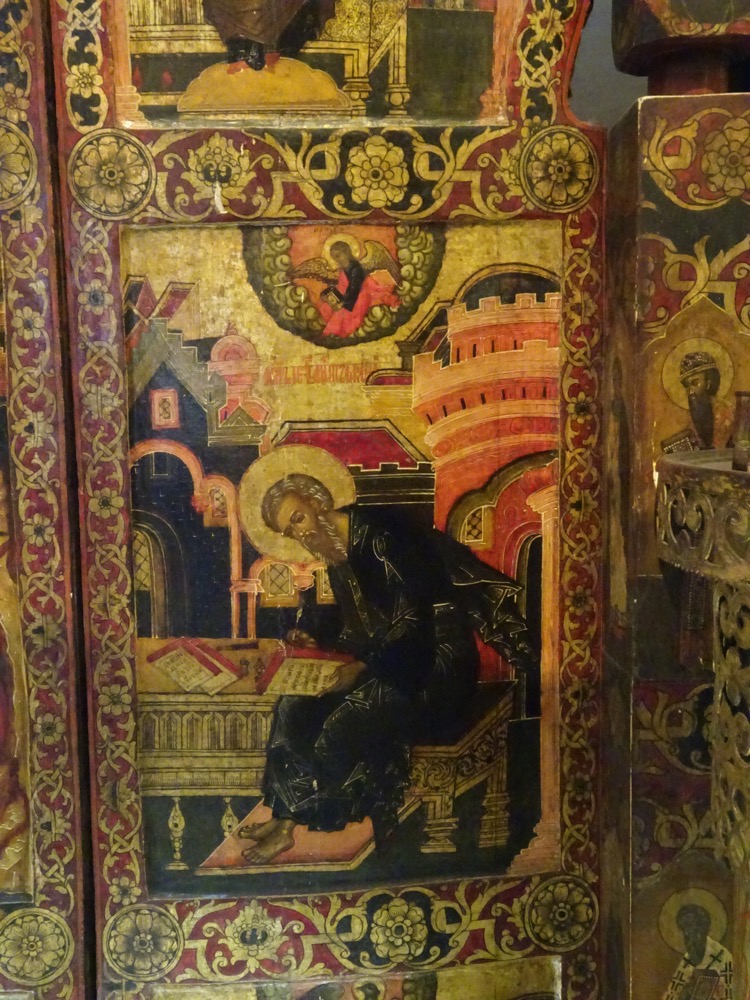
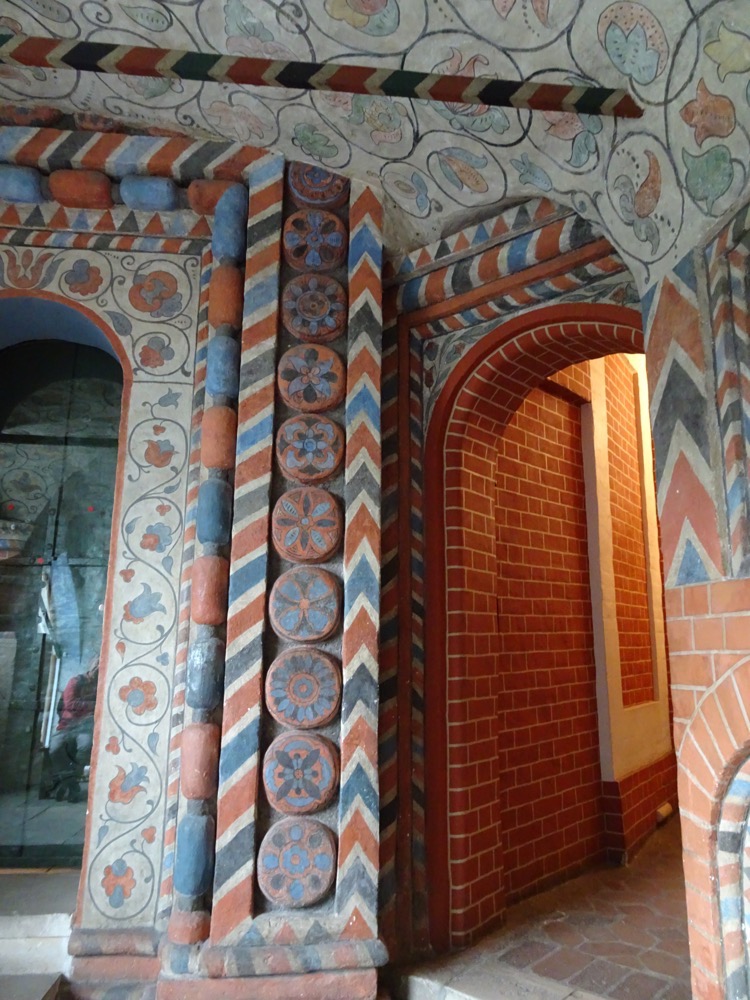
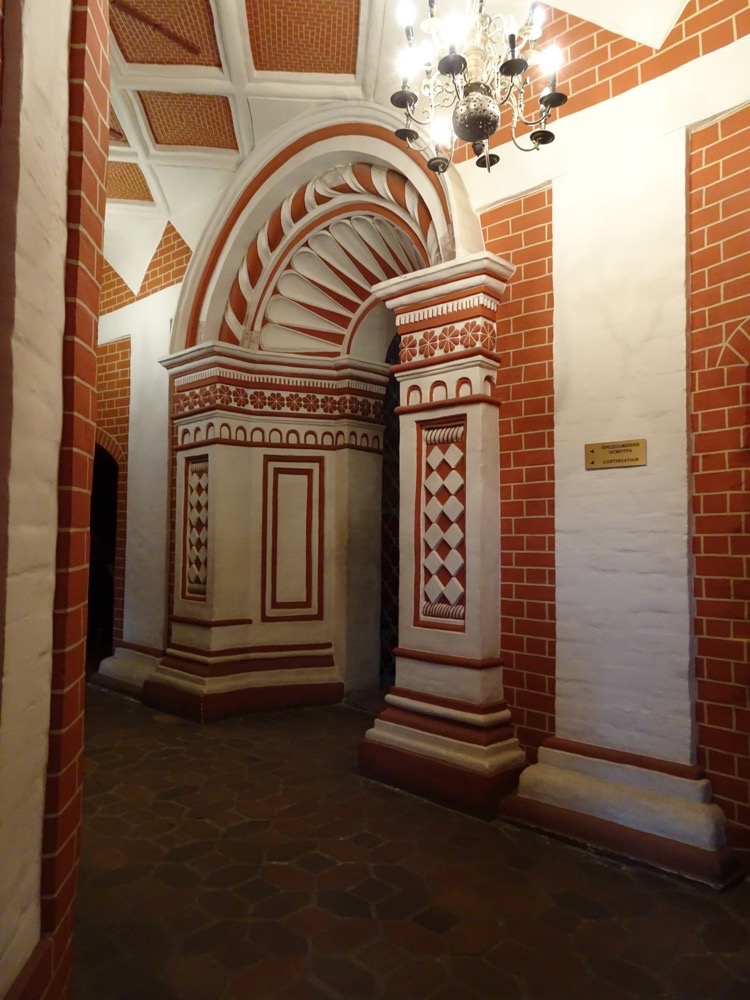
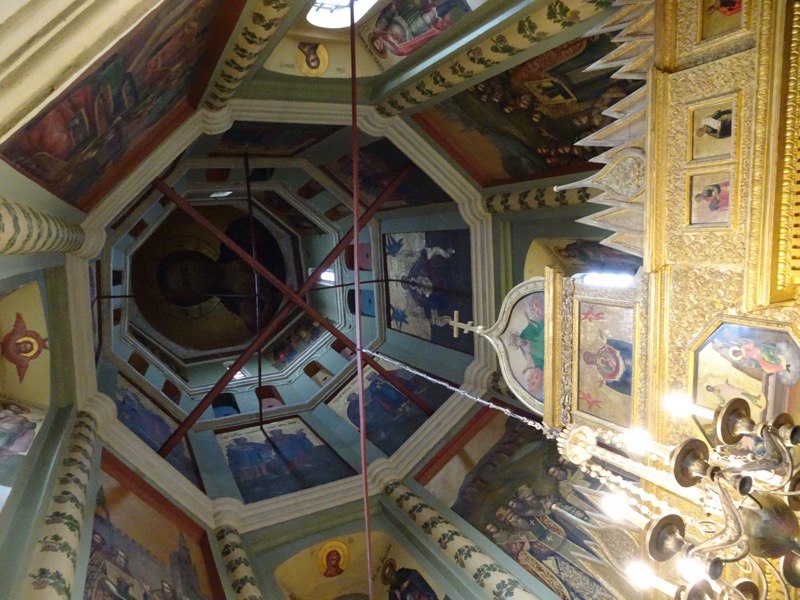
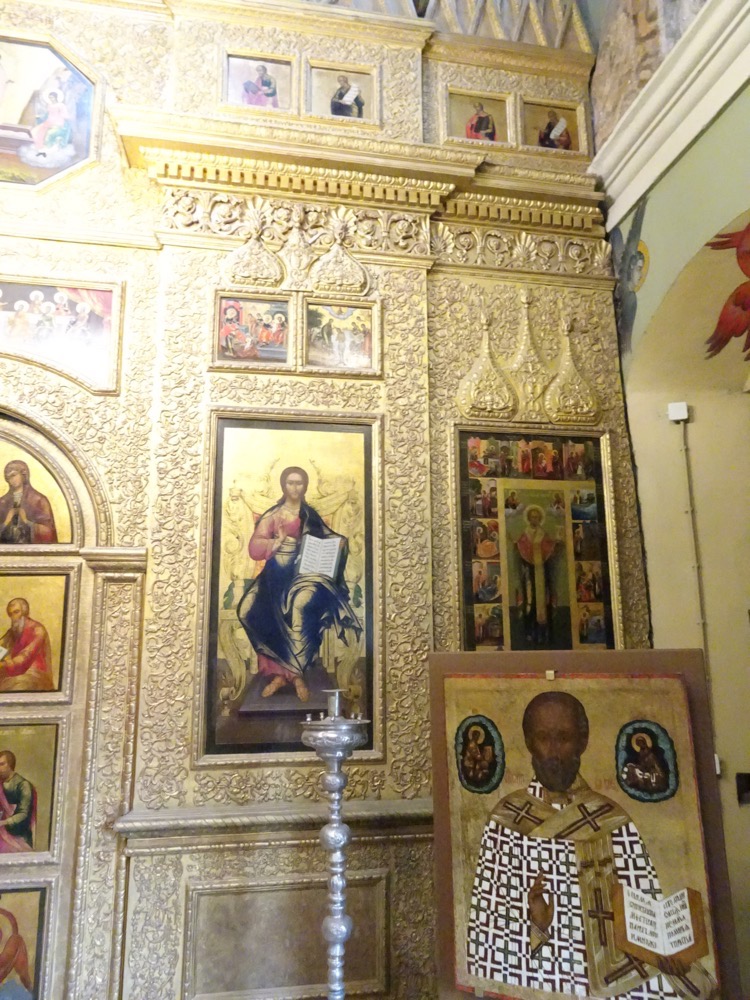 Everything inside is so lavishly decorated… but there are also museum artefacts in here too – most dating from the 16th to 17th centuries.
Everything inside is so lavishly decorated… but there are also museum artefacts in here too – most dating from the 16th to 17th centuries.
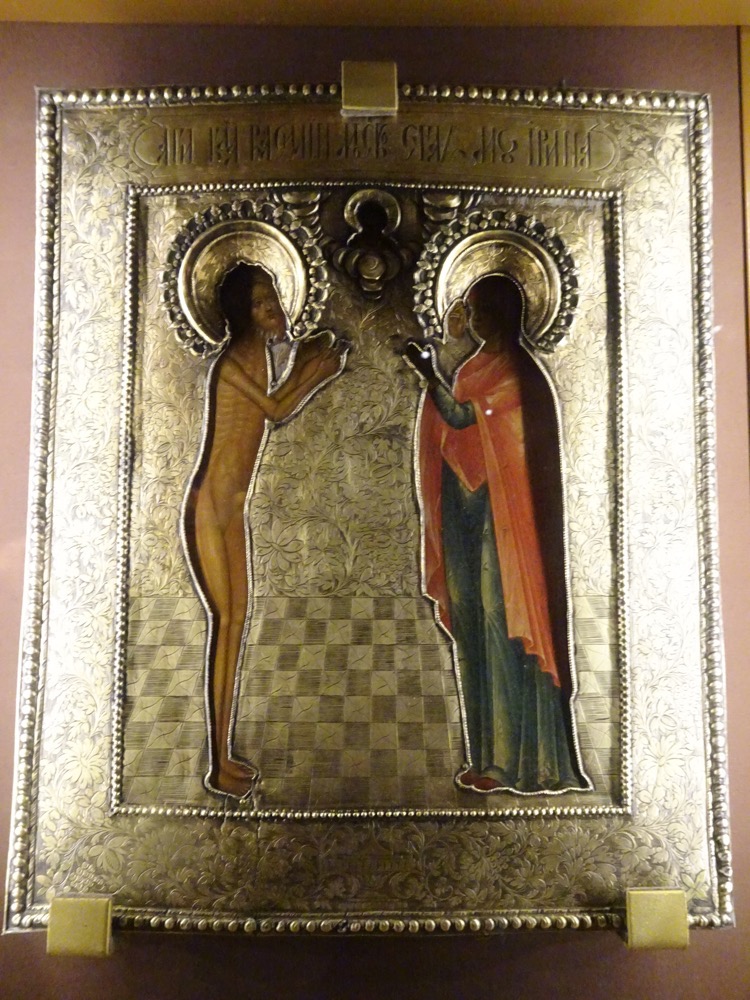 FETTERS: Moscow, 17th century. Forged and engraved iron. Heavy chains and other metal articles such as bands, girdles and crosses. The wearing of fetters on one’s body became one of the types of Christian asceticism. Presumably the iron cap, cross and girdle belonged to St Ioann the Blessed, called the Big Cap…
FETTERS: Moscow, 17th century. Forged and engraved iron. Heavy chains and other metal articles such as bands, girdles and crosses. The wearing of fetters on one’s body became one of the types of Christian asceticism. Presumably the iron cap, cross and girdle belonged to St Ioann the Blessed, called the Big Cap…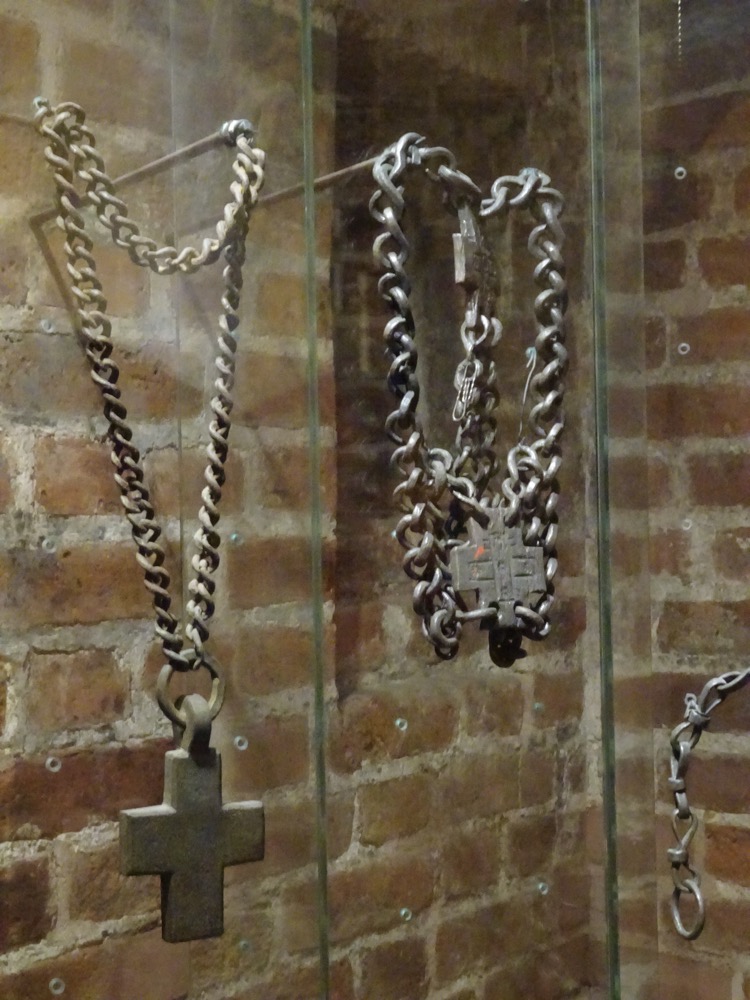
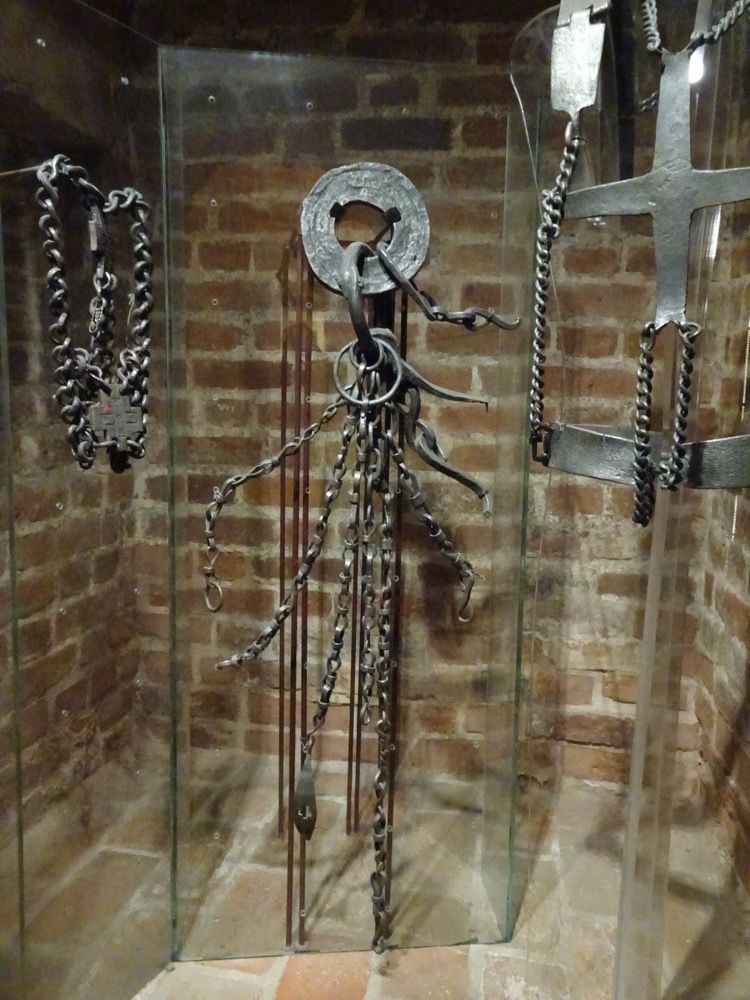
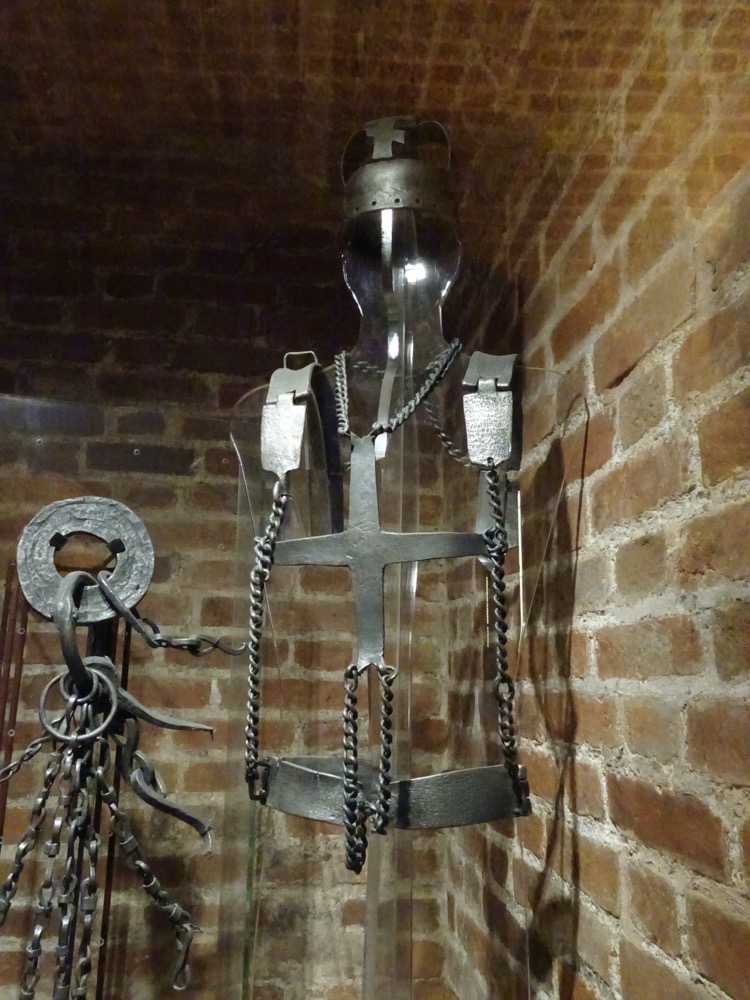 Church banners c.1930.
Church banners c.1930.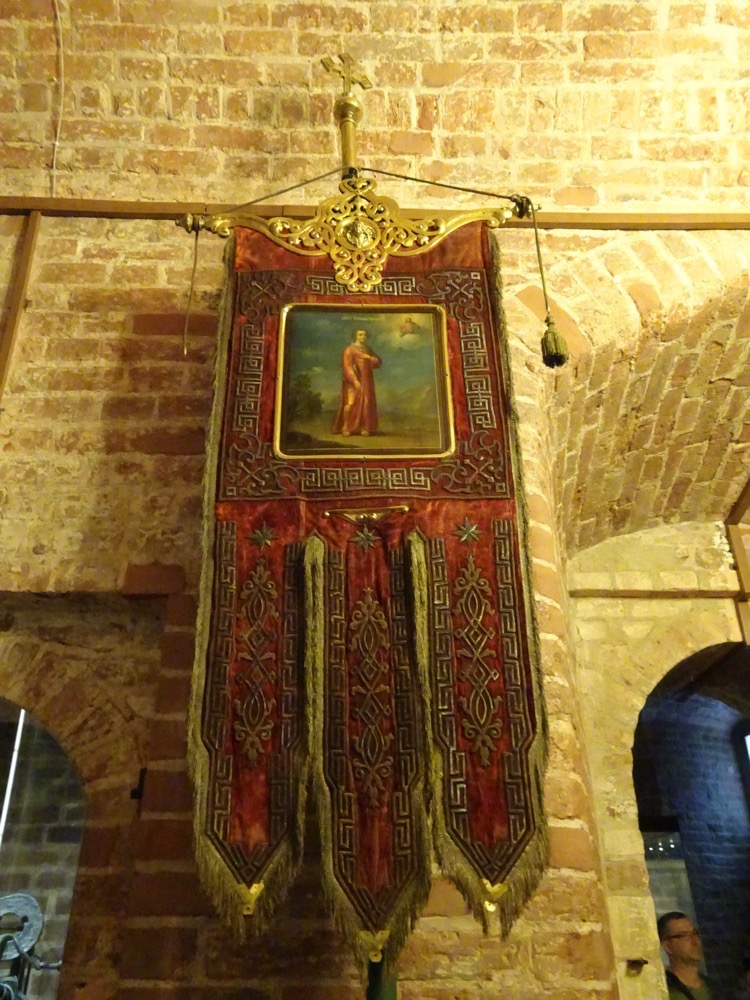
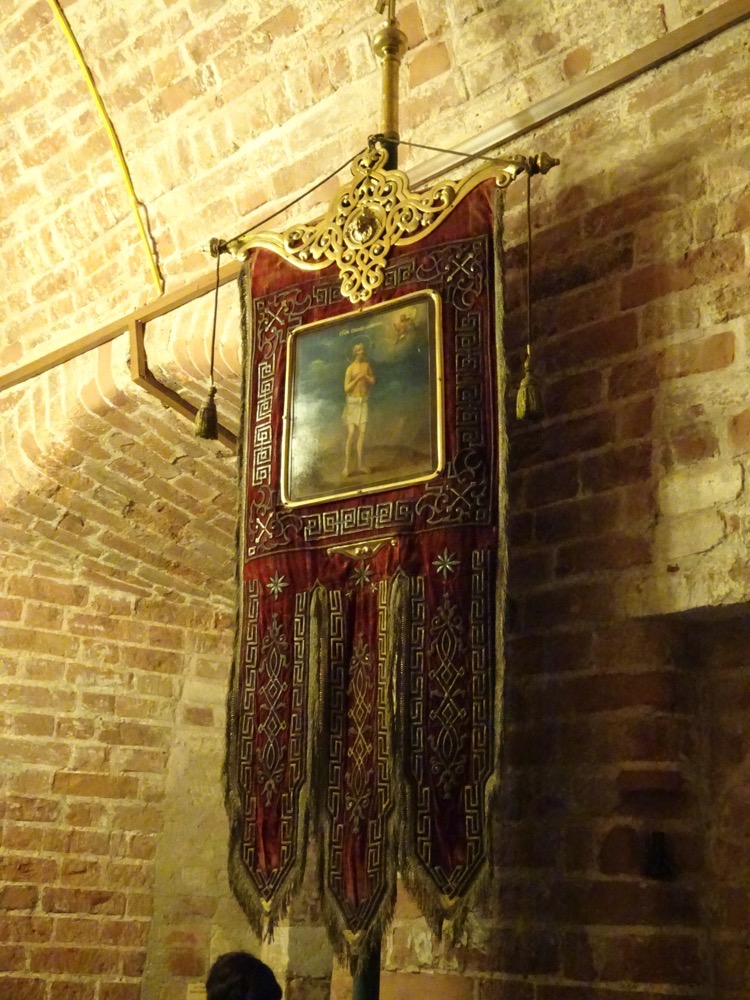
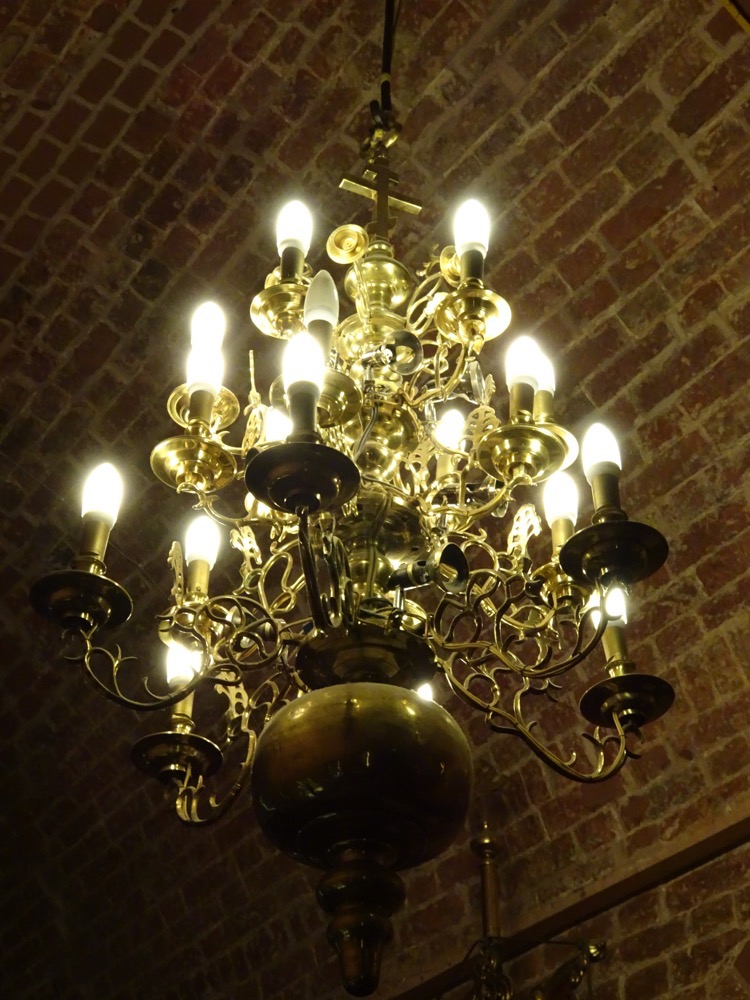 Iron roof panel – forged and painted.
Iron roof panel – forged and painted.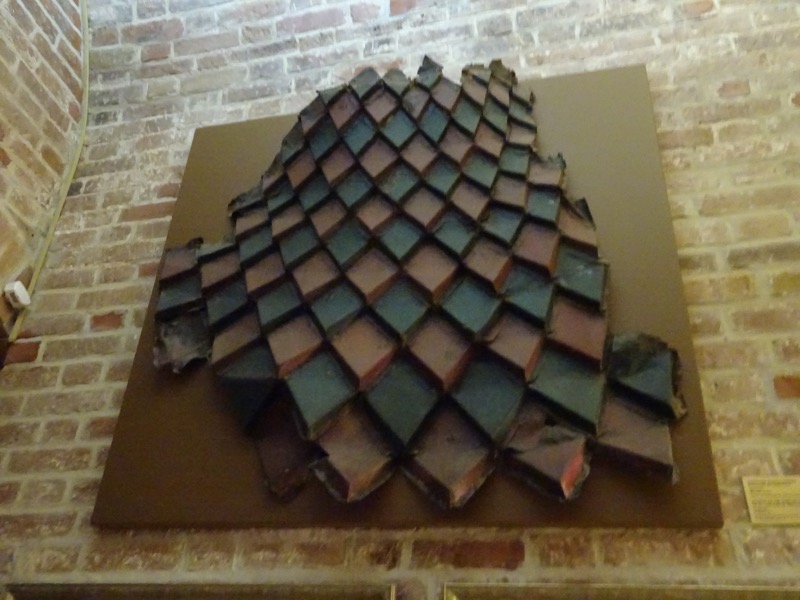 Examples of the colourful tiles on the external sections of the cathedral.
Examples of the colourful tiles on the external sections of the cathedral.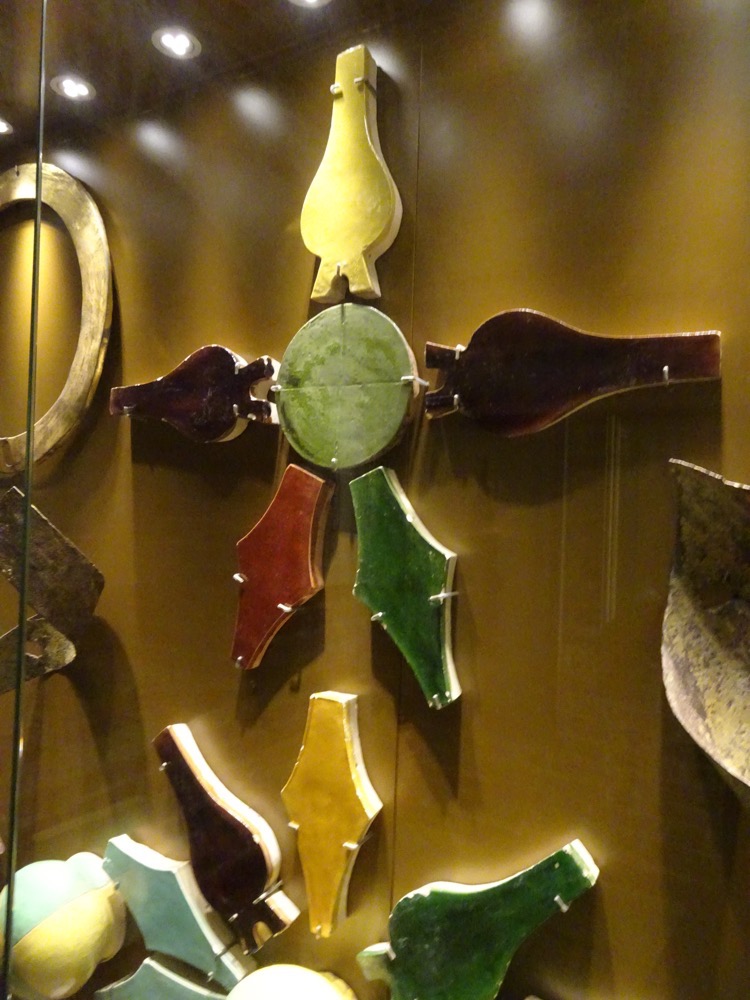
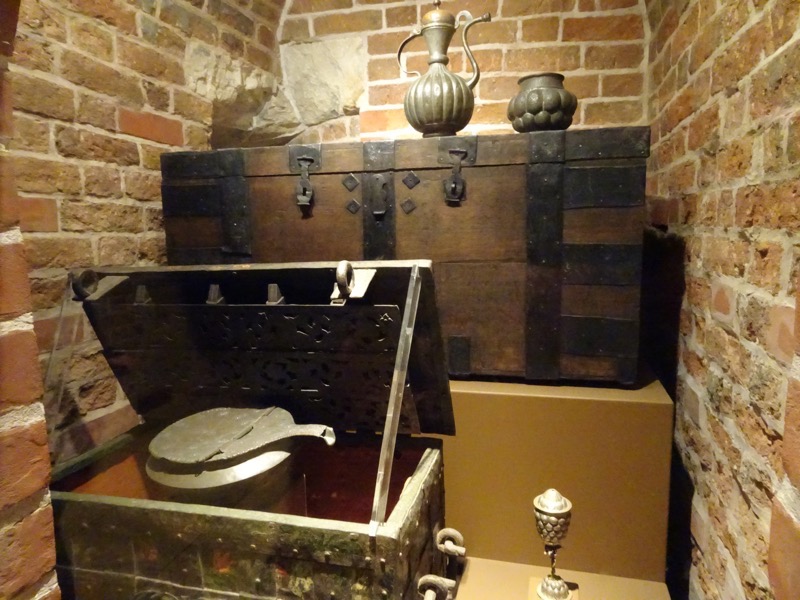
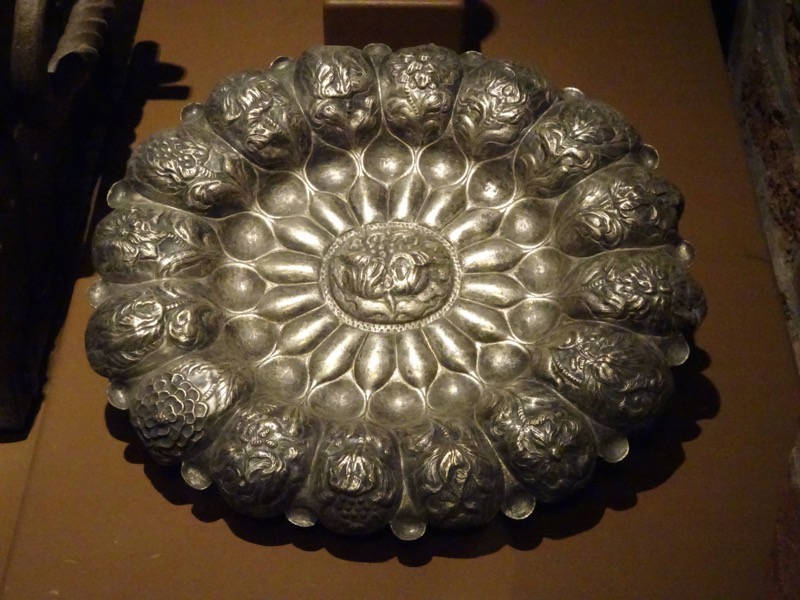 Medieval locks.
Medieval locks.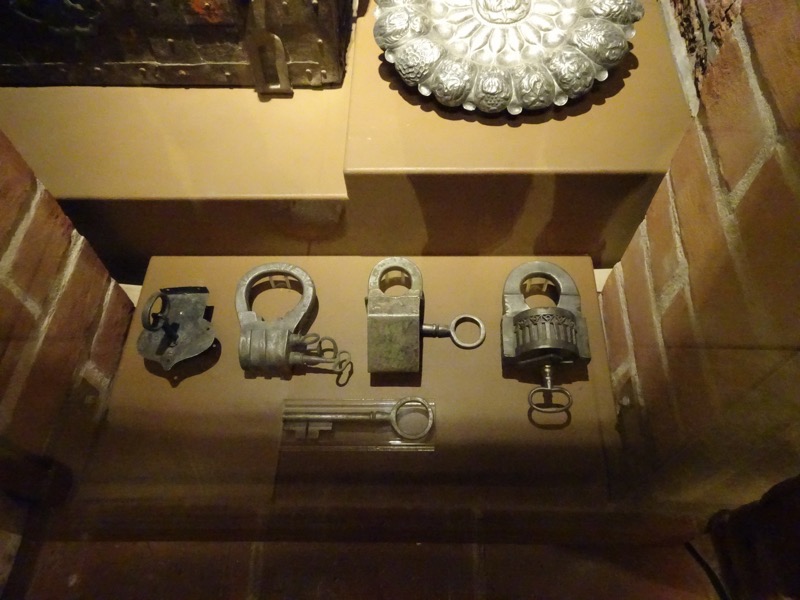 We finished up at St Basil’s around 2pm, I could have spent all day in there discovering the little chapels and photographing the tiny details of the place – but my camera battery went flat and I had to go find a cord so I could charge it over lunch. After we did this, we were having a slight change of pace and heading for the Memorial Museum of Cosmonautics which meant – hitting the Metro! Since we were going to be using the subway, we had looked up where some of the most beautiful and famous Metro stations were and circuitously planned our route to the Cosmonaut Museum via these stops.
We finished up at St Basil’s around 2pm, I could have spent all day in there discovering the little chapels and photographing the tiny details of the place – but my camera battery went flat and I had to go find a cord so I could charge it over lunch. After we did this, we were having a slight change of pace and heading for the Memorial Museum of Cosmonautics which meant – hitting the Metro! Since we were going to be using the subway, we had looked up where some of the most beautiful and famous Metro stations were and circuitously planned our route to the Cosmonaut Museum via these stops.
I will come back and label these pictures with the names of the stations that they were at… but off the top of my head – I can’t remember where the names at all!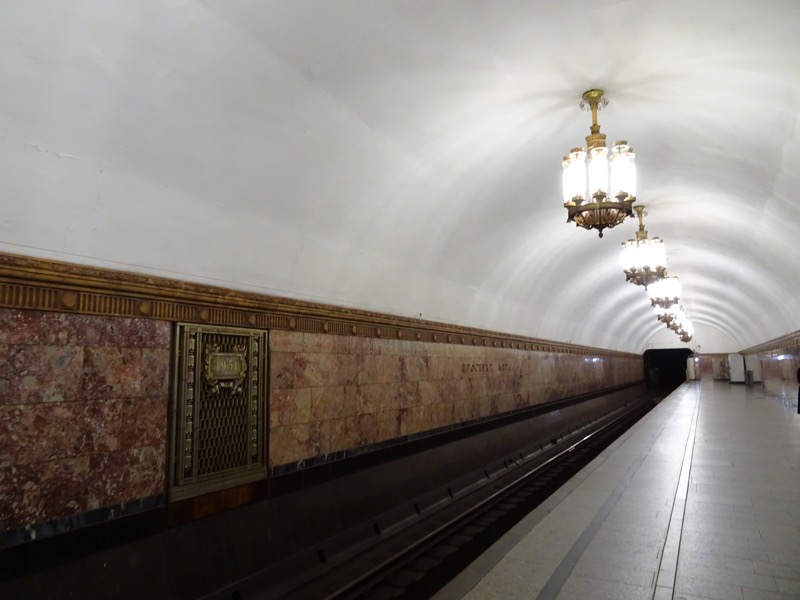
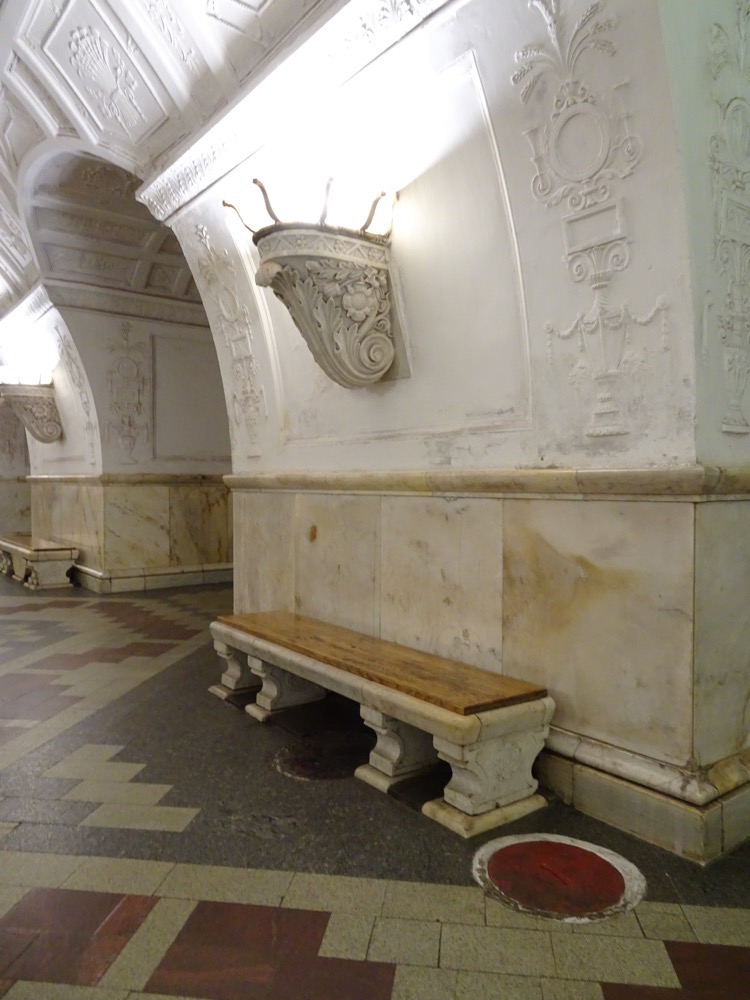
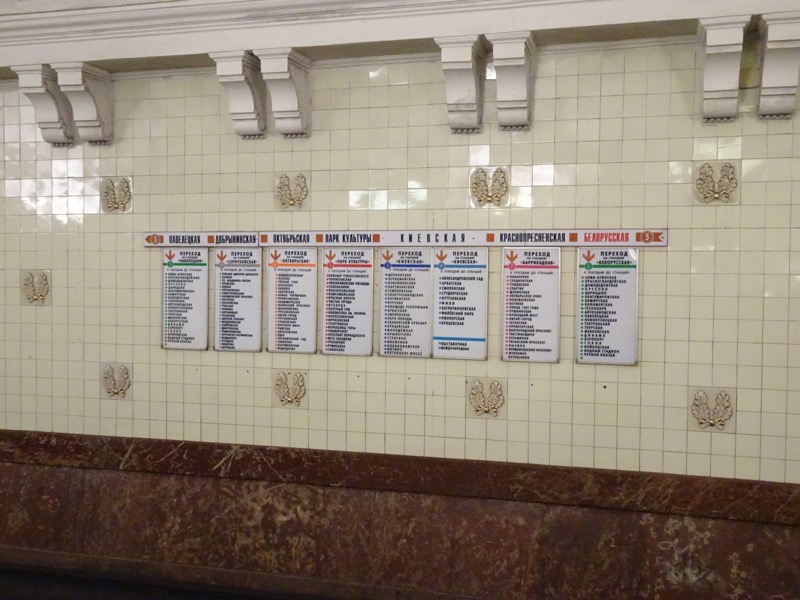
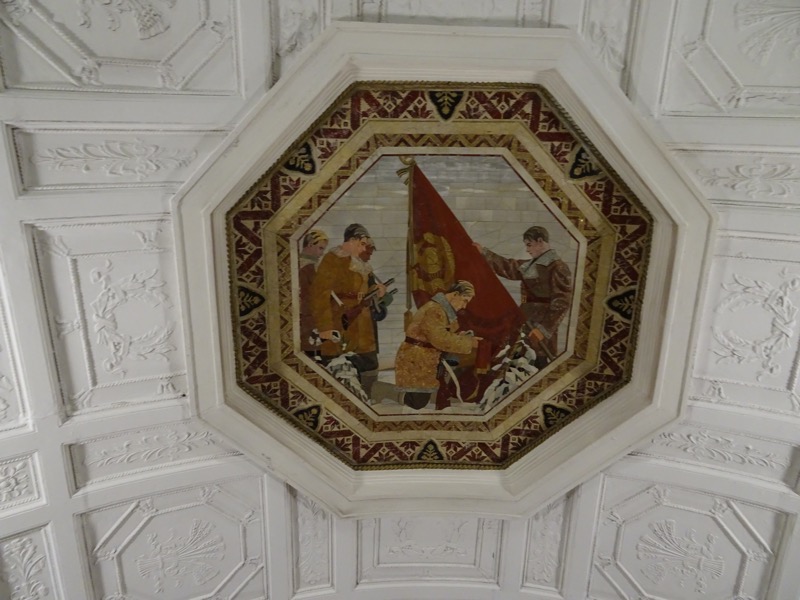
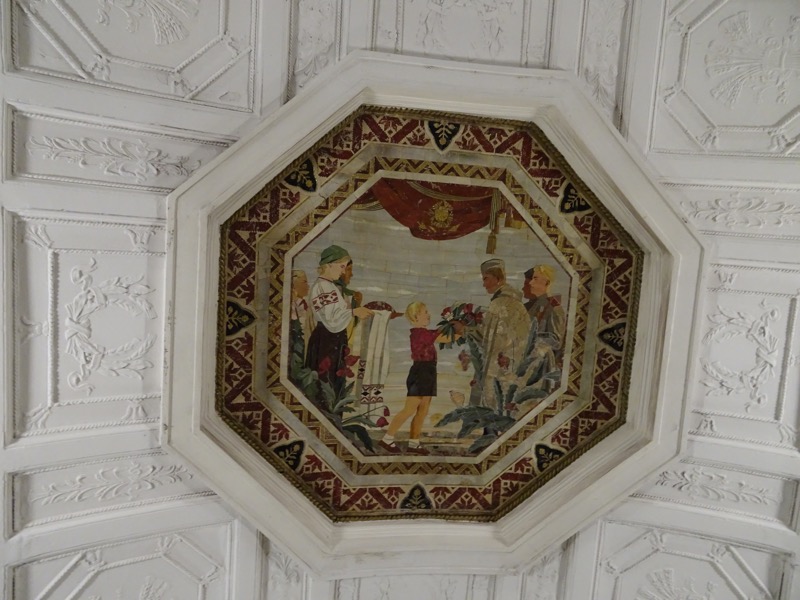
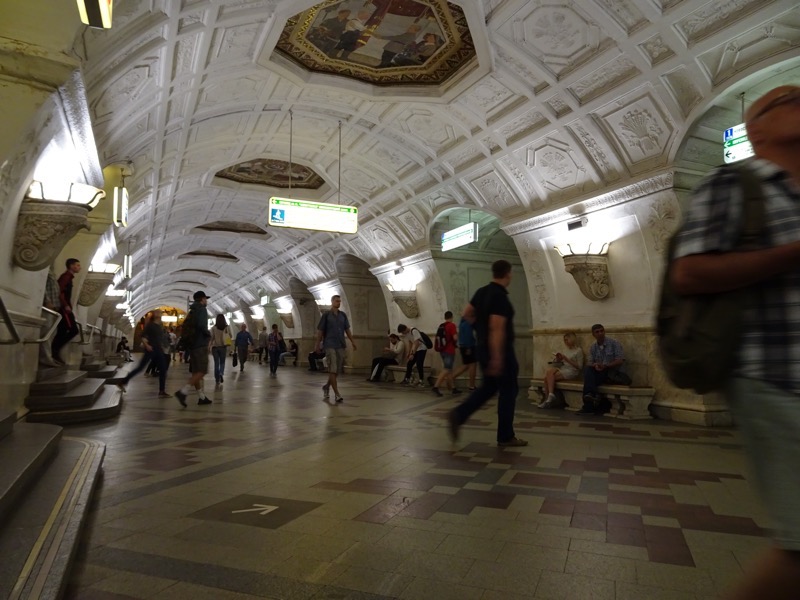
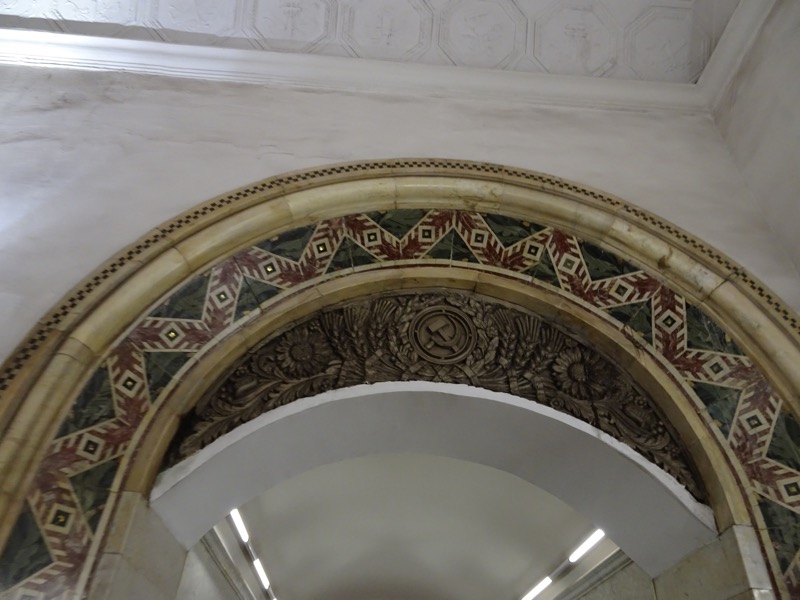
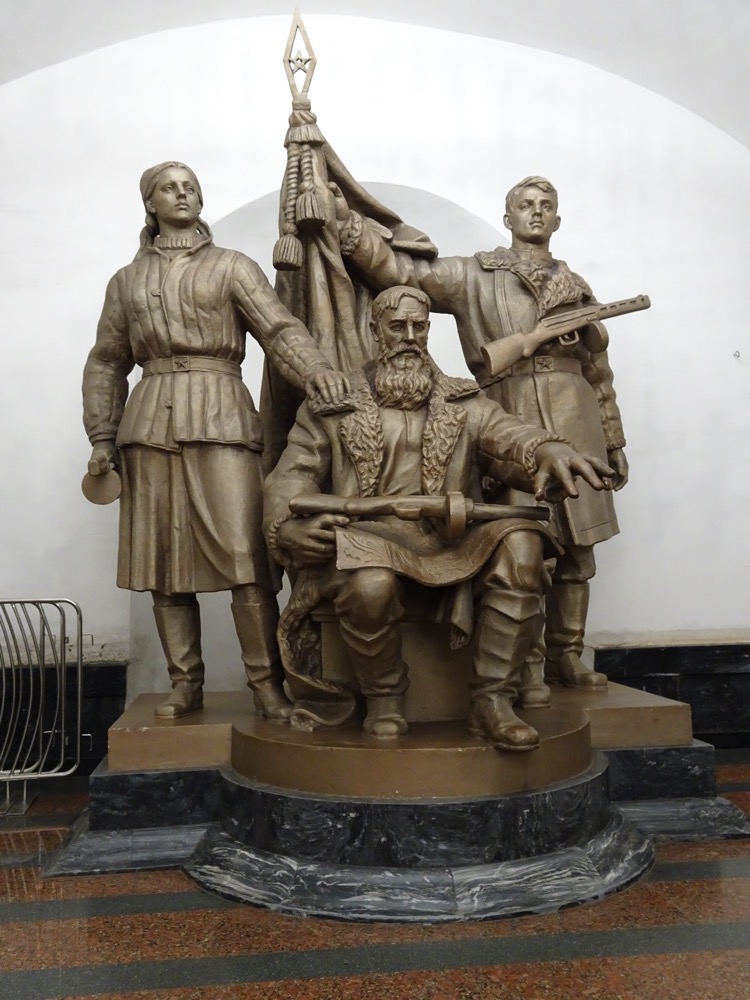
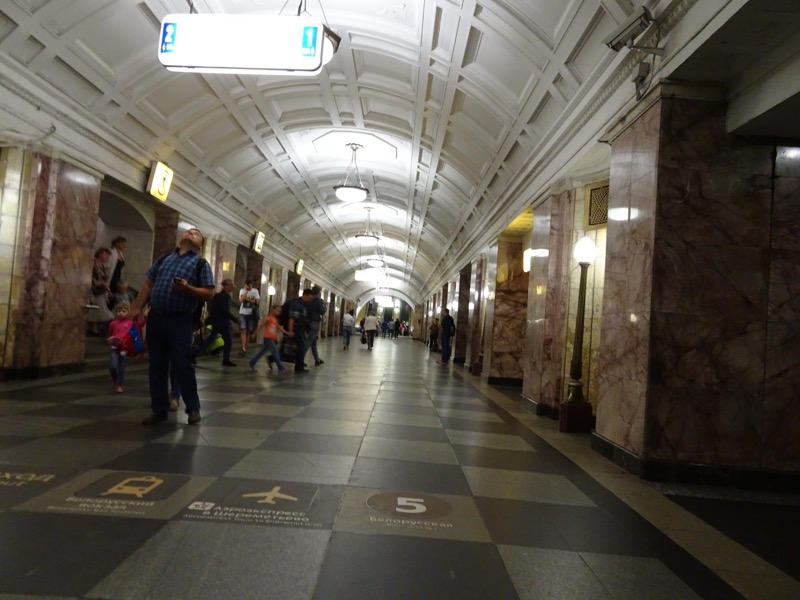
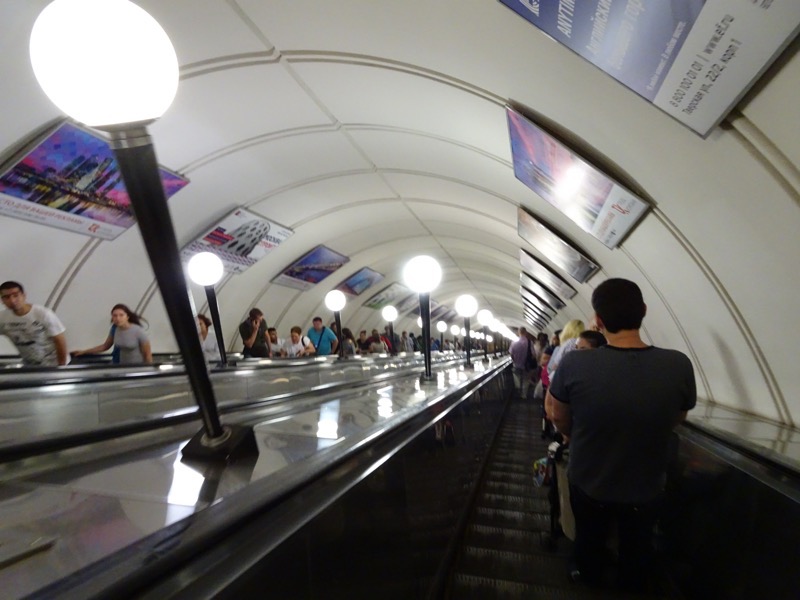
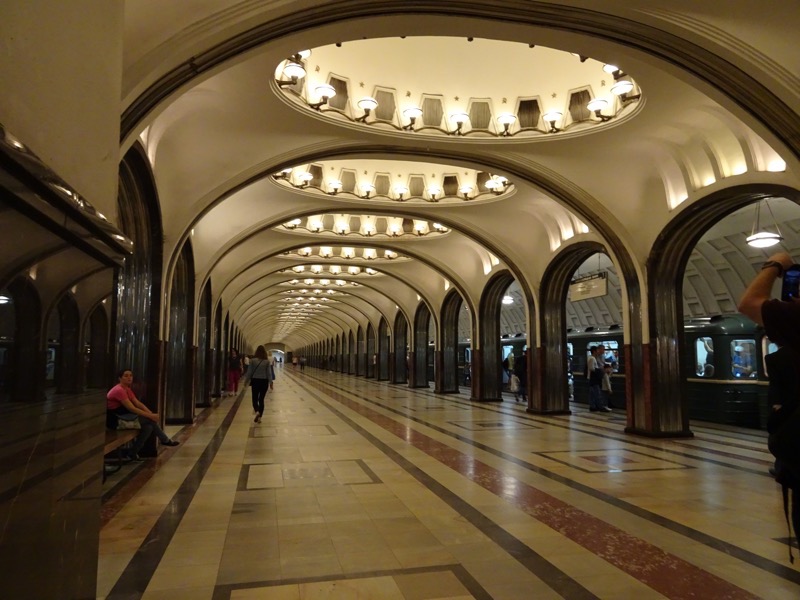
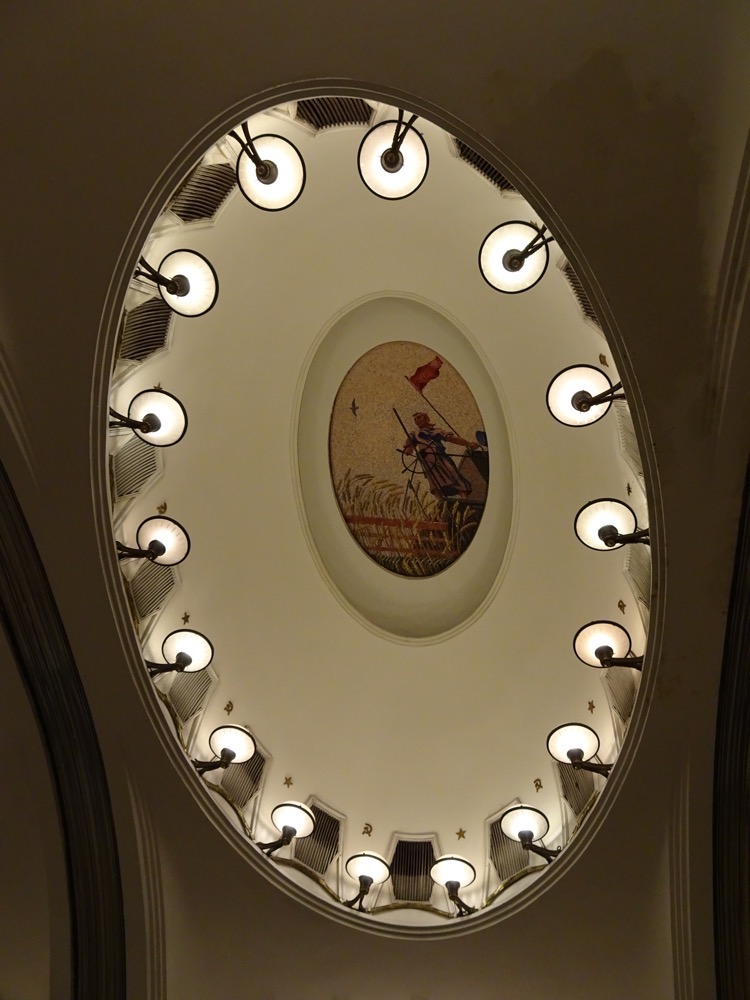 So after our train adventures, we make it to the Cosmonauts Museum… which is probably all very exciting, but it turns out the bulk of the information available here is in Russian! I guess they don’t get many foreign tourists here either, as they were out of English audio guides. :/ Oh well, I have a bunch of photos so am adding them to a gallery here… Many of you may know more about all this than do!
So after our train adventures, we make it to the Cosmonauts Museum… which is probably all very exciting, but it turns out the bulk of the information available here is in Russian! I guess they don’t get many foreign tourists here either, as they were out of English audio guides. :/ Oh well, I have a bunch of photos so am adding them to a gallery here… Many of you may know more about all this than do!
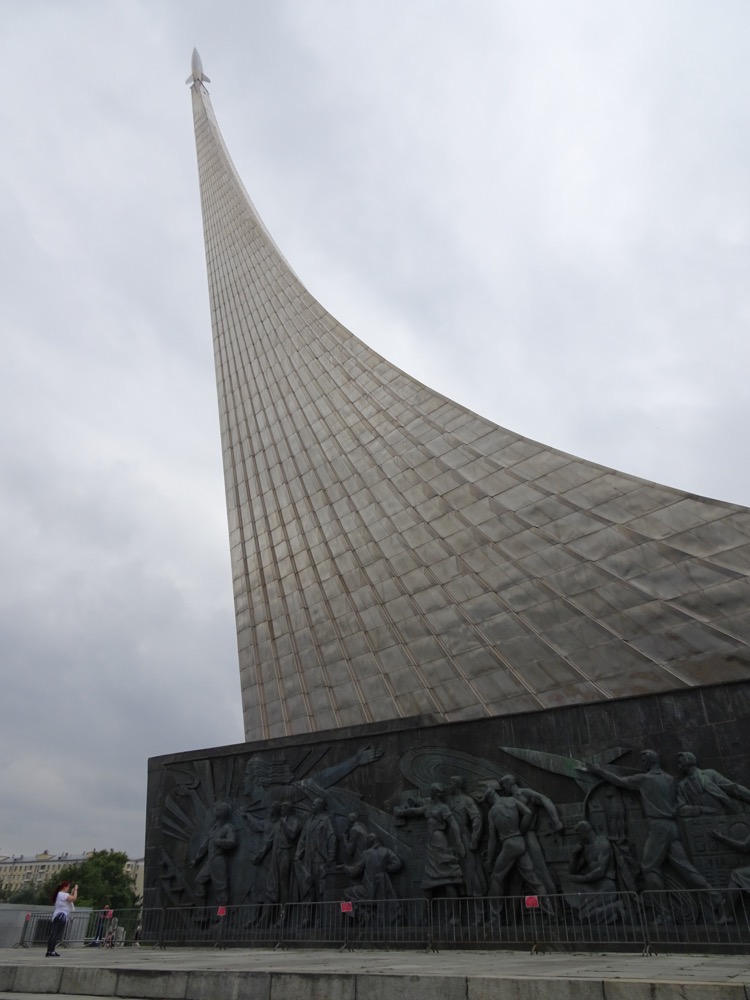
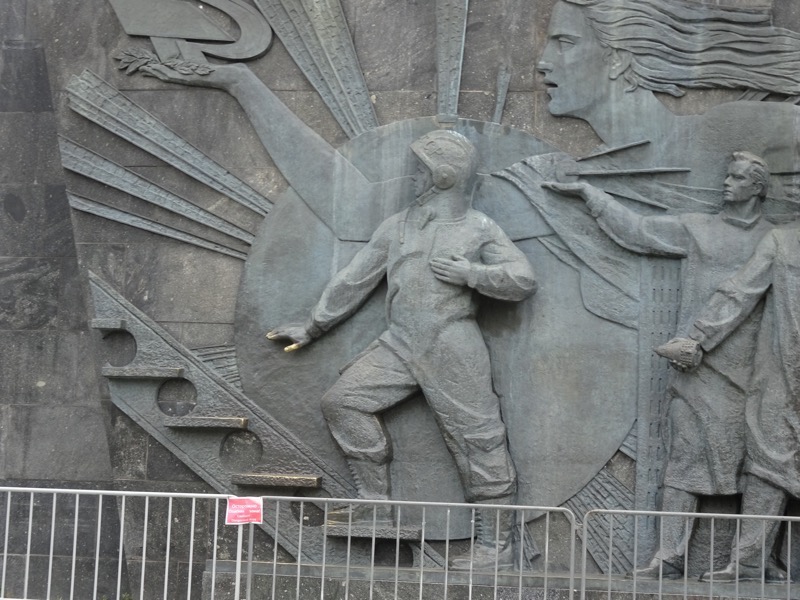
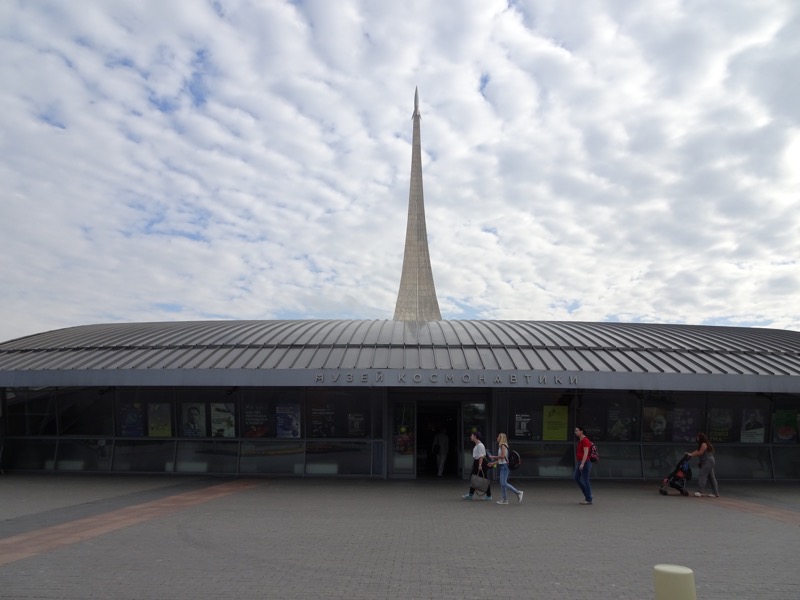
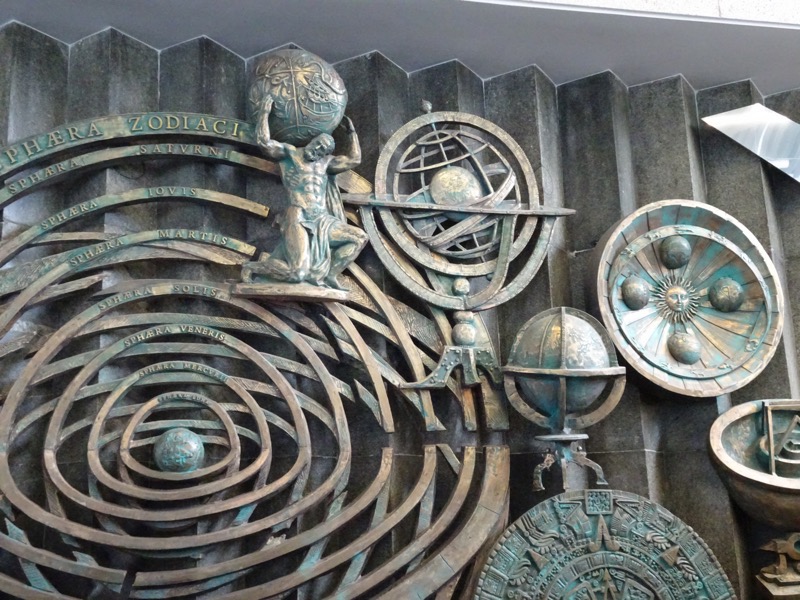

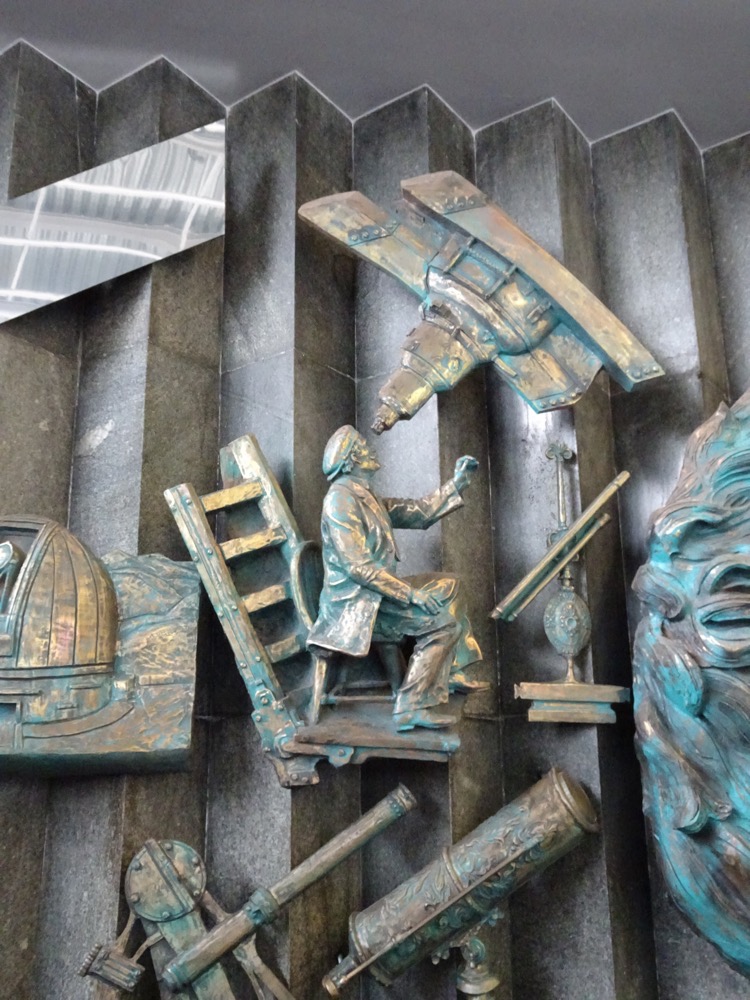
The most interesting thing here (given I couldn’t read anything!) was the puppies in space. These are the actual stuffed puppies who went to space pioneering men being sent into space. Their names are probably google-able, but our google translate we thought would help – but kinda amusingly let us down a little I am sure! 🙂
These are the space dogs. 🙂 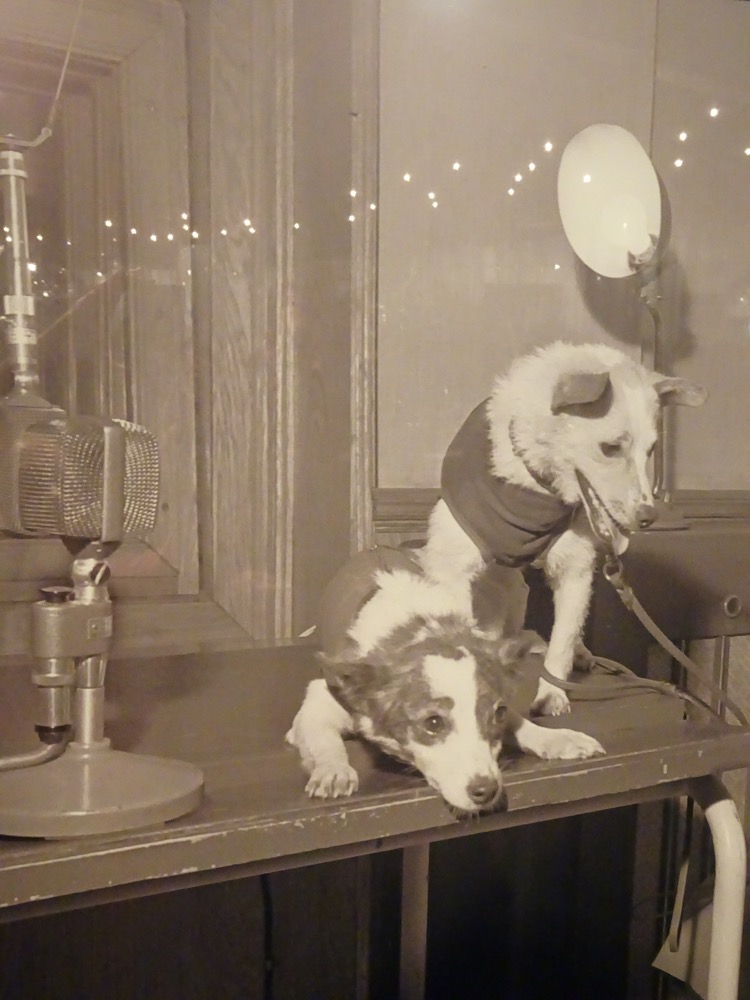 And their space craft…
And their space craft…
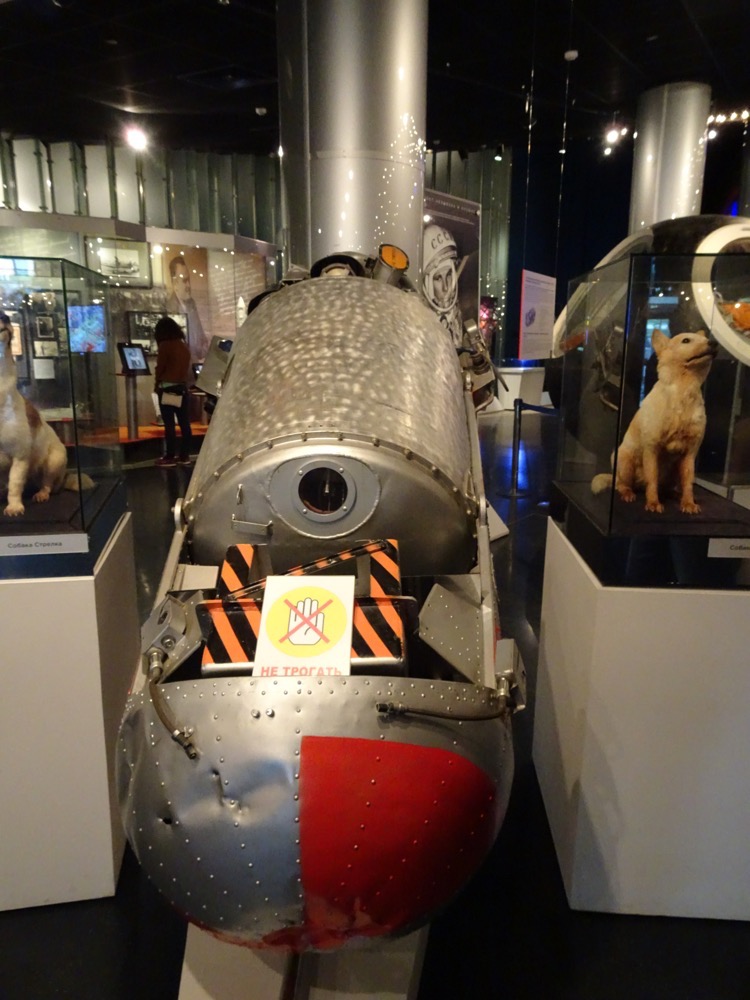
 And what Russian Cosmonautics Museum would be complete without a mixed genre modern art exhibition in a random corridor!
And what Russian Cosmonautics Museum would be complete without a mixed genre modern art exhibition in a random corridor!
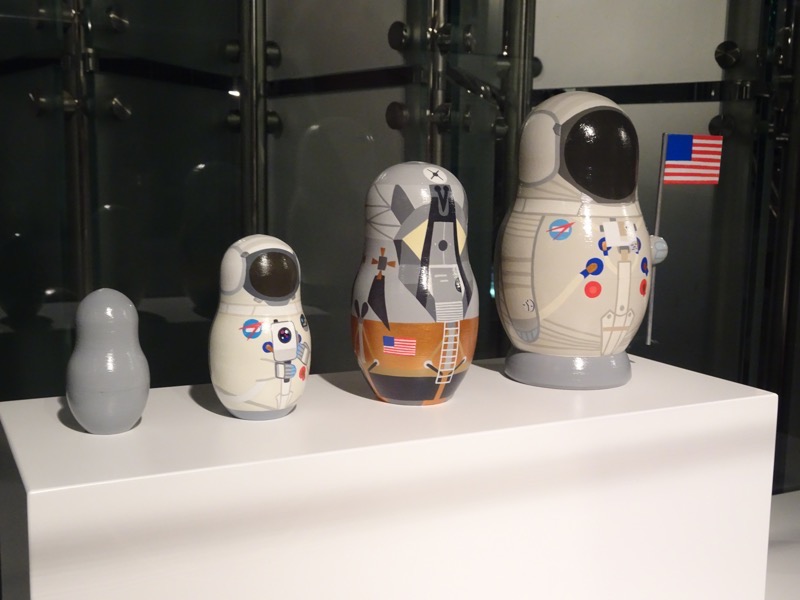
So, our plan after this was to go back to the hotel for a break, then head to town for dinner near the GVM… but instead I got side tracked by a fur store, and then we decided that 15kms and 14 hours on our feet was more than enough so we pulled the pin, called it a day and set about planning tomorrow!
I’m really, really tired and there’s still so much to see!
Sorry for so many images… #sorrynotsorry

